Larynx
1/113
There's no tags or description
Looks like no tags are added yet.
Name | Mastery | Learn | Test | Matching | Spaced |
|---|
No study sessions yet.
114 Terms
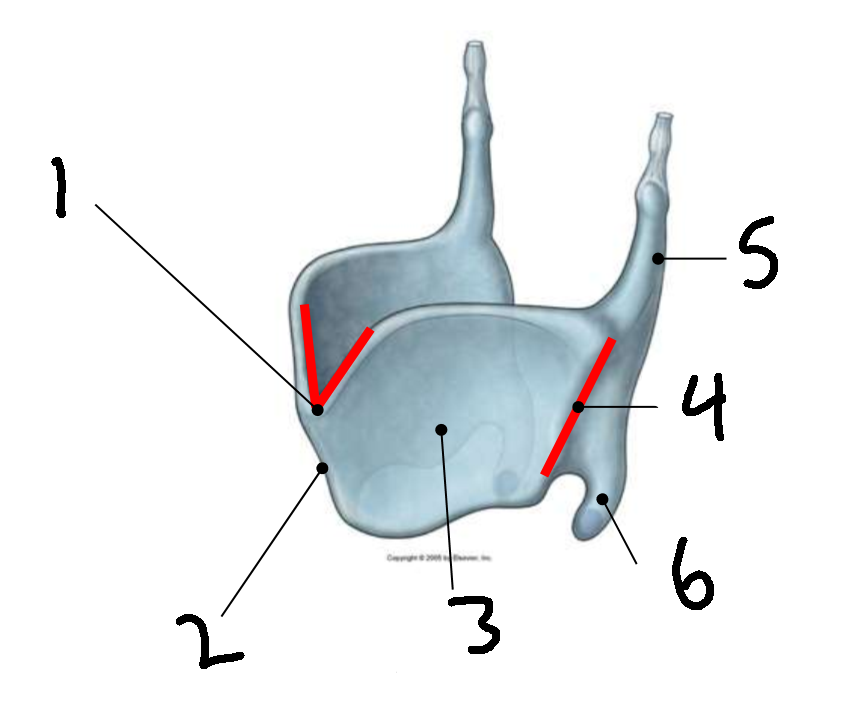
What is this?
thyroid cartilage
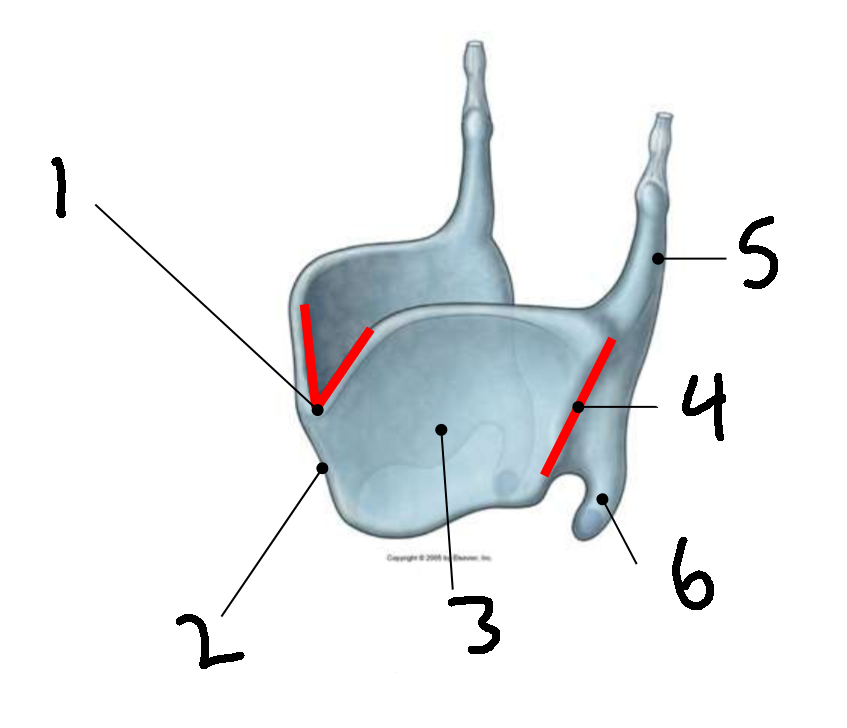
What is 1?
superior thyroid notch
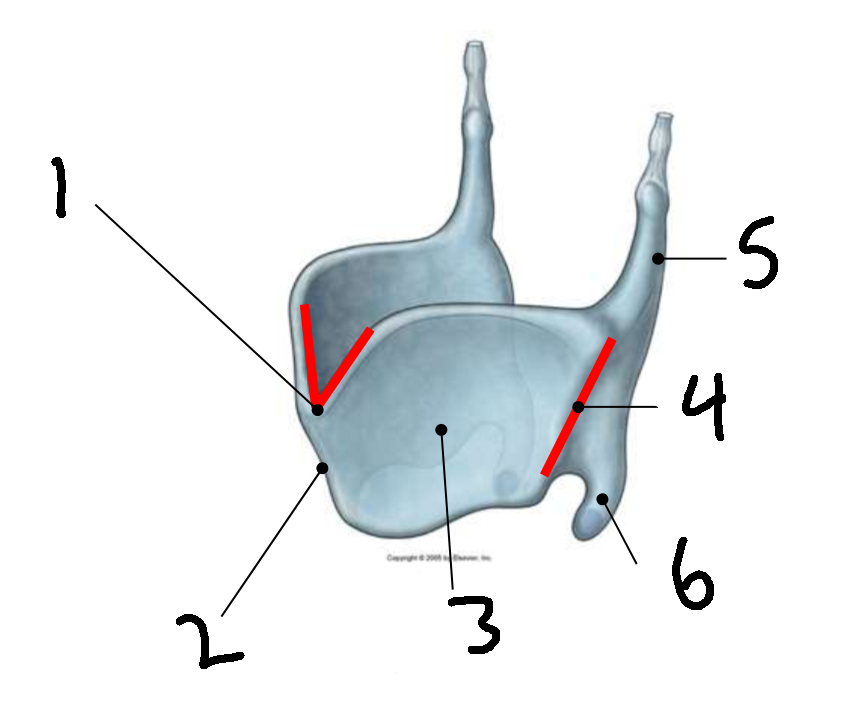
What is 2?
laryngeal prominence

What is 3?
lamina
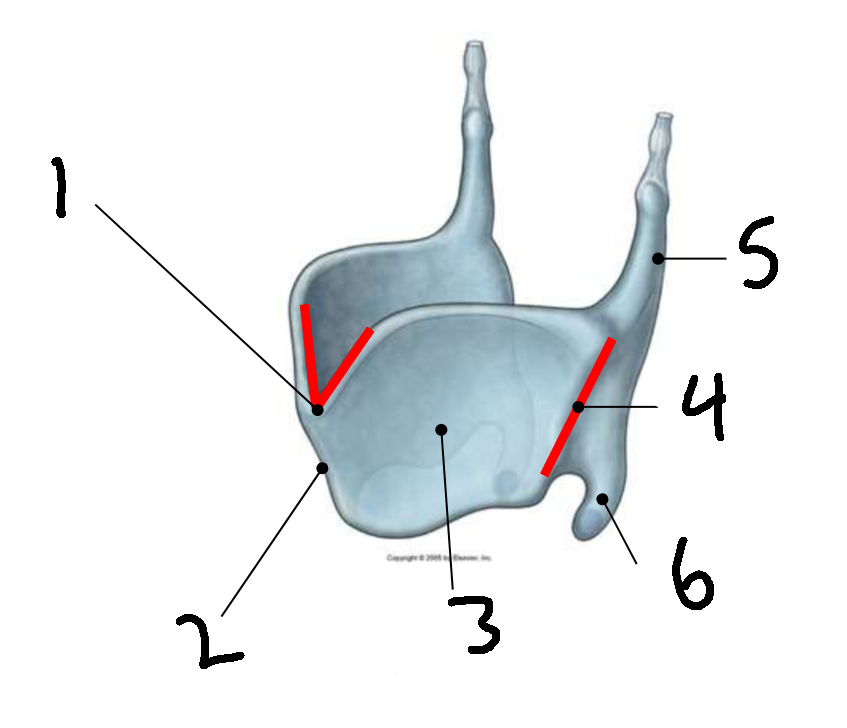
What is 4?
oblique line
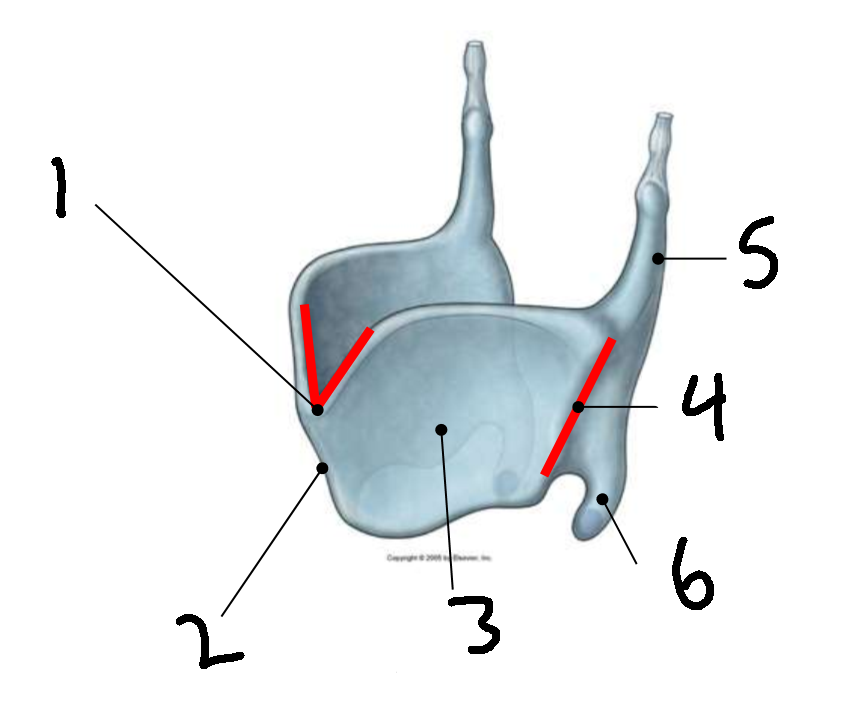
What is 5?
superior horn

What is 6?
inferior horn
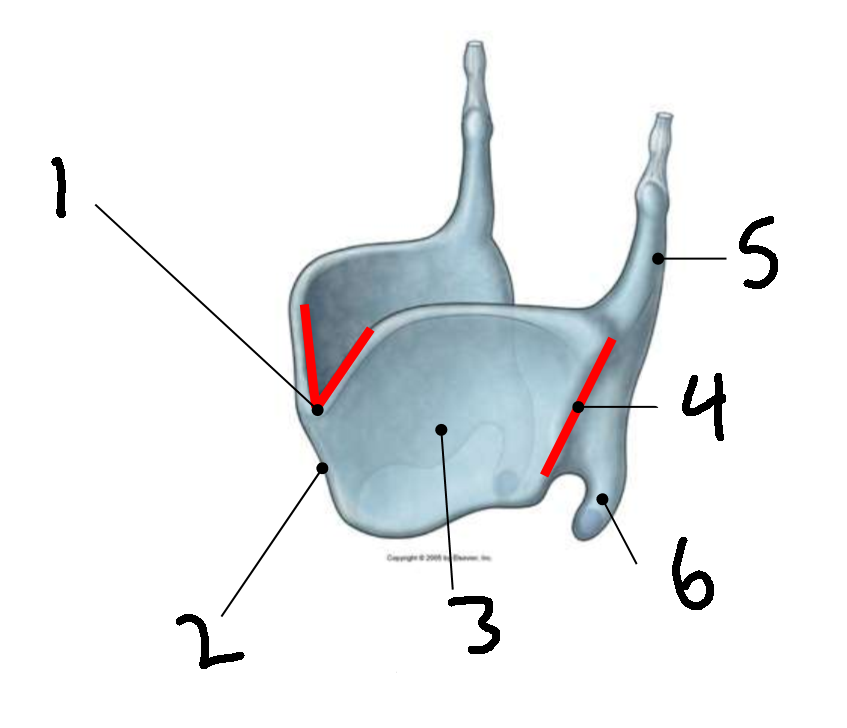
What attaches to 4?
extrinsic muscles of the larynx
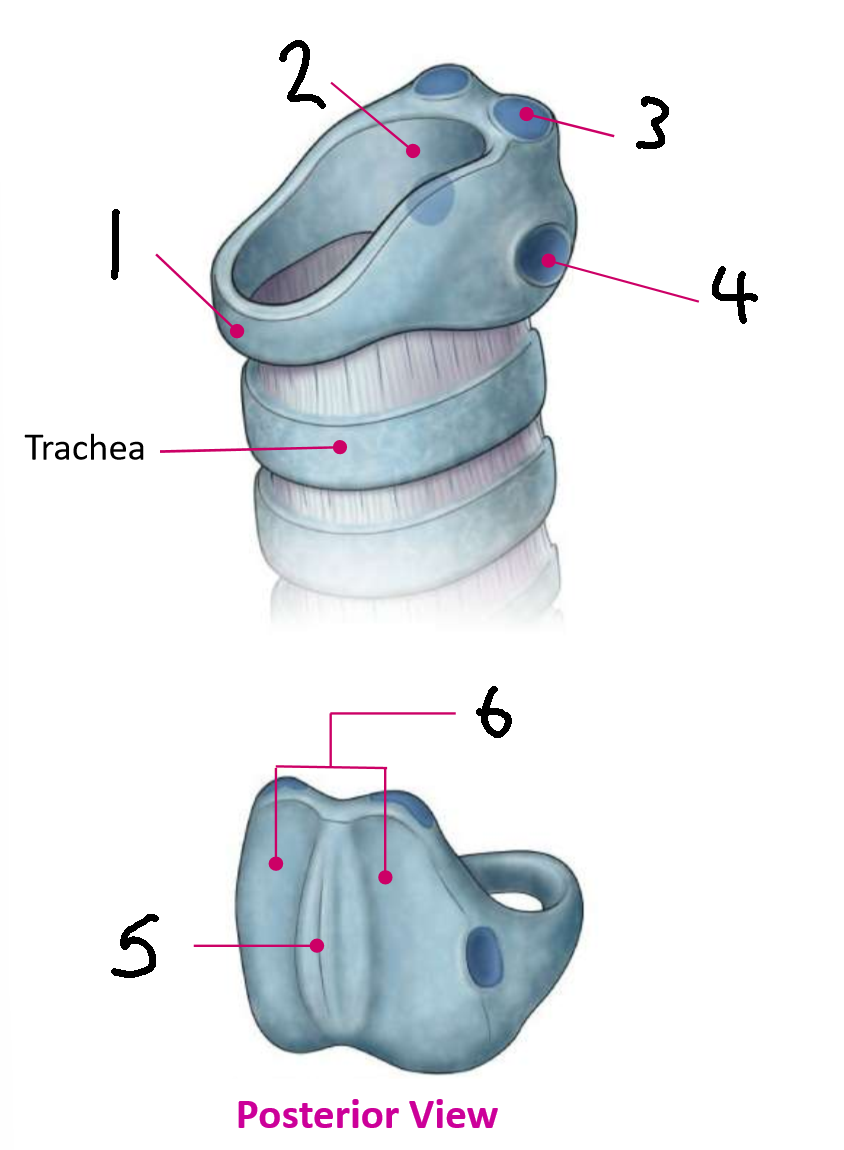
What is this?
cricoid cartilage

What is 1?
cricoid arch

What is 2?
cricoid lamina

What is 3?
superior articulation with arytenoid cartilage
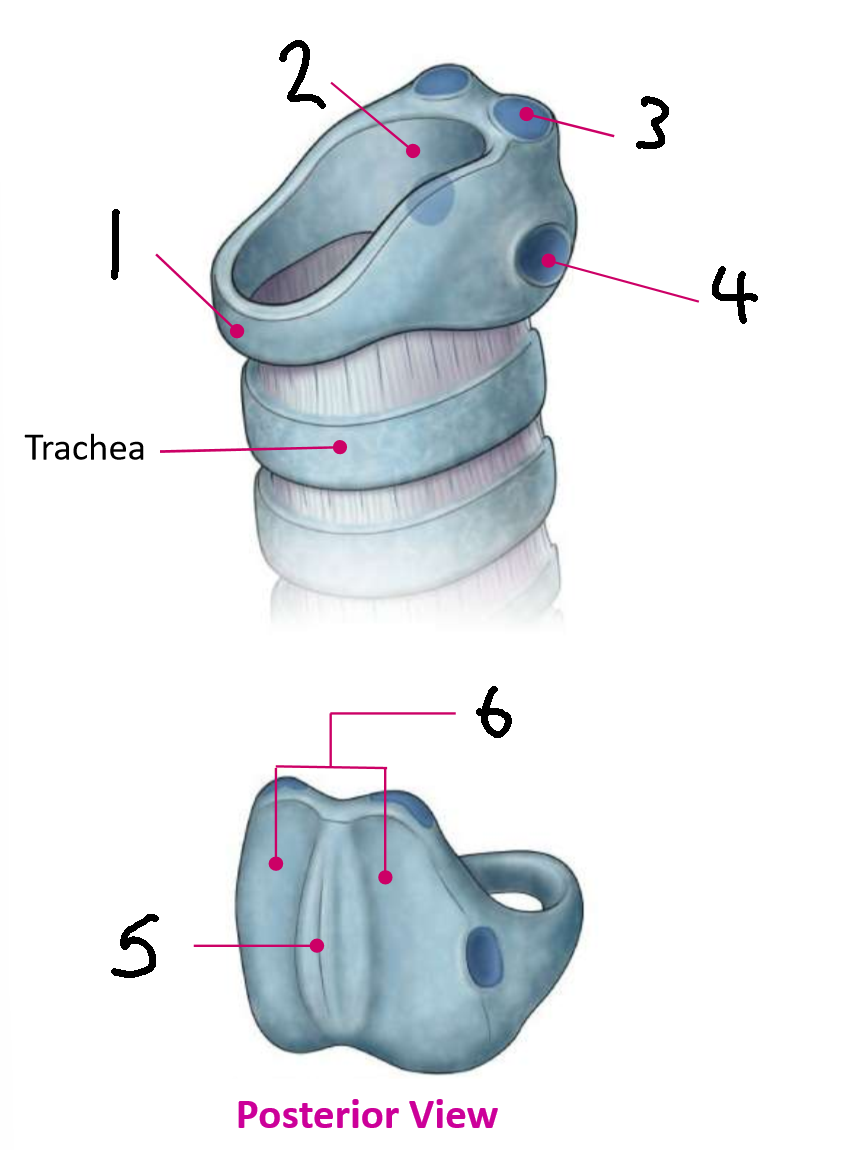
What is 4?
lateral articulation with inferior horn on thyroid cartilage
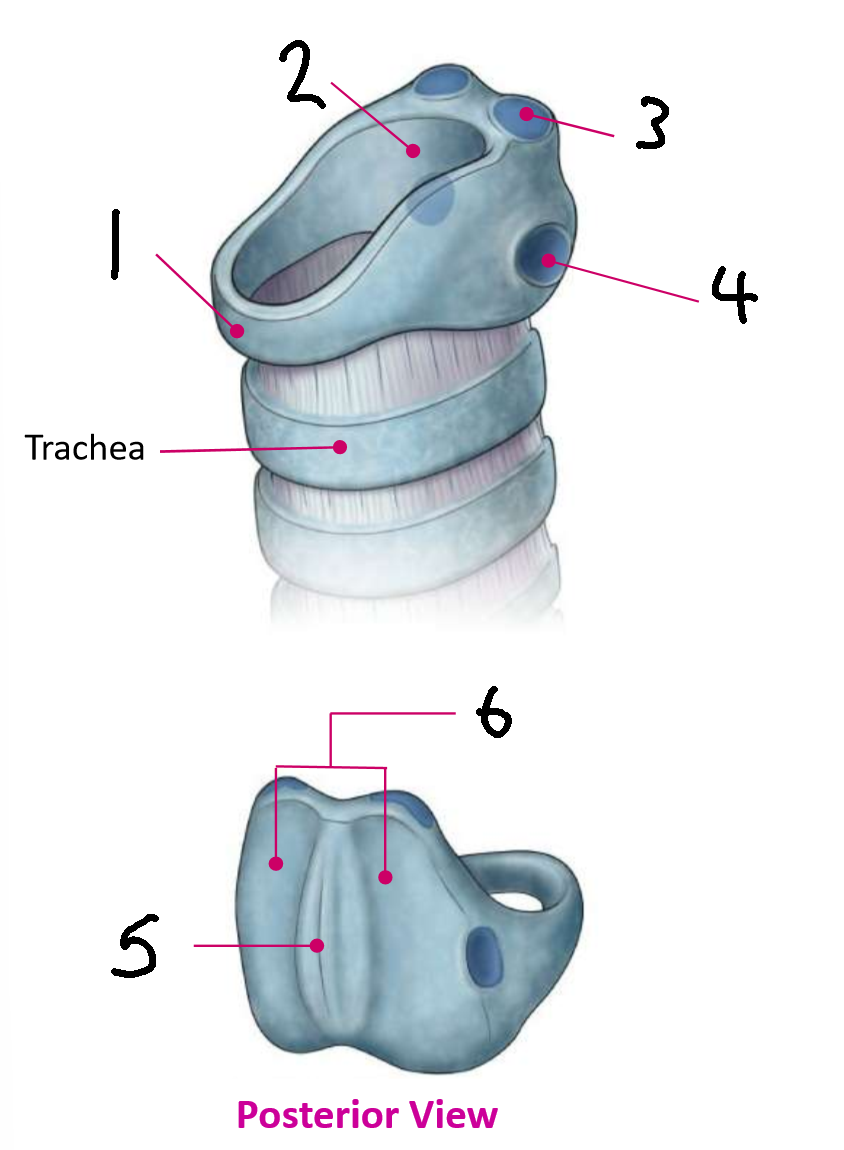
What is 5?
median ridge
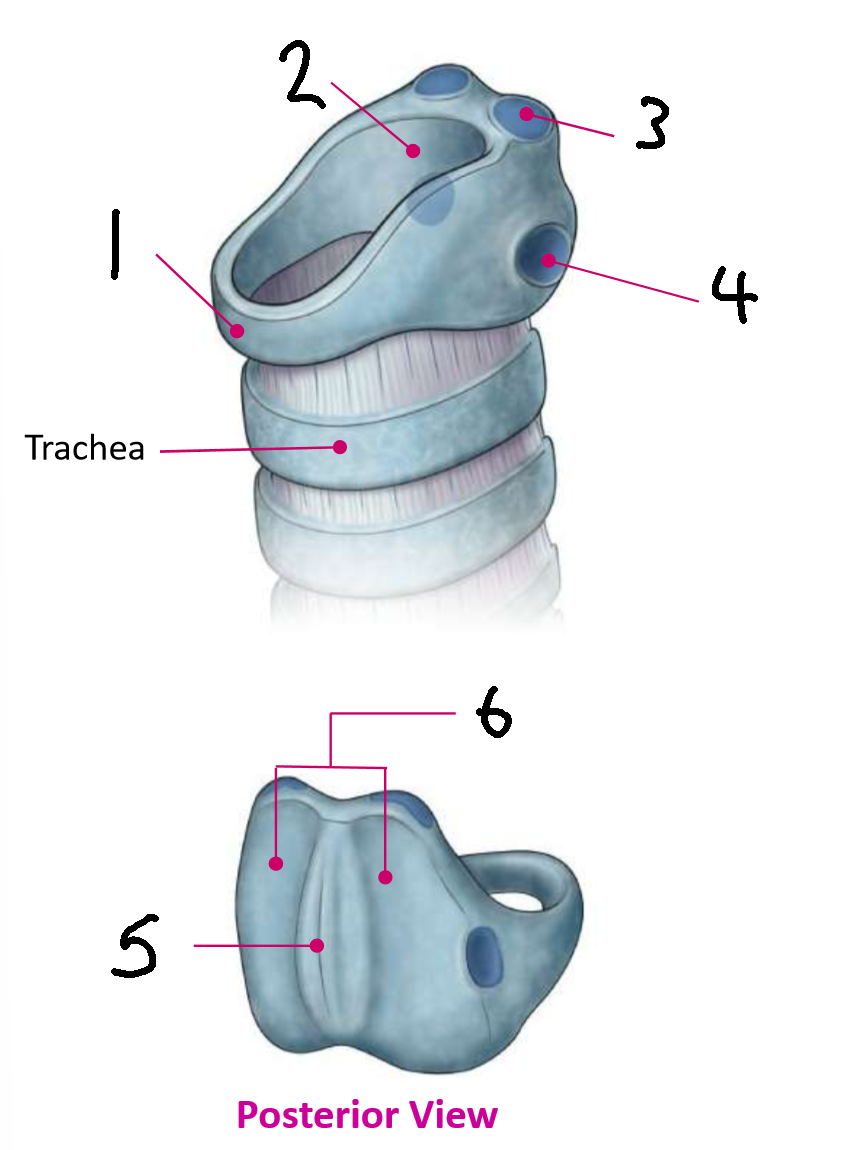
What is 6?
depressions
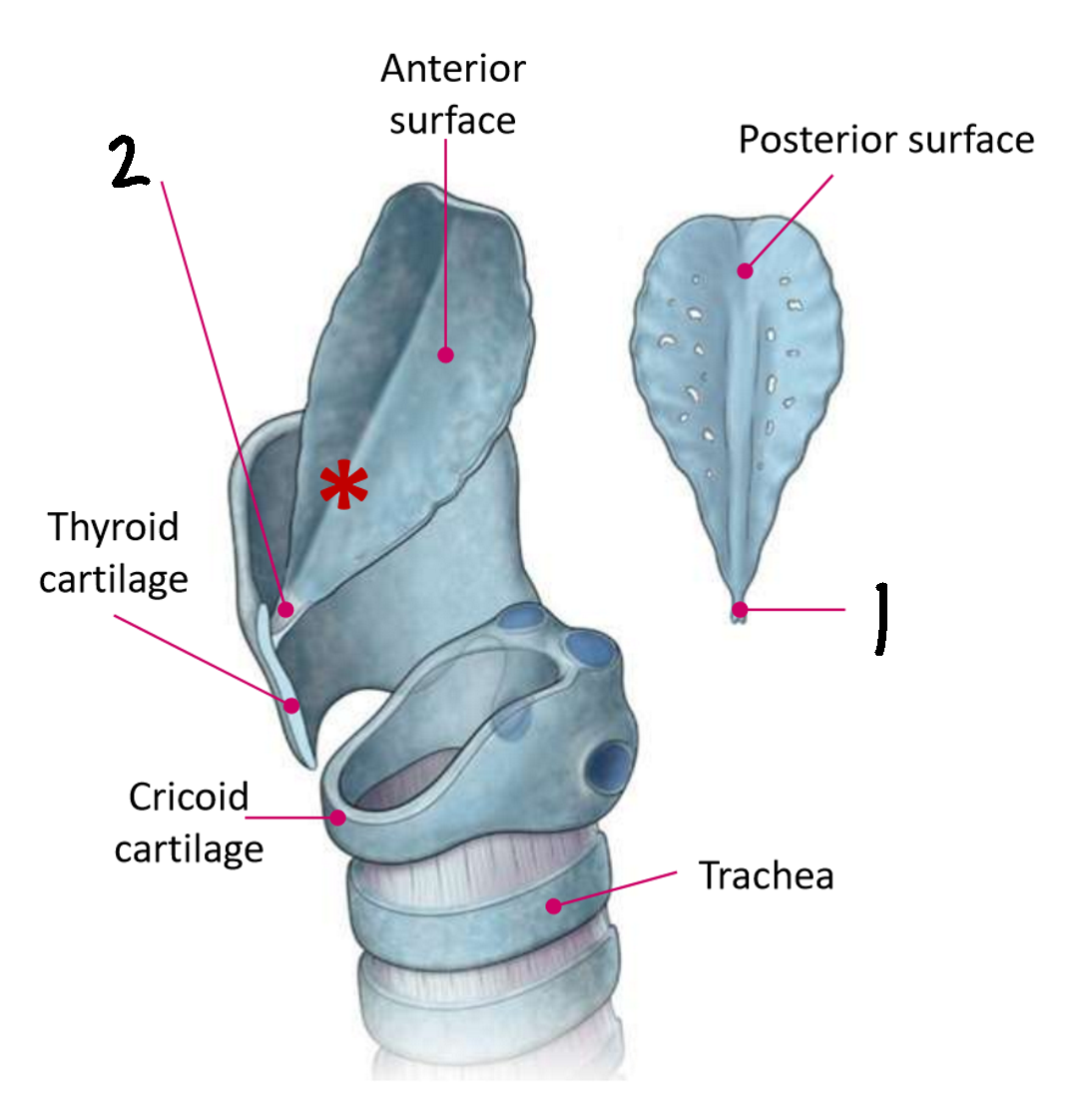
What is this?
epiglottis
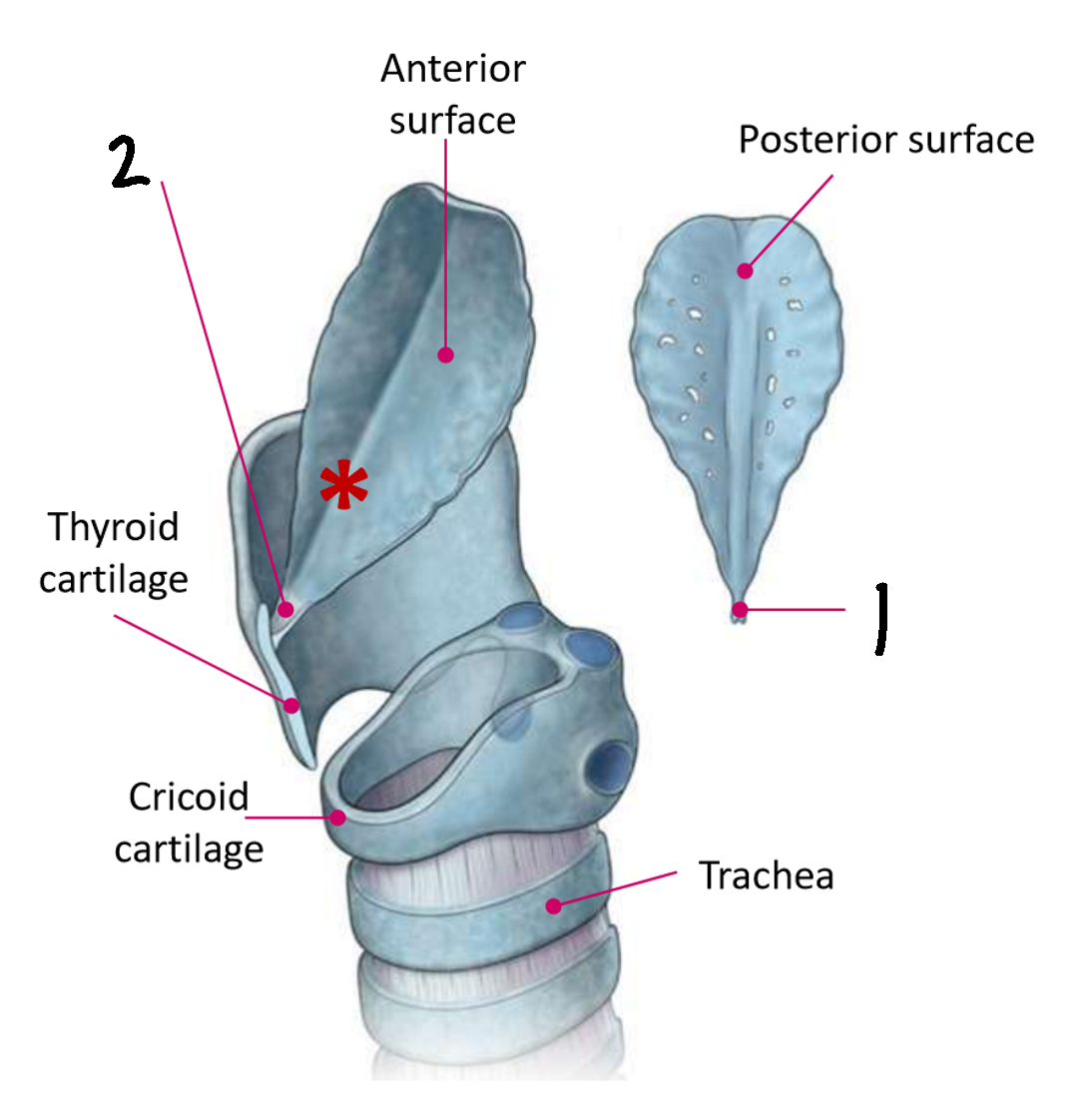
What is this made of?
elastic fibrocartilage

What is 1?
epiglottic stalk
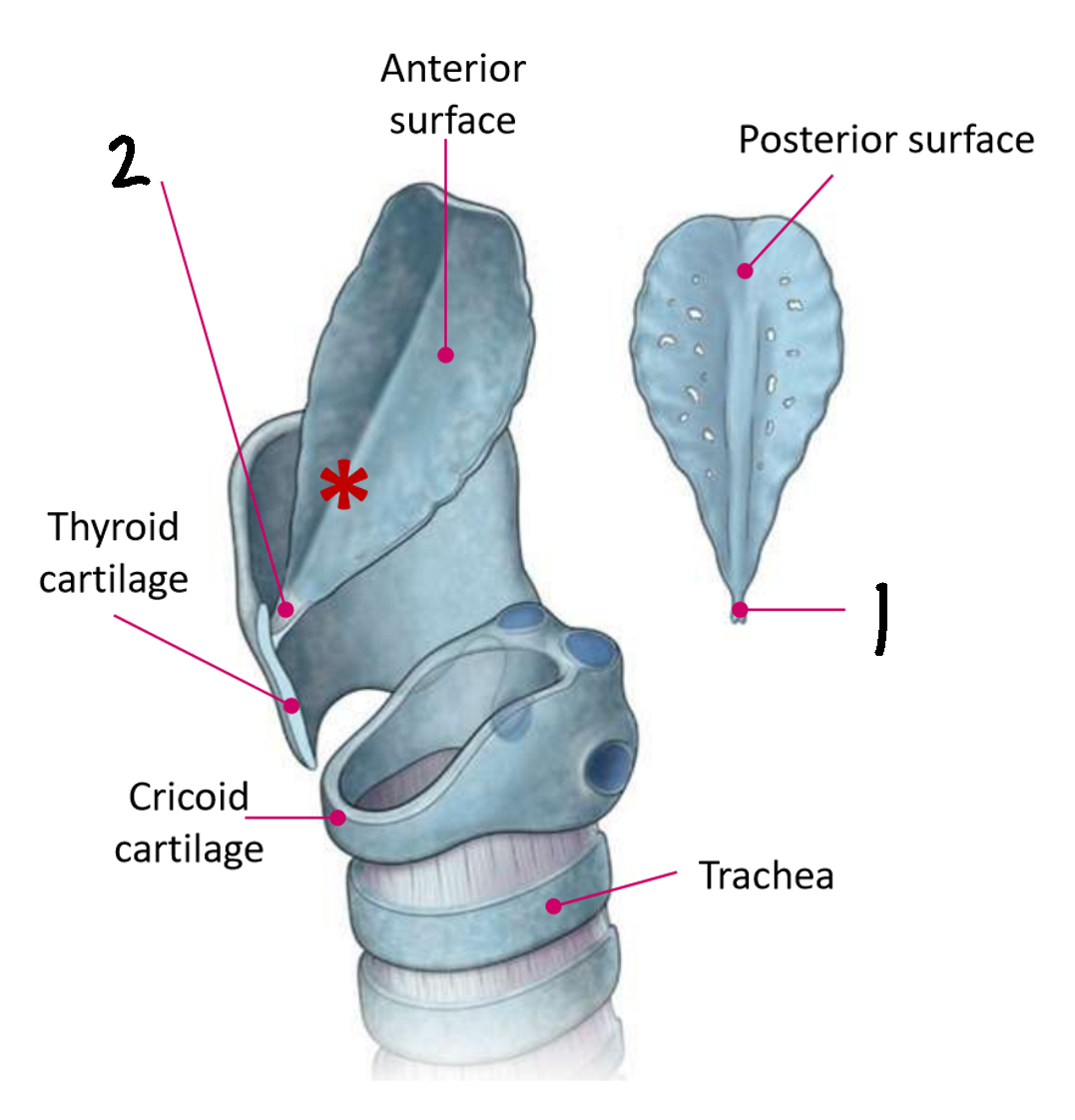
What is 2?
thyroepiglottic ligament
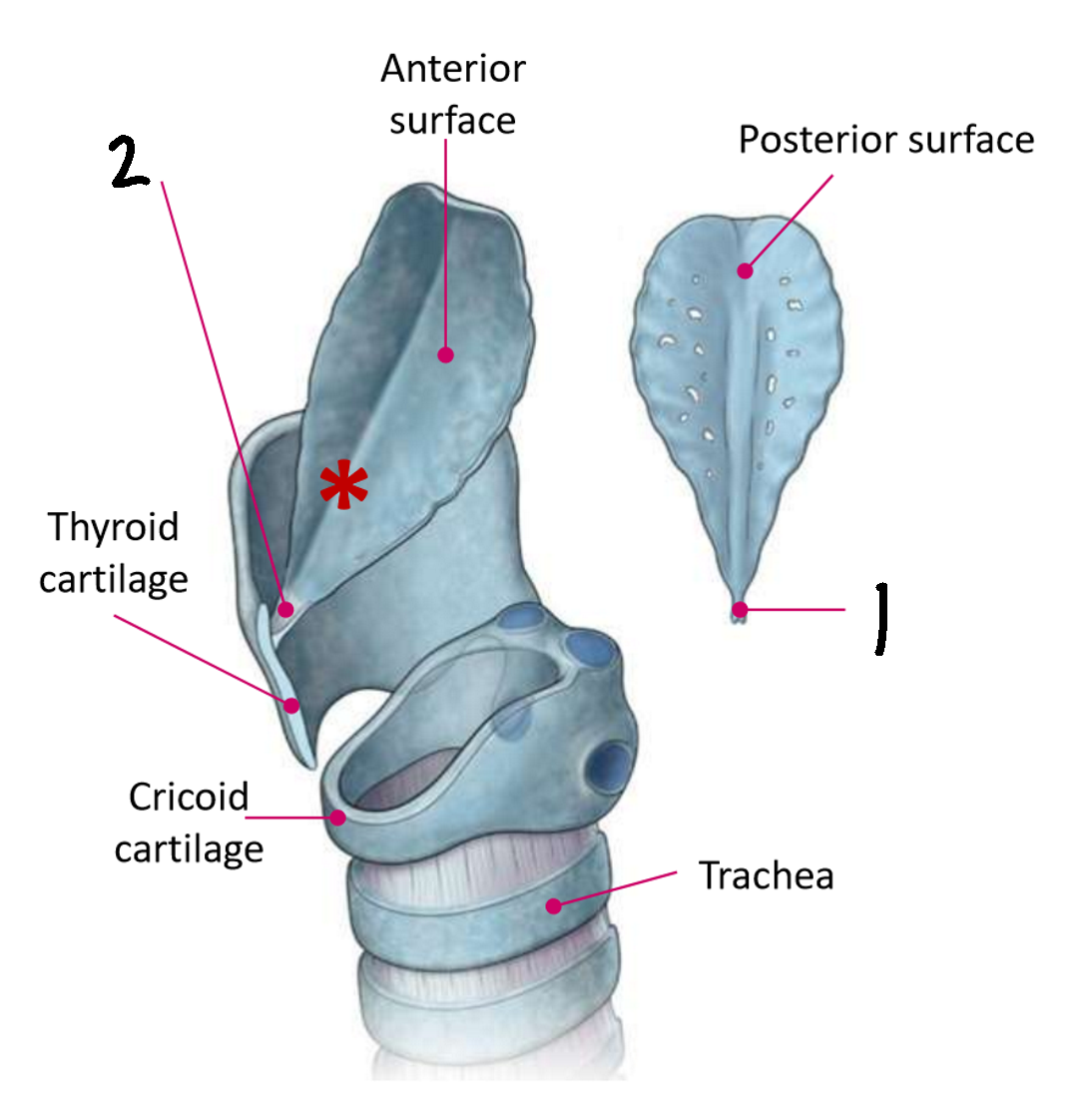
What is *?
hypoepiglottic ligament attachment
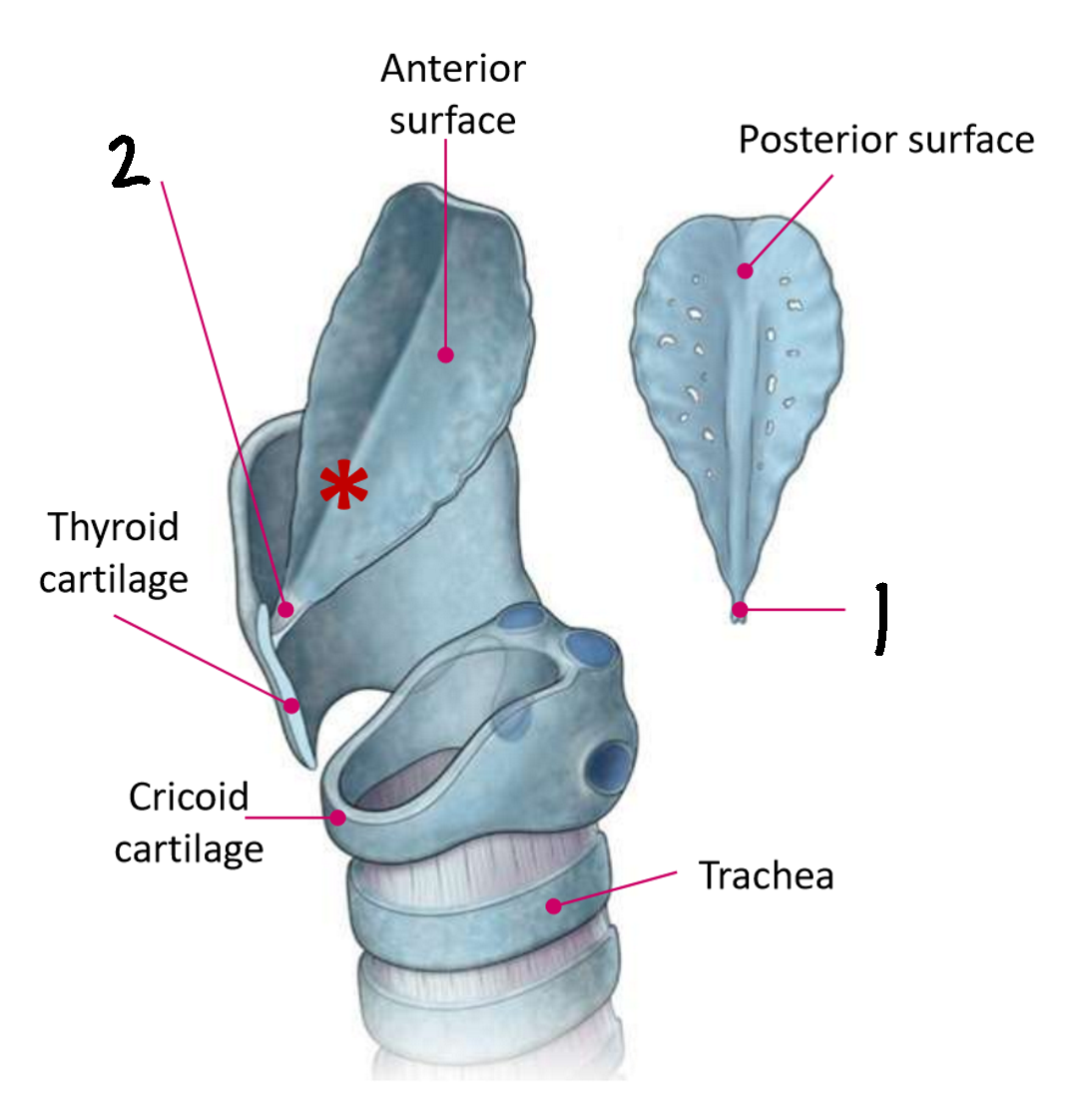
What are the folds in the mucous membrane on the posterior surface called?
median glossoepiglotic fold
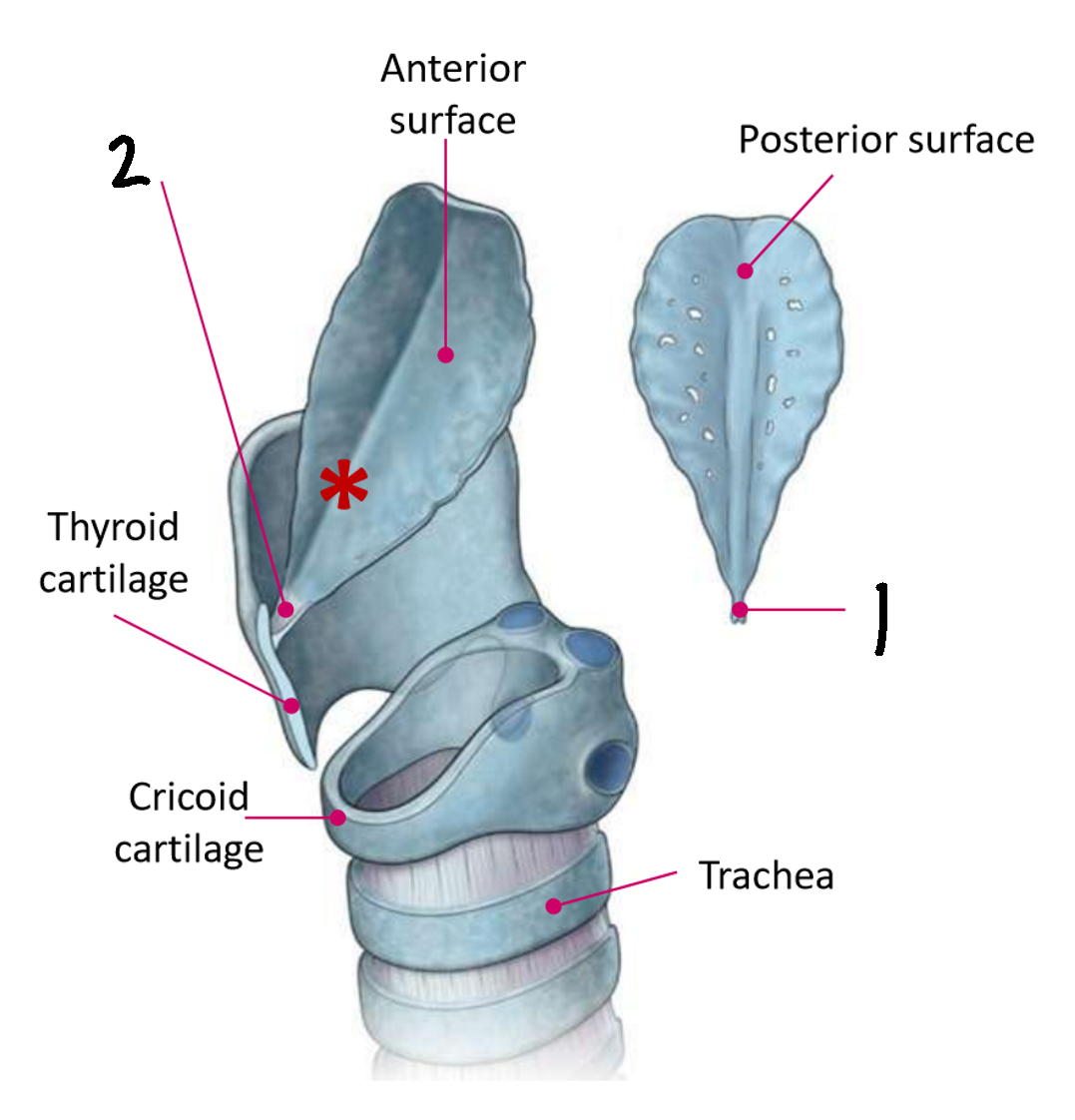
What are the small depressions either side of the glossoepiglotic fold called?
vallecula
What are the 2 parts of the fibroelastic membrane of the larynx?
upper quadrangular membrane, lower cricothyroid membrane
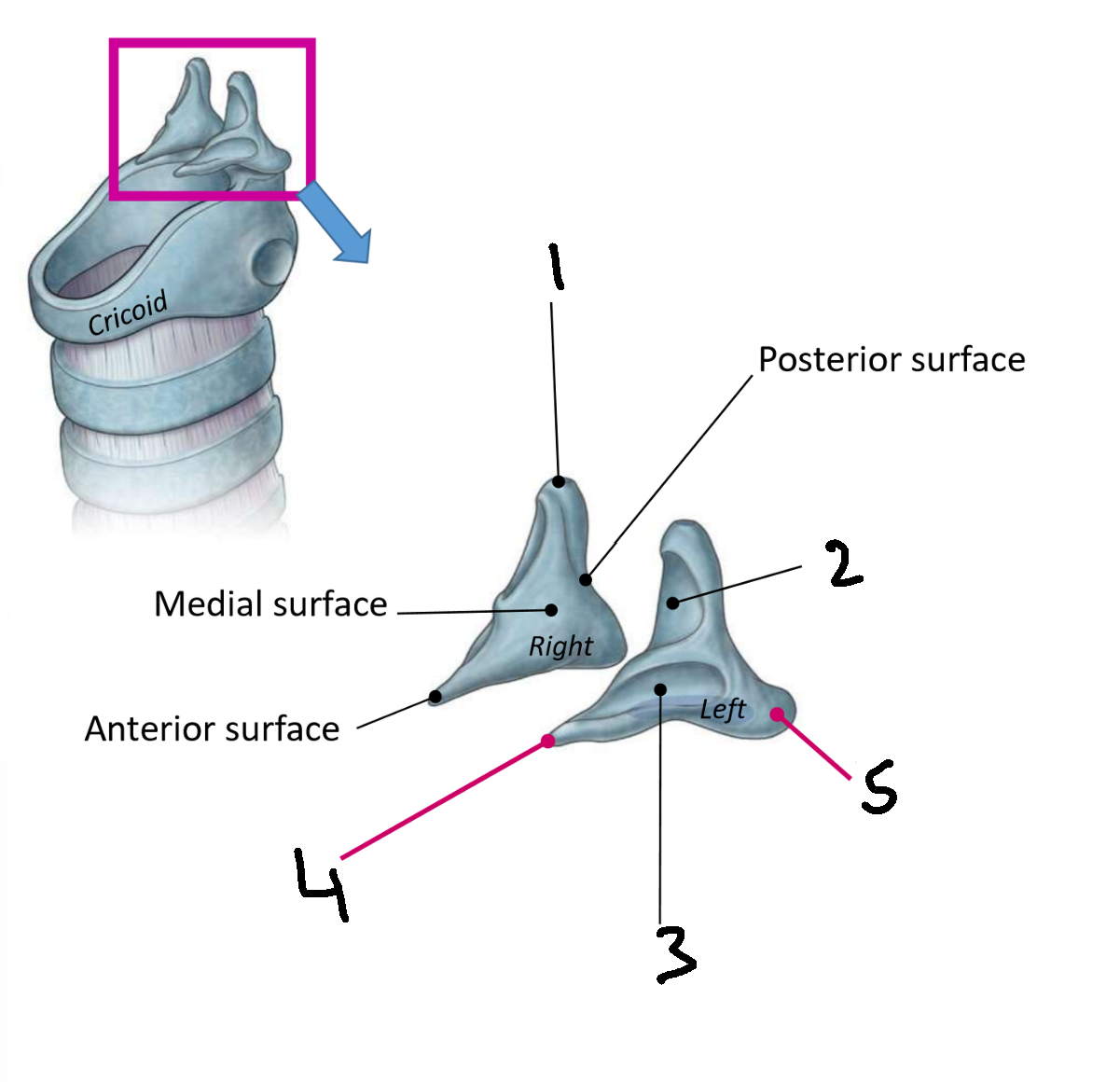
What are these?
arytenoid cartilages
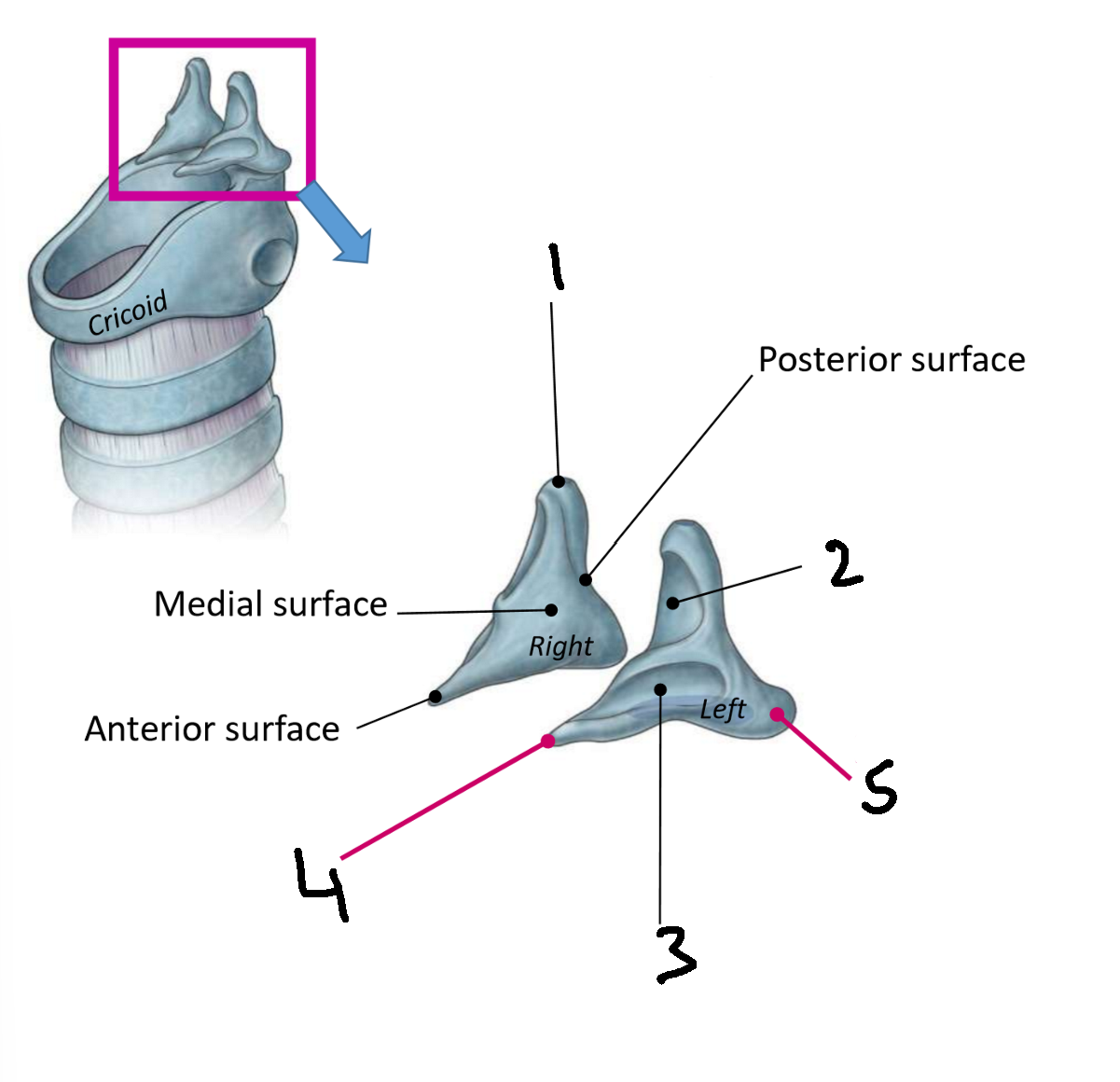
What is 1?
apex
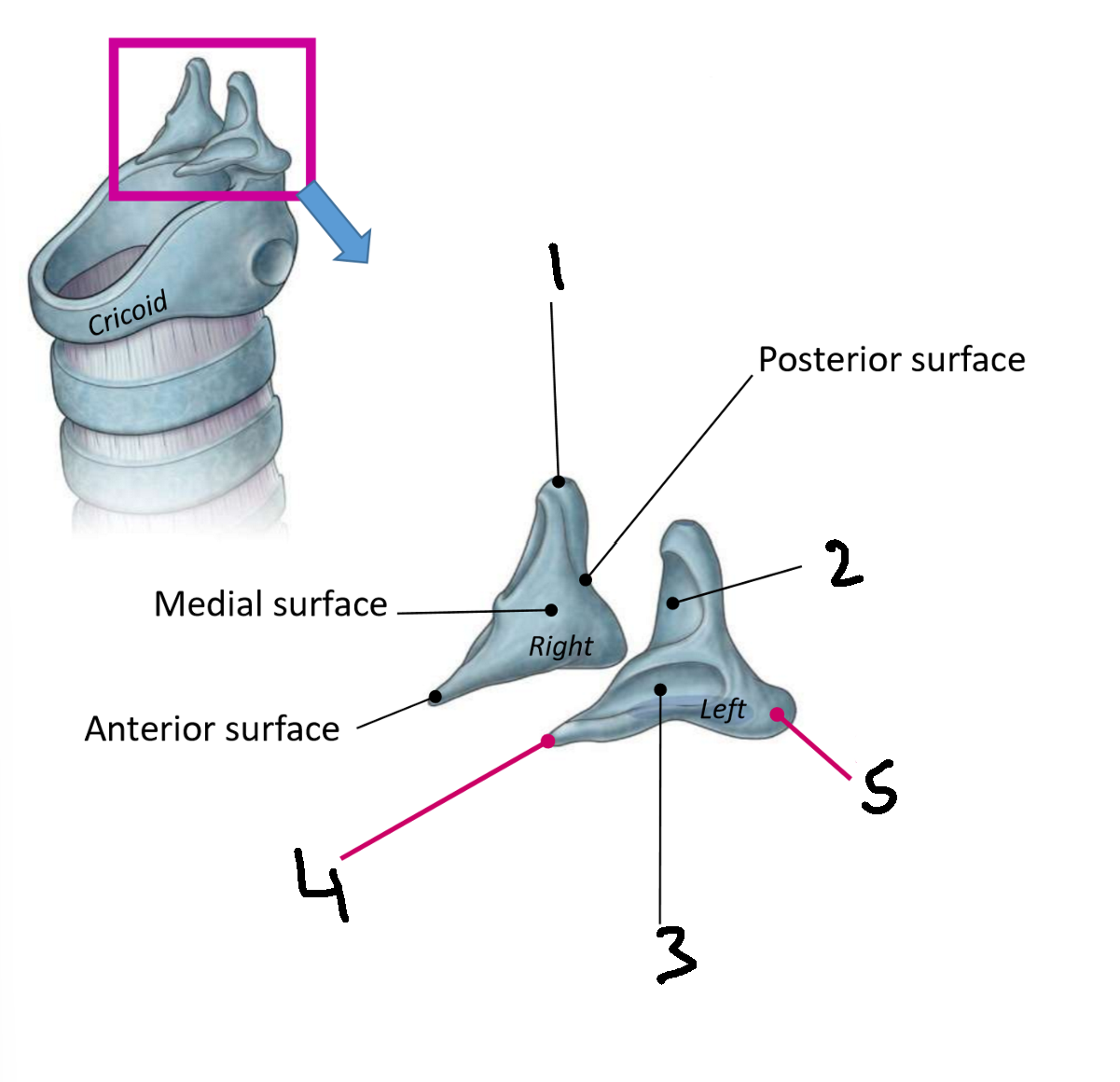
What is 2?
attachment of vestibular ligament

What is 3?
attachment of vocalis muscle
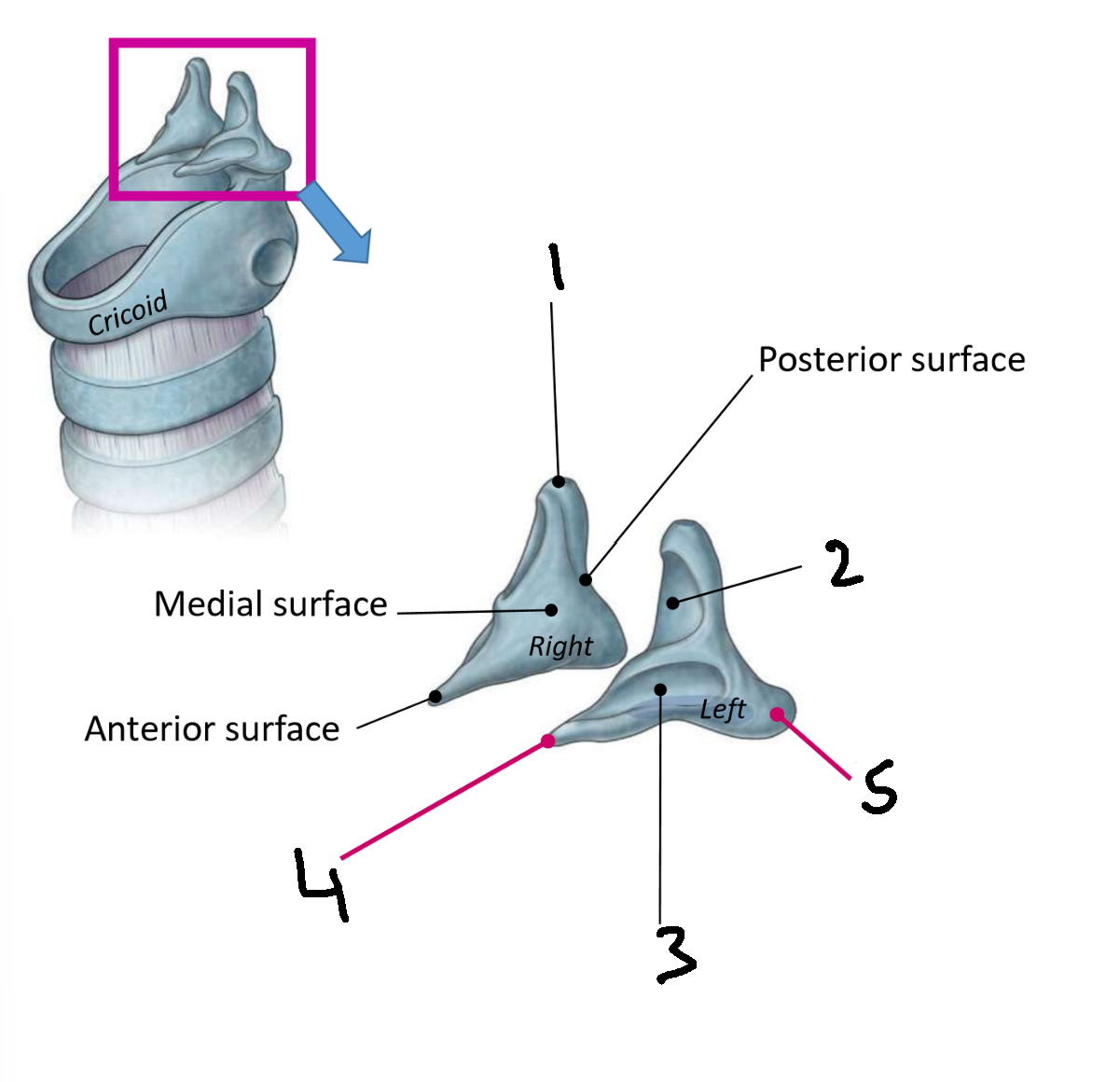
What is 4?
vocal process
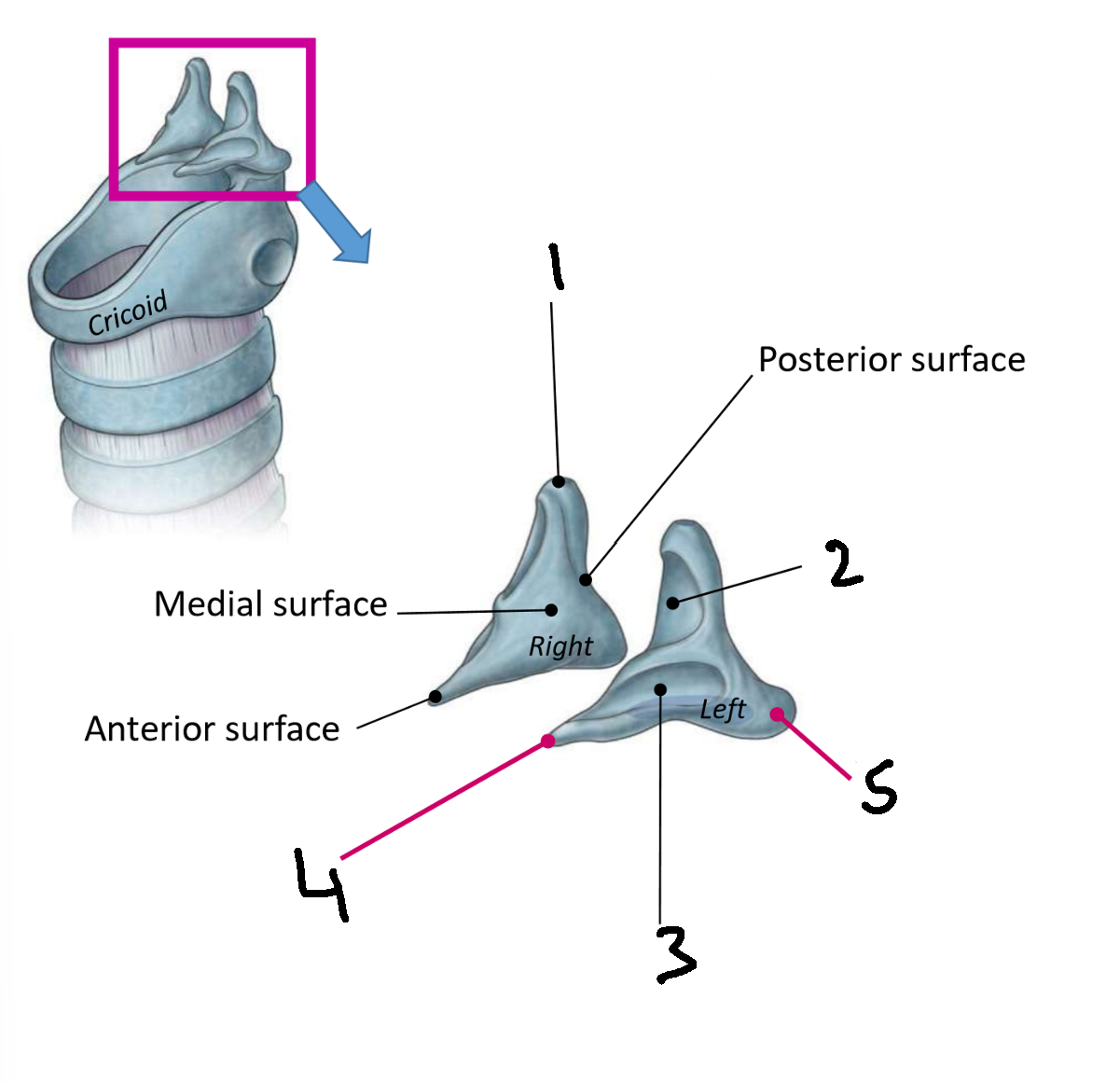
What attaches to 4?
vocal ligament
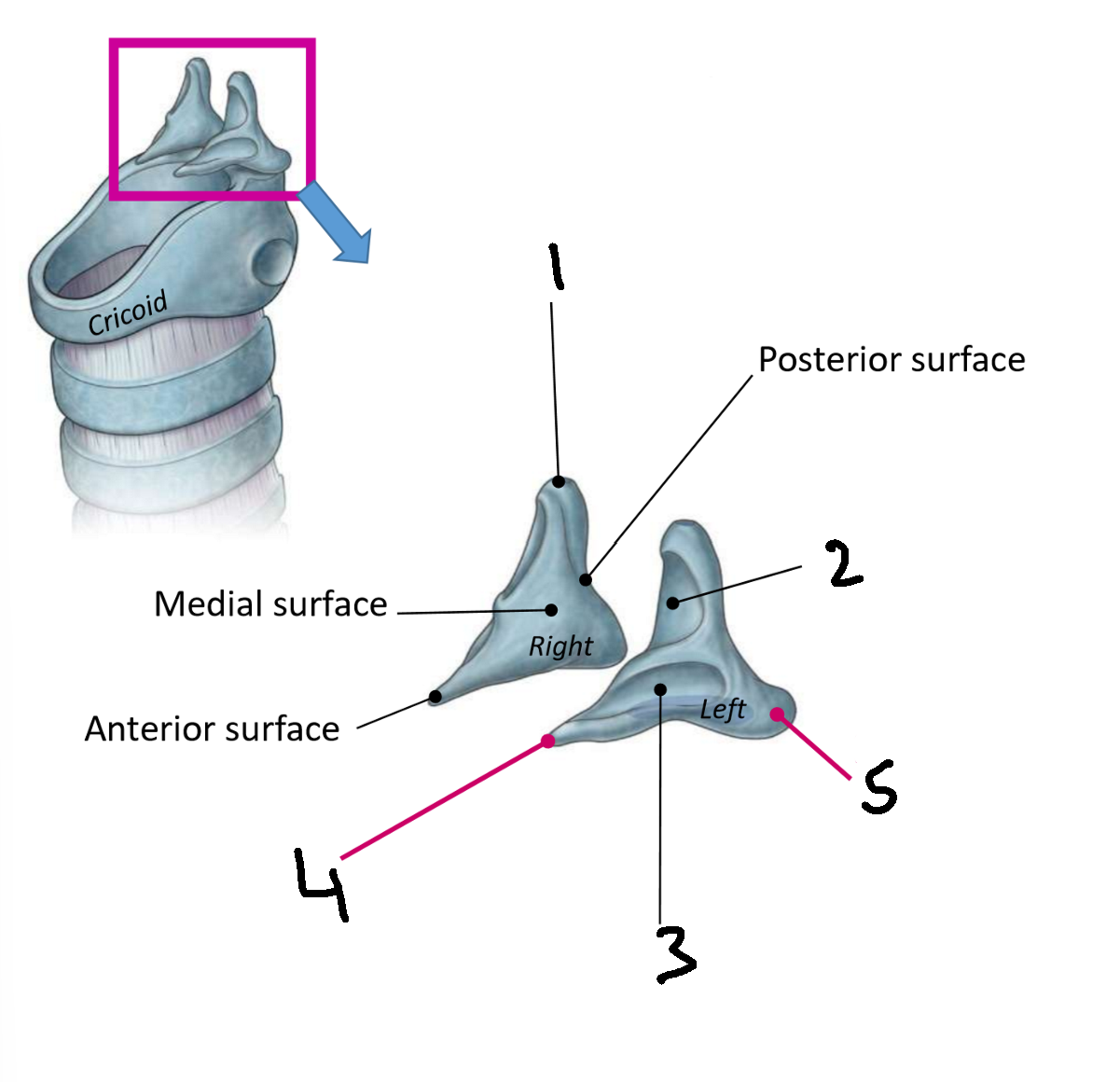
What is 5?
muscular process
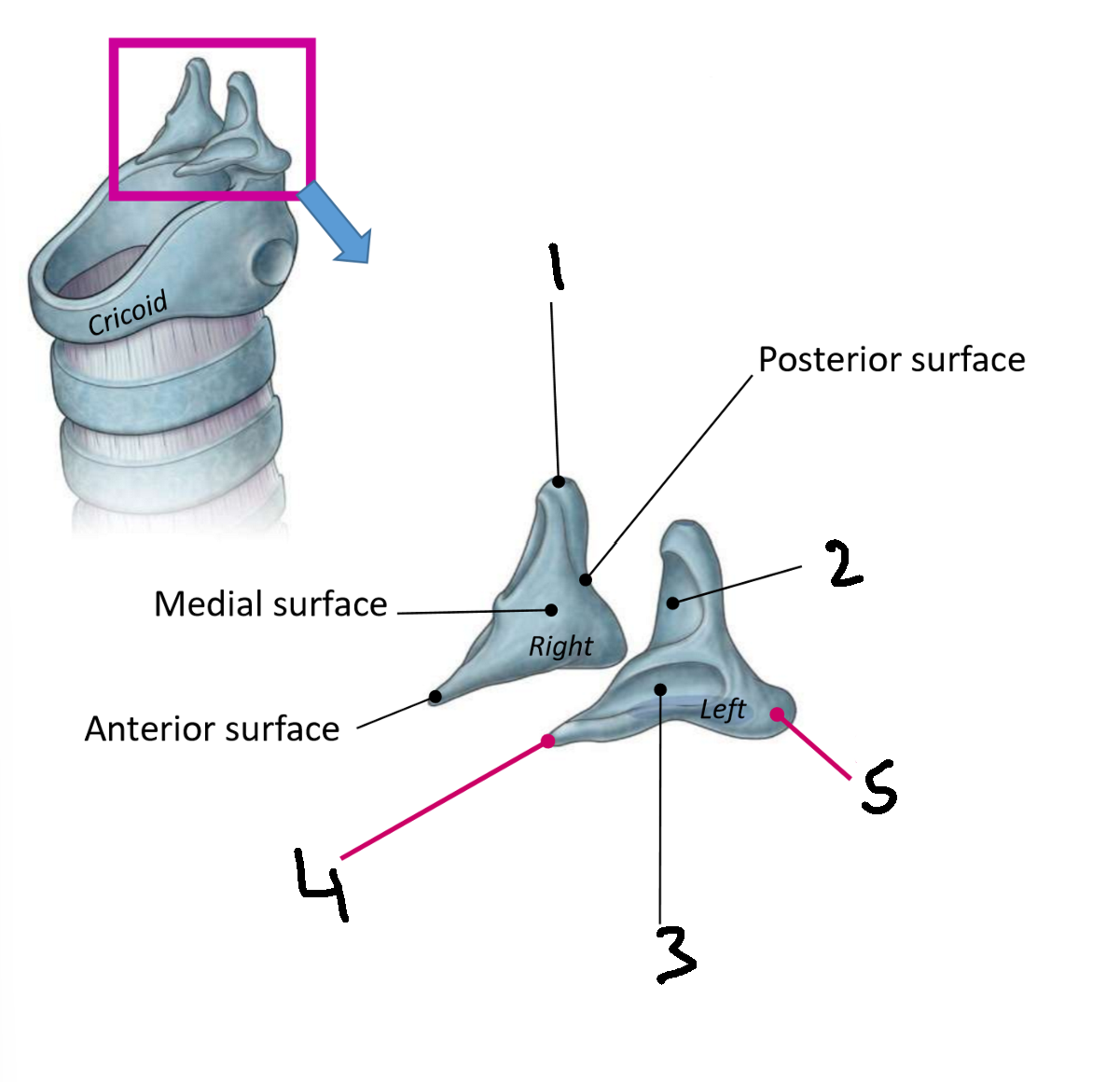
What attaches to 5?
cricoarytenoid muscles
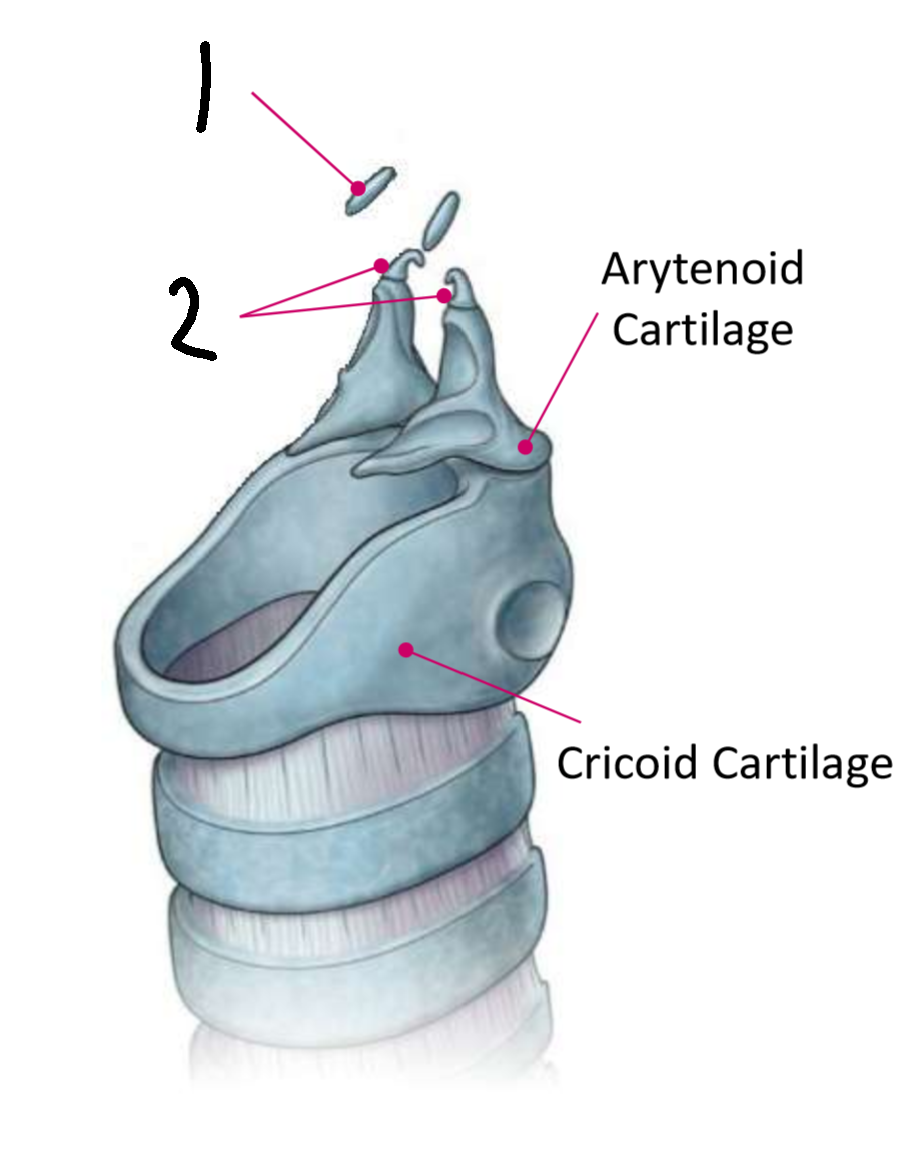
What are 1?
cuneiform cartilages
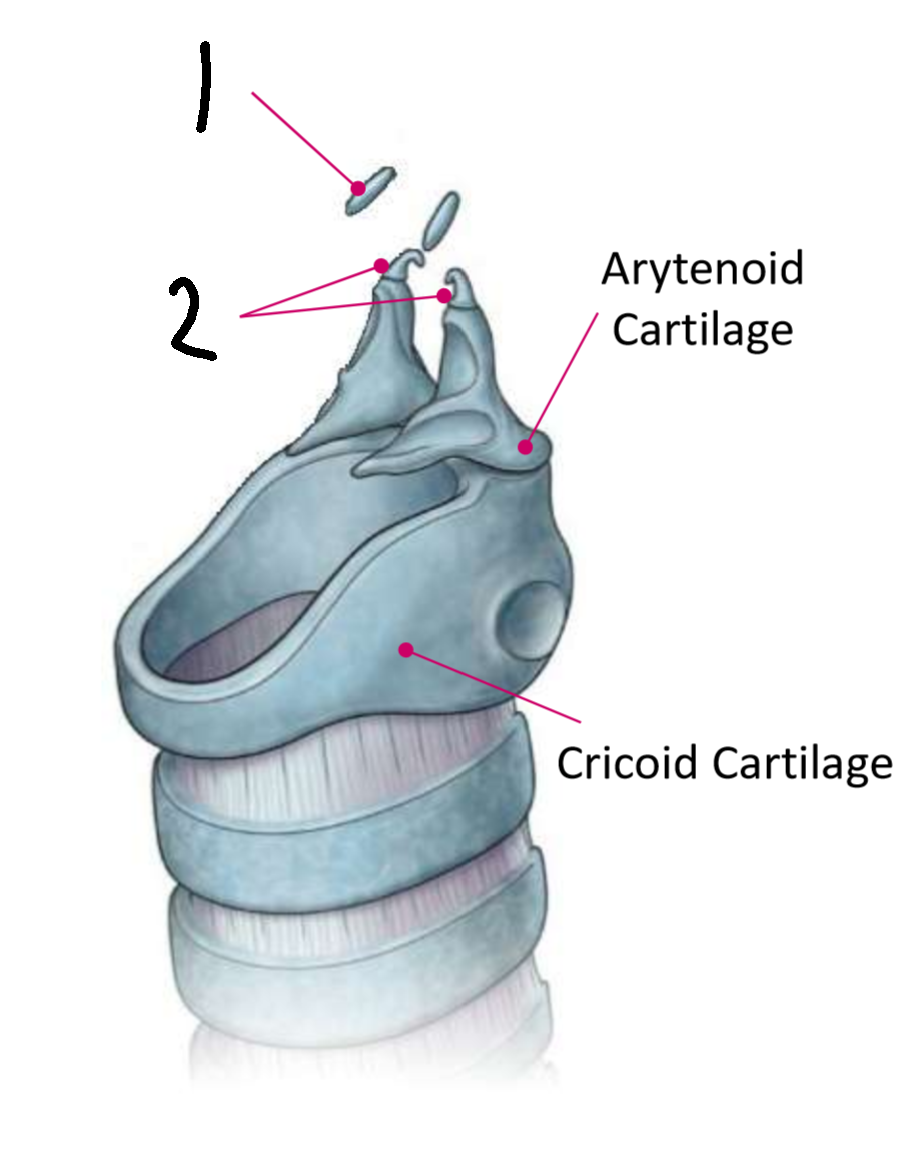
Where are 1 located?
within each aryepiglottic fold
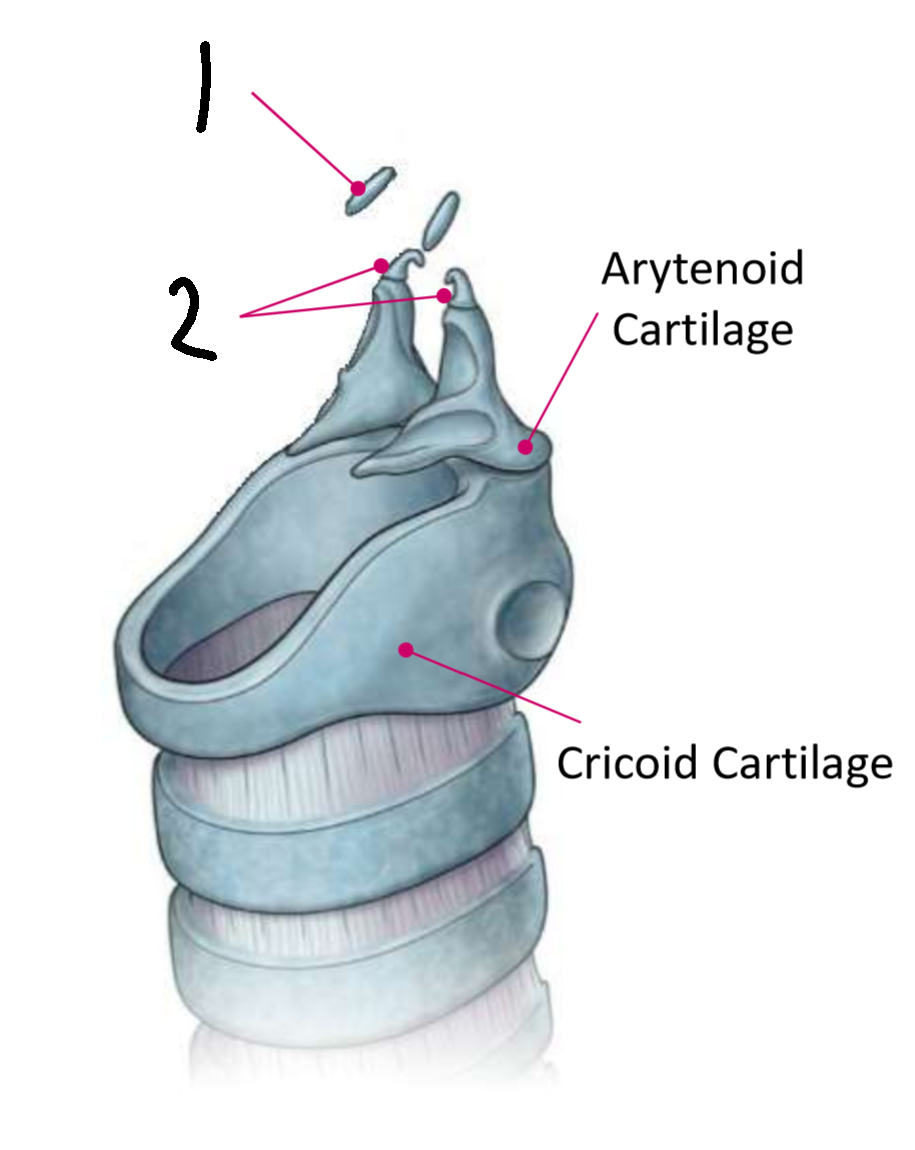
What is the function of 1?
support for the aryepiglottic fold
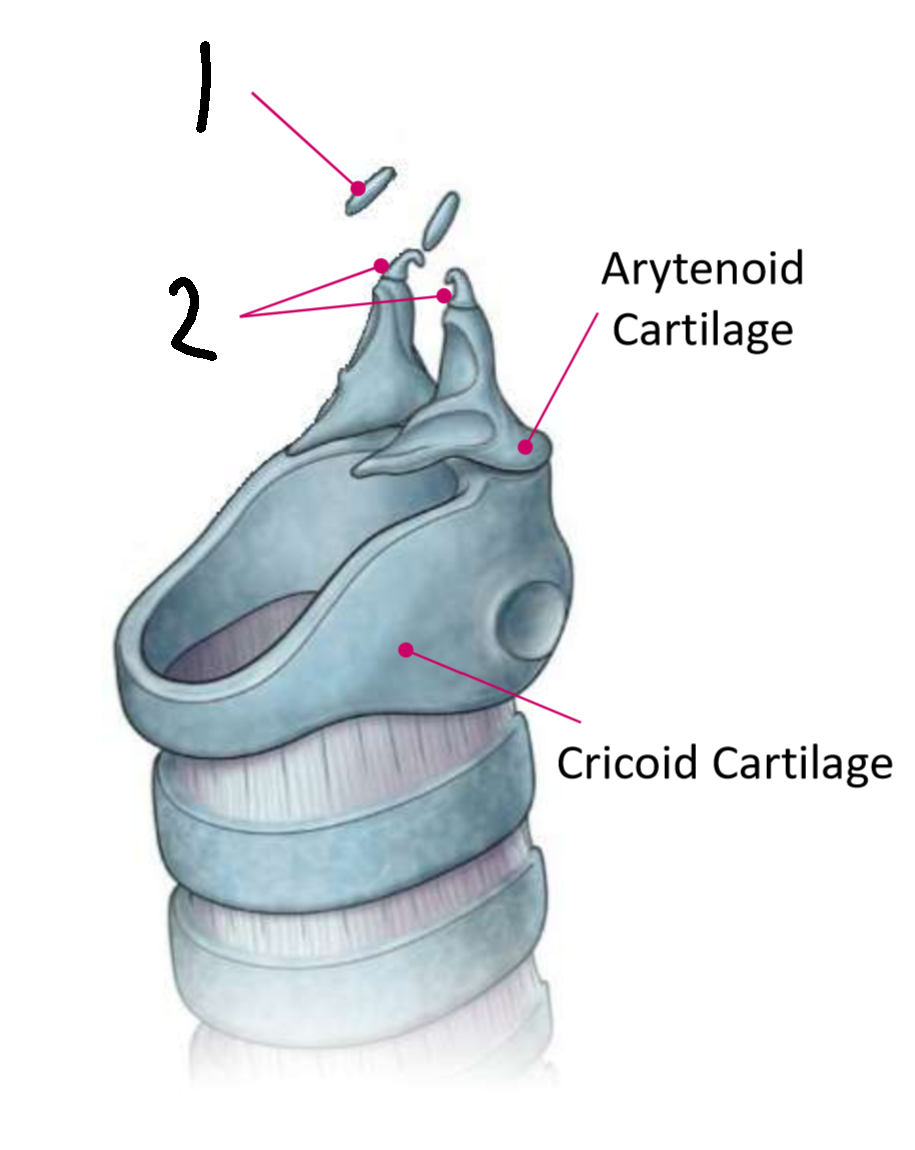
What are 2?
corniculate cartilages
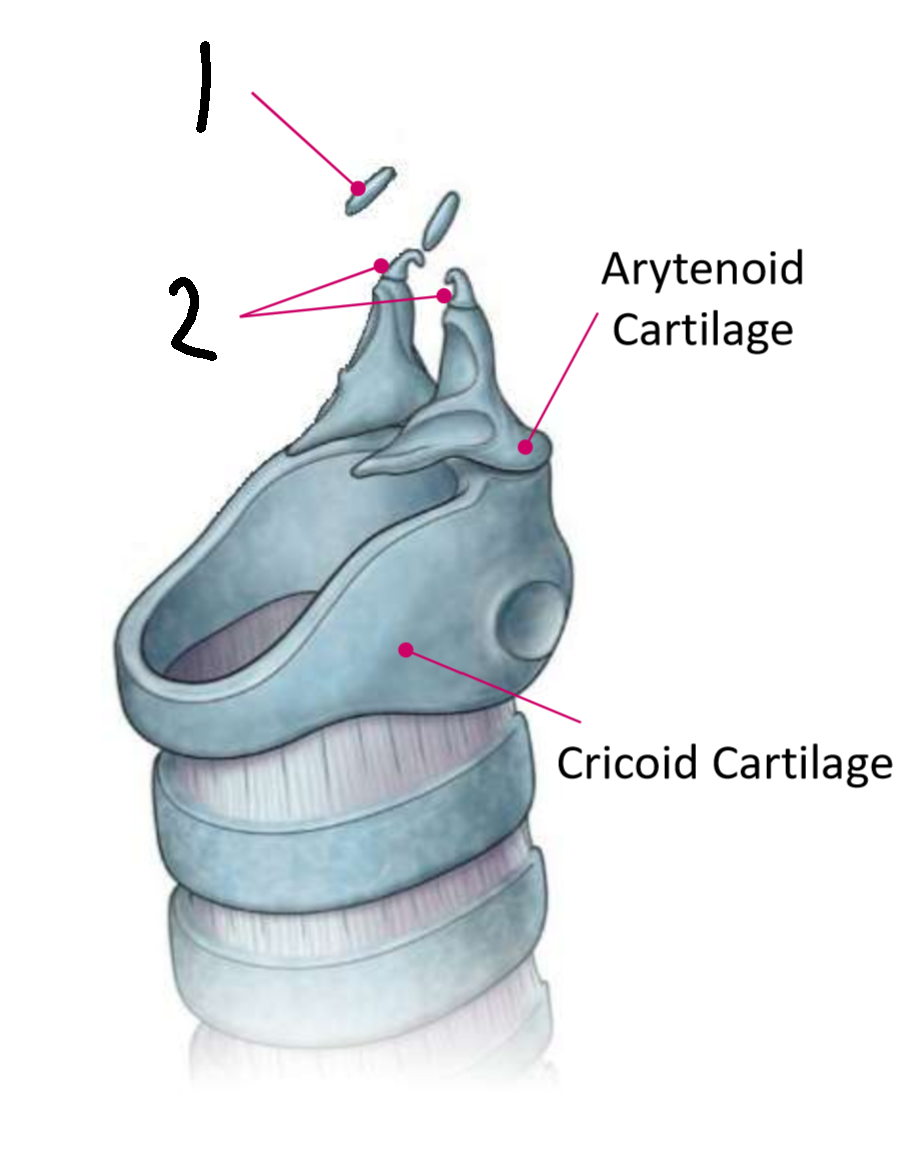
What attaches to 2?
aryepiglottic folds
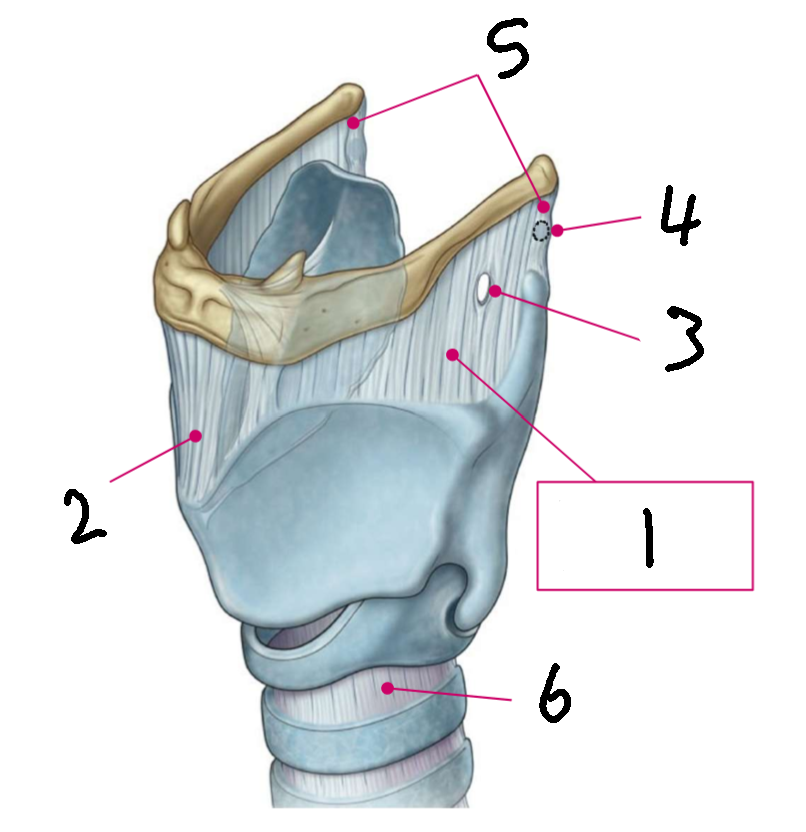
What is 1?
thyrohyoid membrane
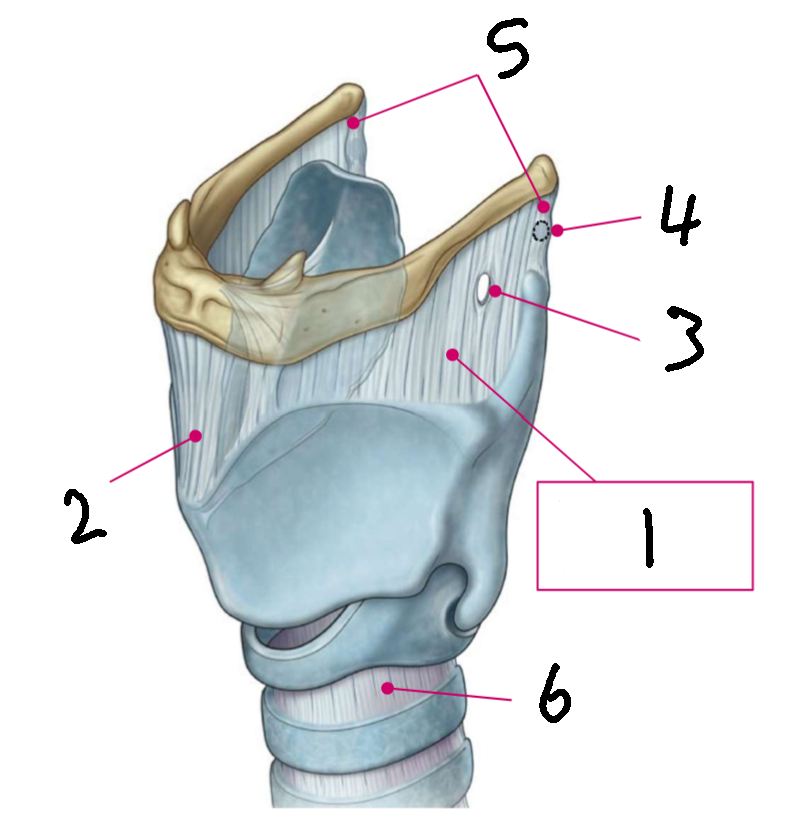
What is 2?
median thyrohyoid ligament
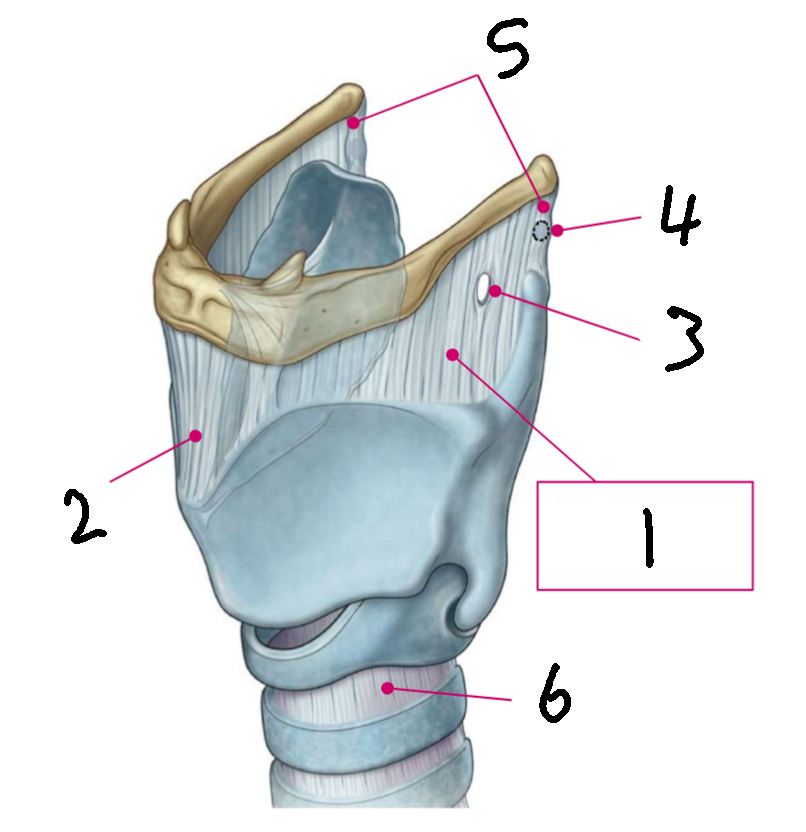
What is 3?
lateral aperture
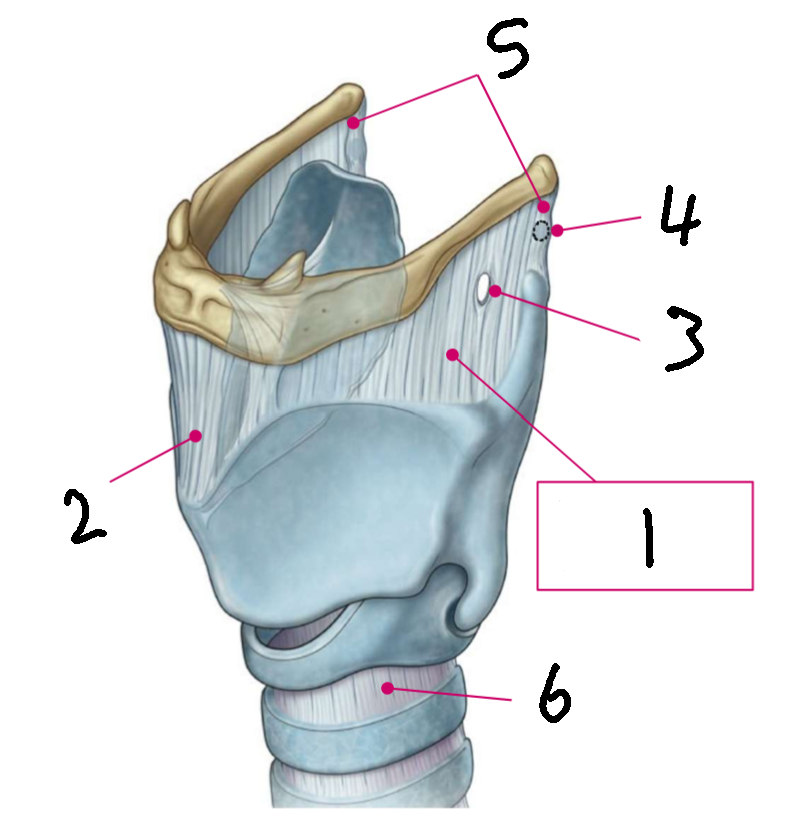
What goes through 3?
superior laryngeal vessels, internal laryngeal nerve
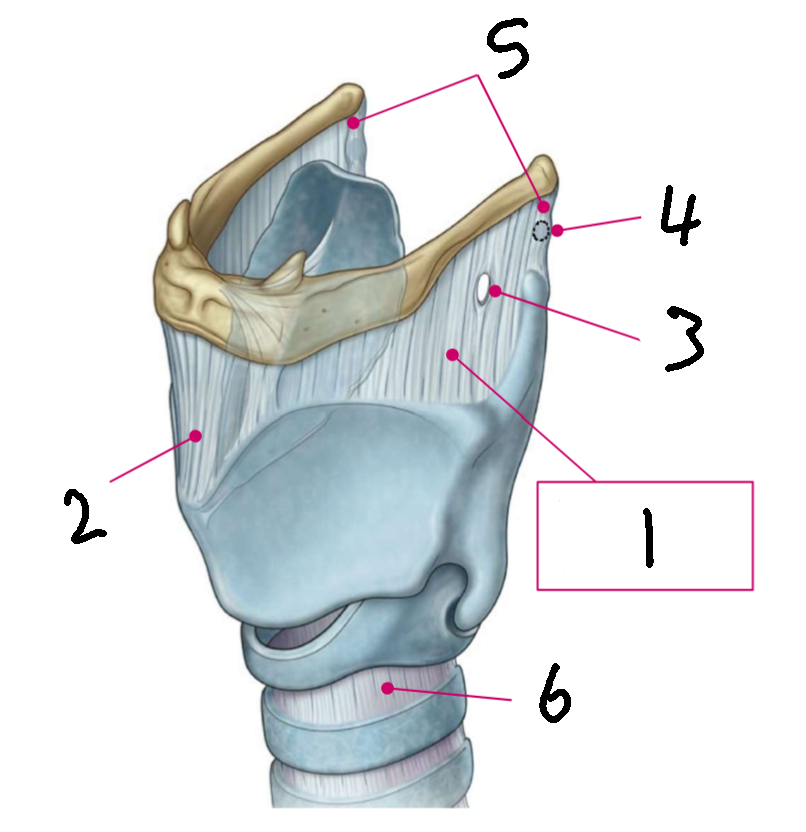
What is 4?
triticeal cartilage
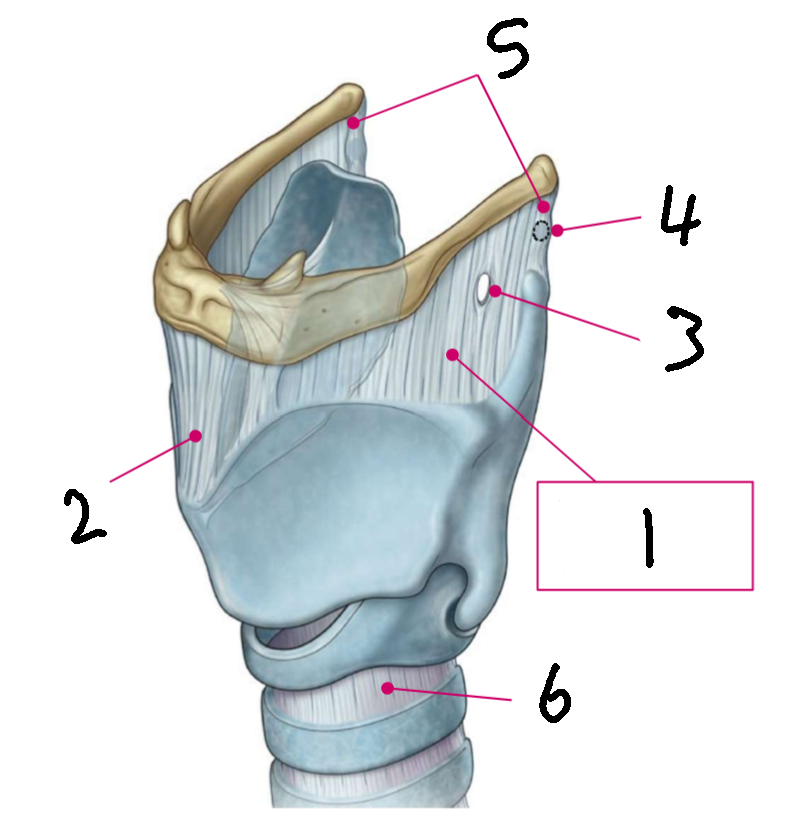
What is 5?
lateral thyrohyoid ligaments
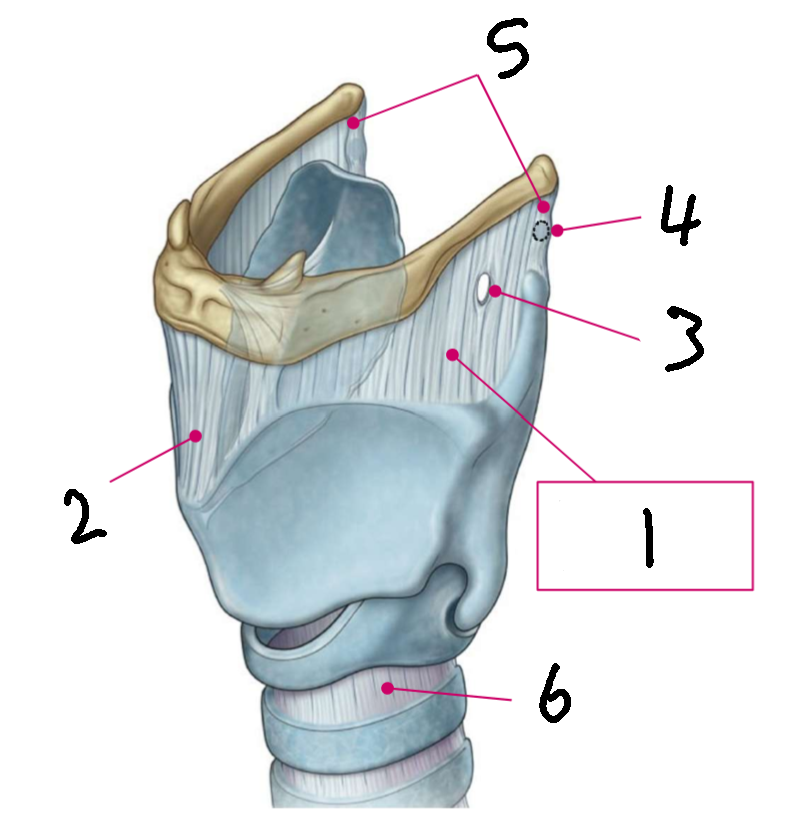
What is 6?
cricotracheal ligamnet
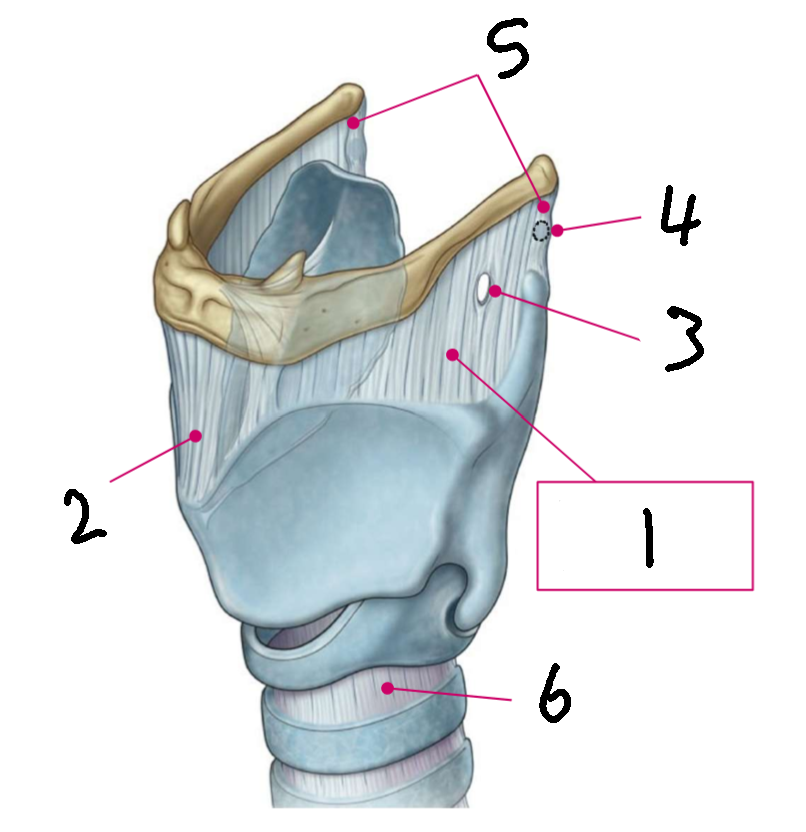
What is the purpose of 4?
strength and stability
Which cranial nerve do the laryngeal nerves come from
vagus X
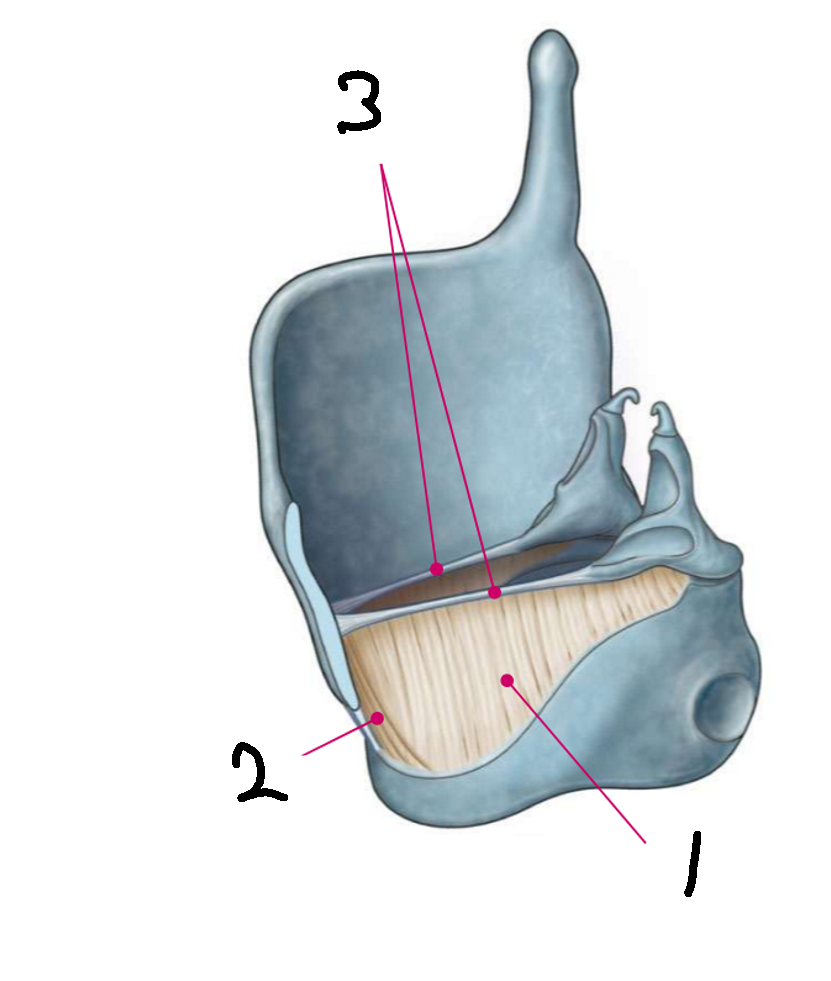
What is 1?
cricothyroid membrane

What is 2?
median cricothyroid ligament
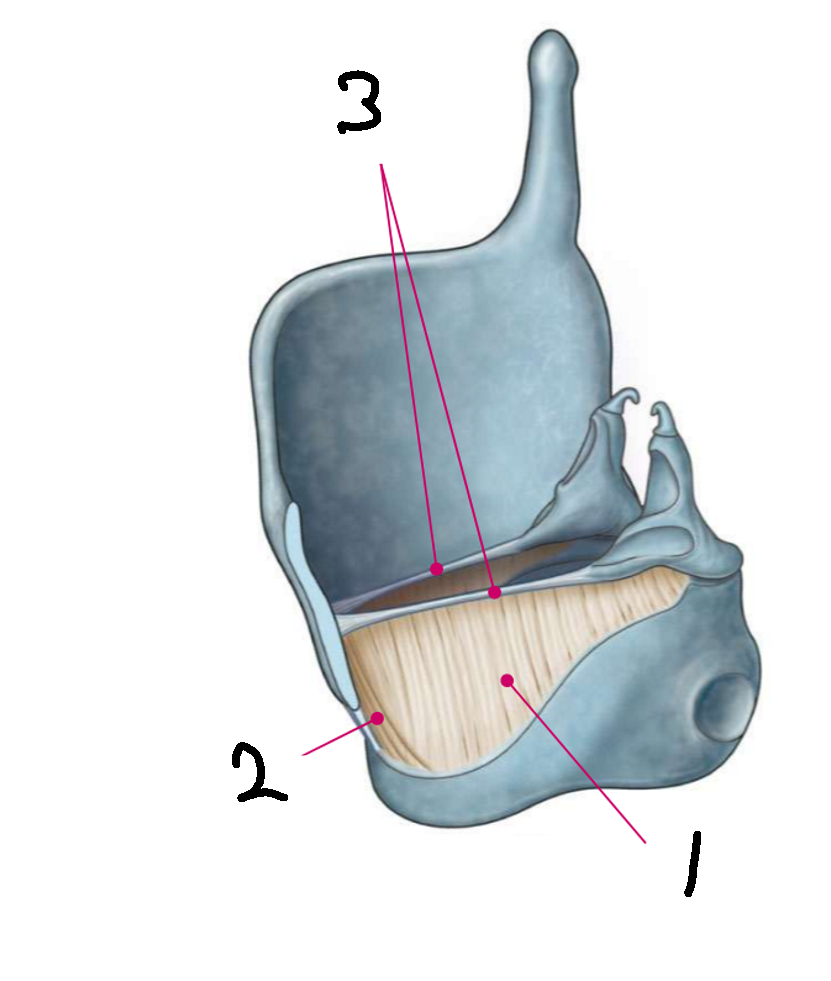
What is 3?
vocal ligaments
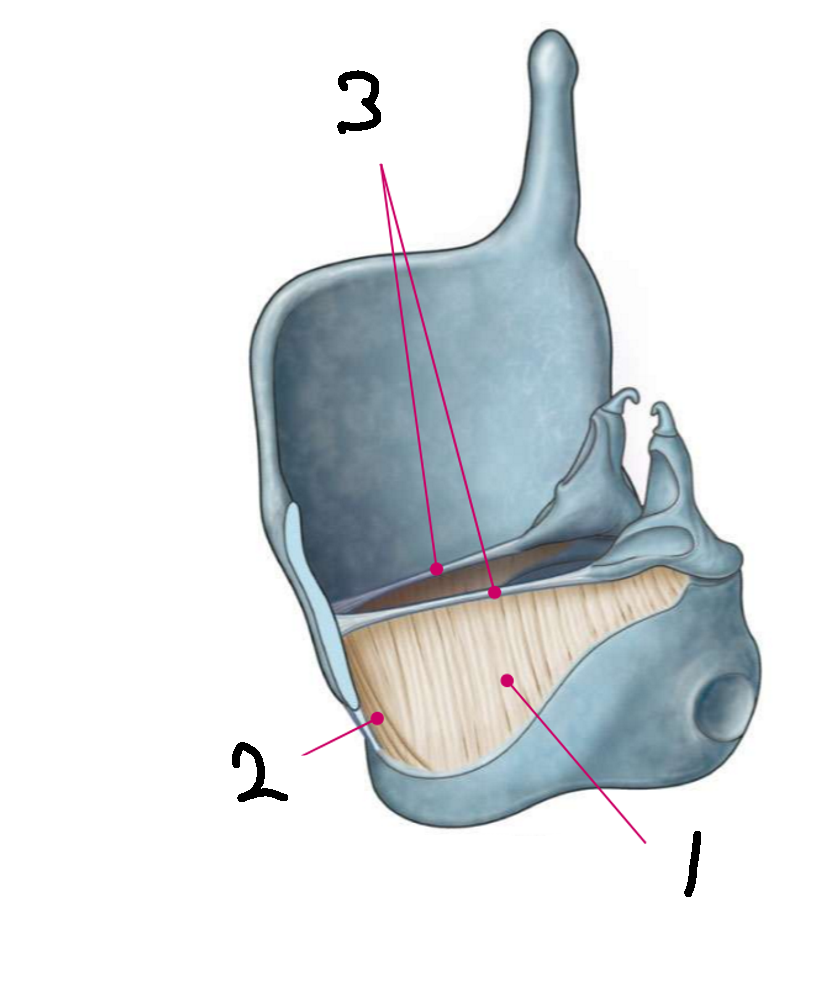
What is the mucous membrane that folds over 3?
vocal fold
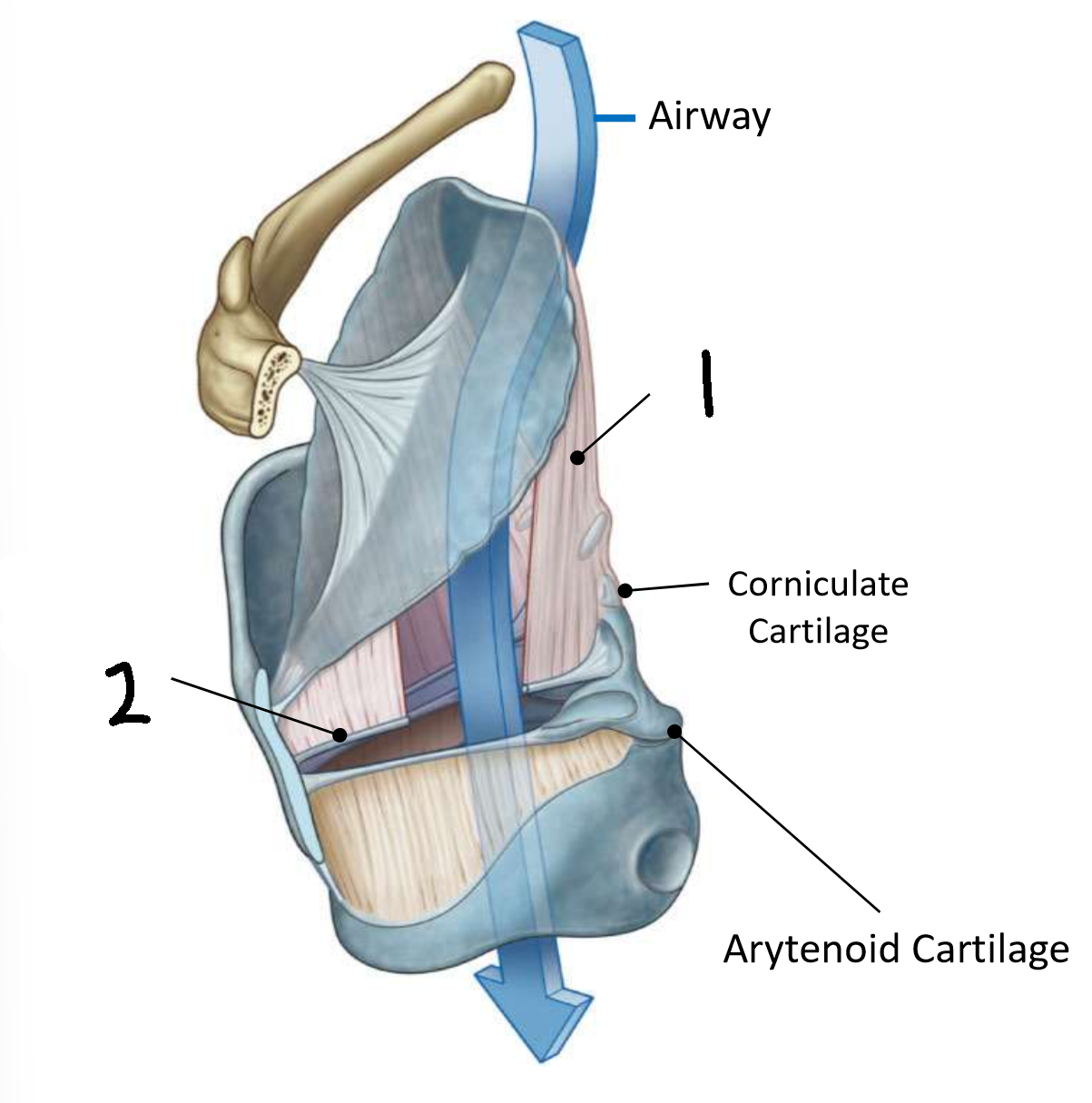
What is 1?
quadrangular membrane
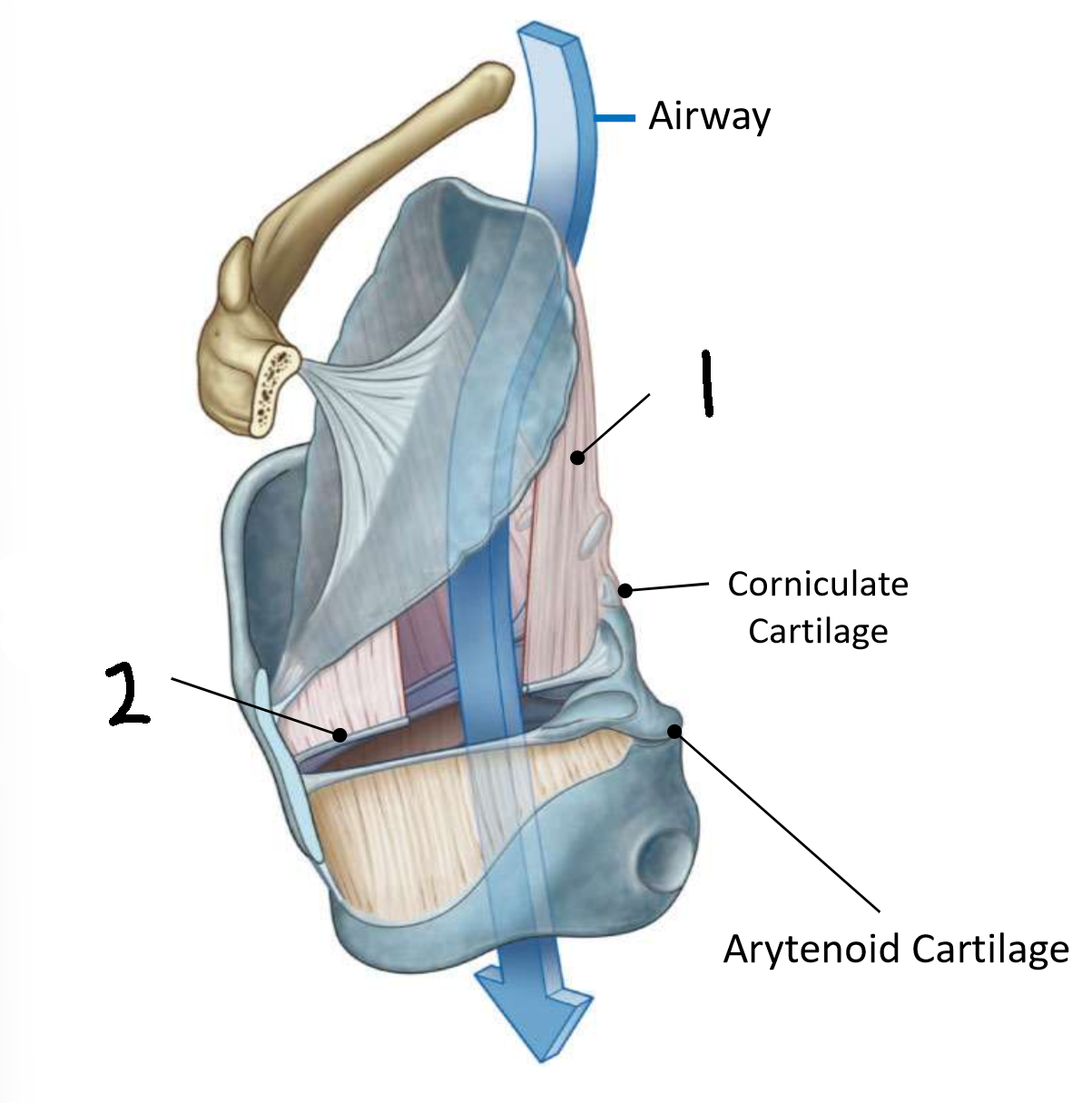
What is 2?
vestibular ligament
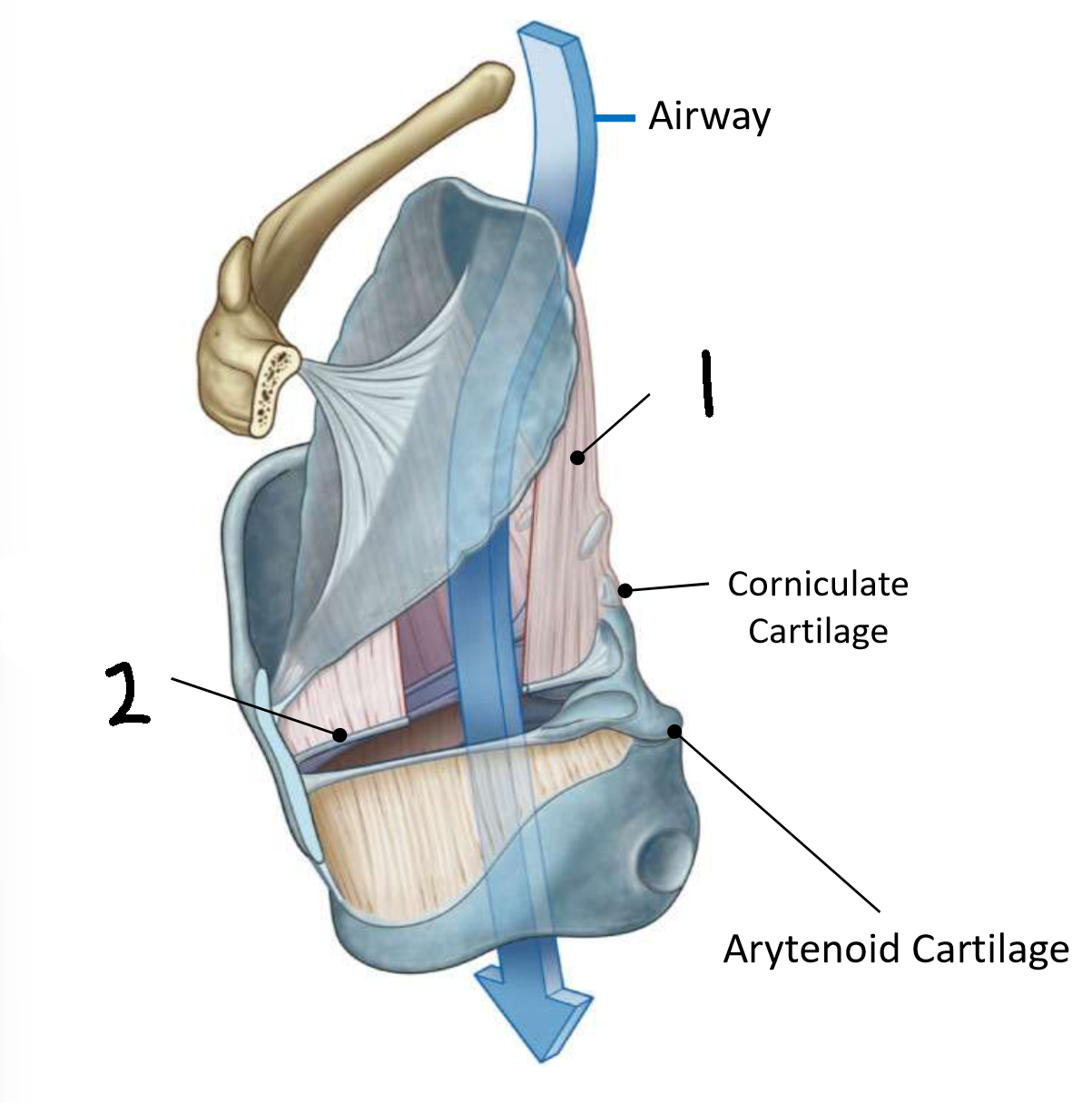
What is the free upper margin of 1?
aryepiglottic fold
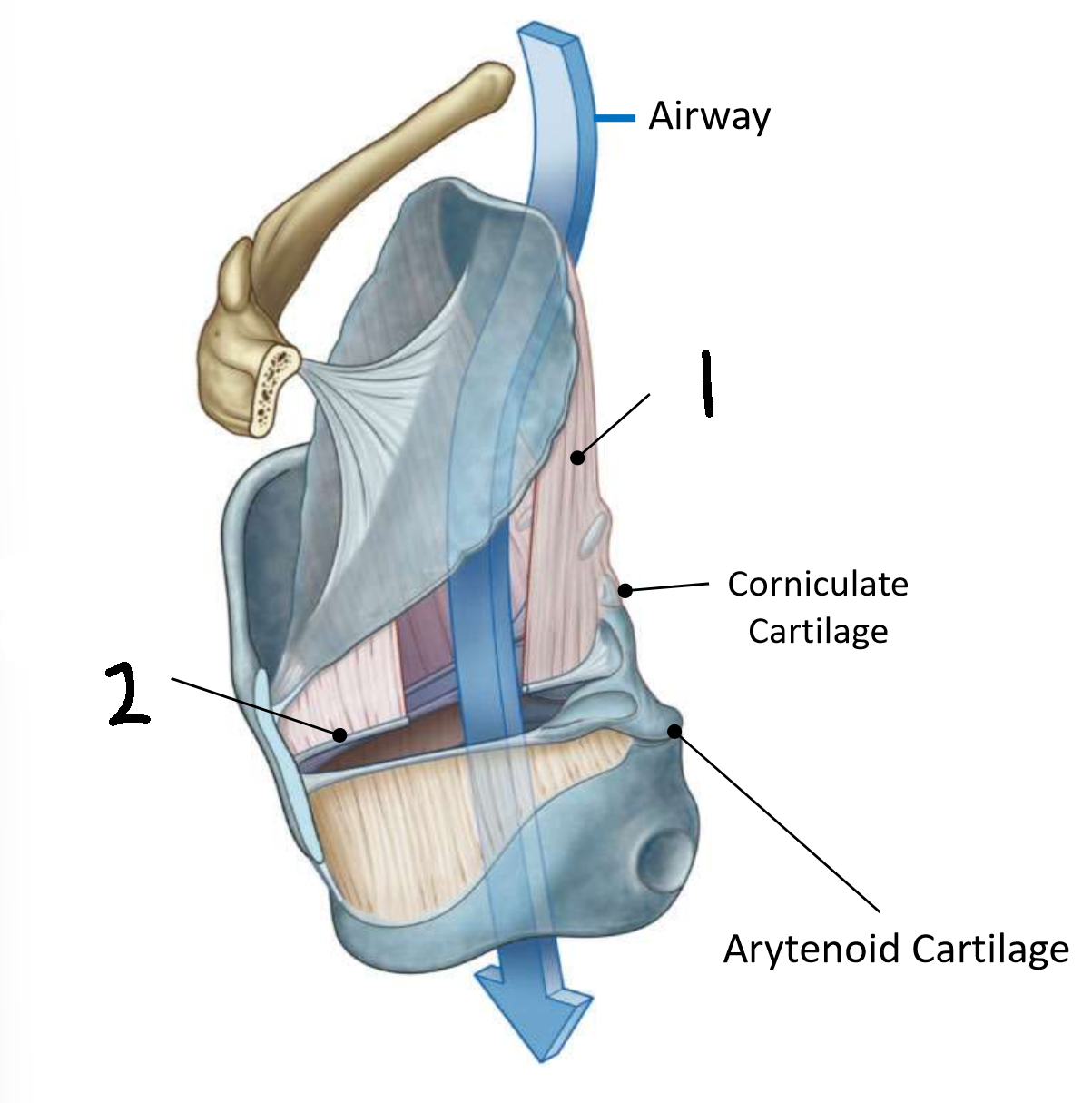
What is the mucous that covers 2?
vestibular fold
What are the true vocal cords?
vocal ligaments/folds
What are the false vocal cords?
vestibular ligaments/folds
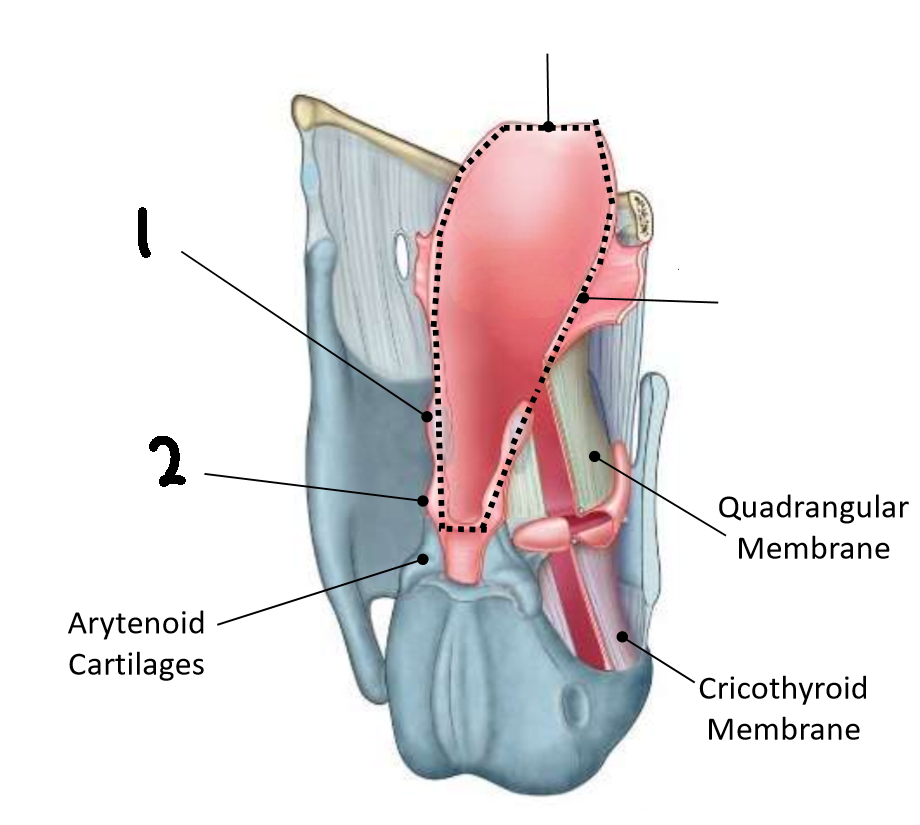
What is the dotted lne?
inlet of the larynx
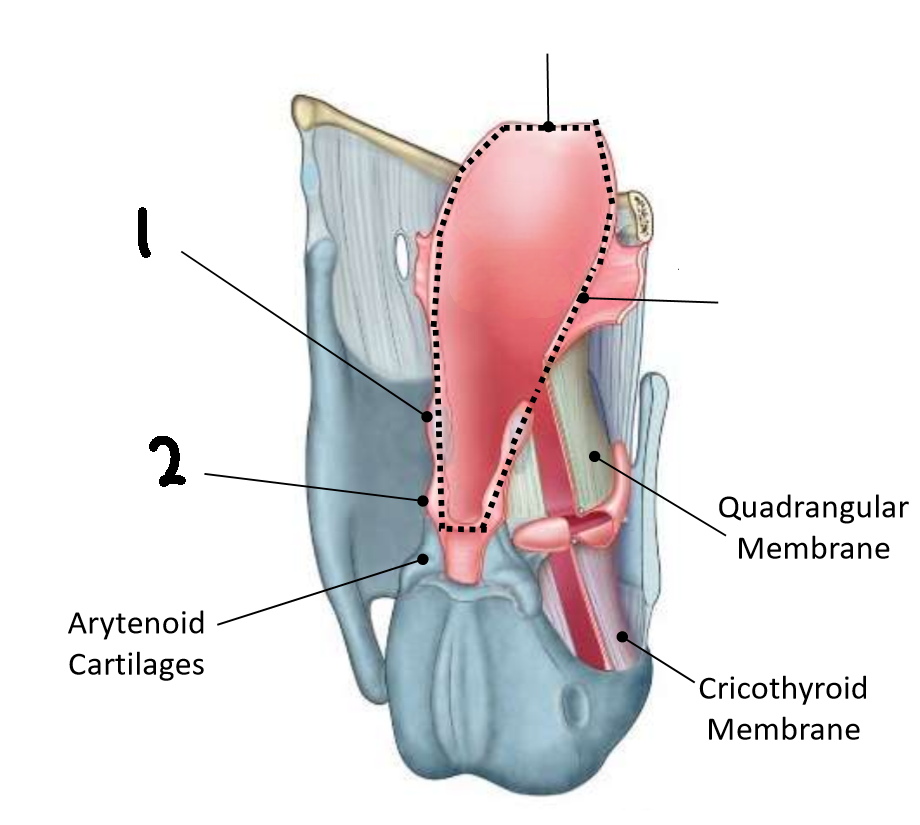
What is the anterior border?
upper margin of the epiglottis
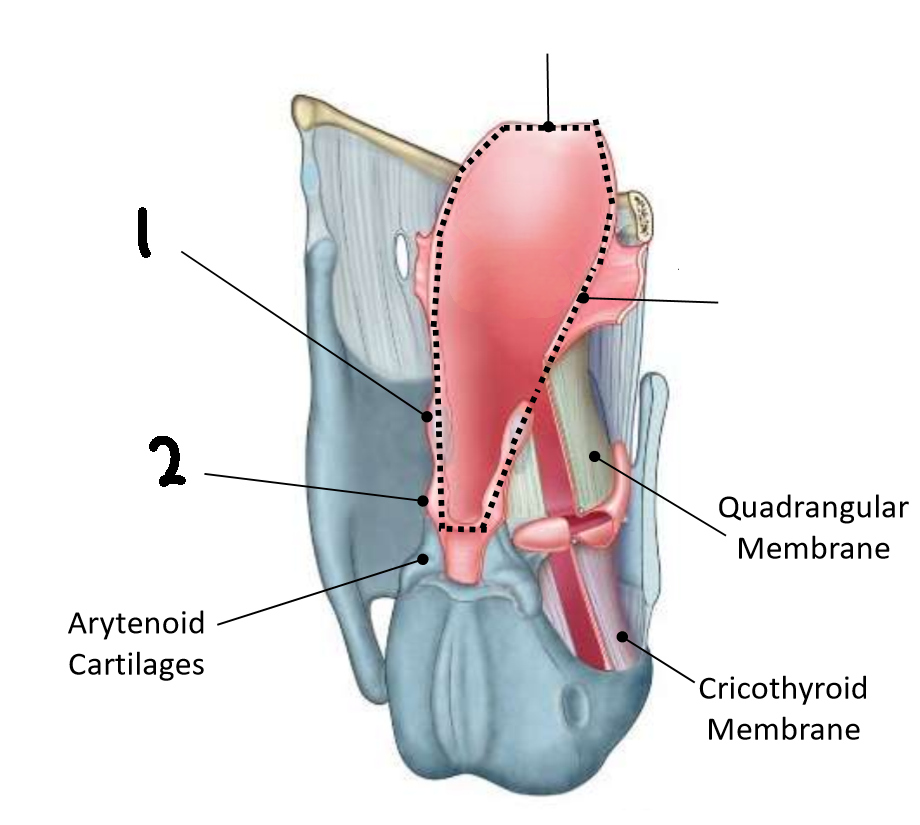
What are the lateral borders?
aryepiglottic folds
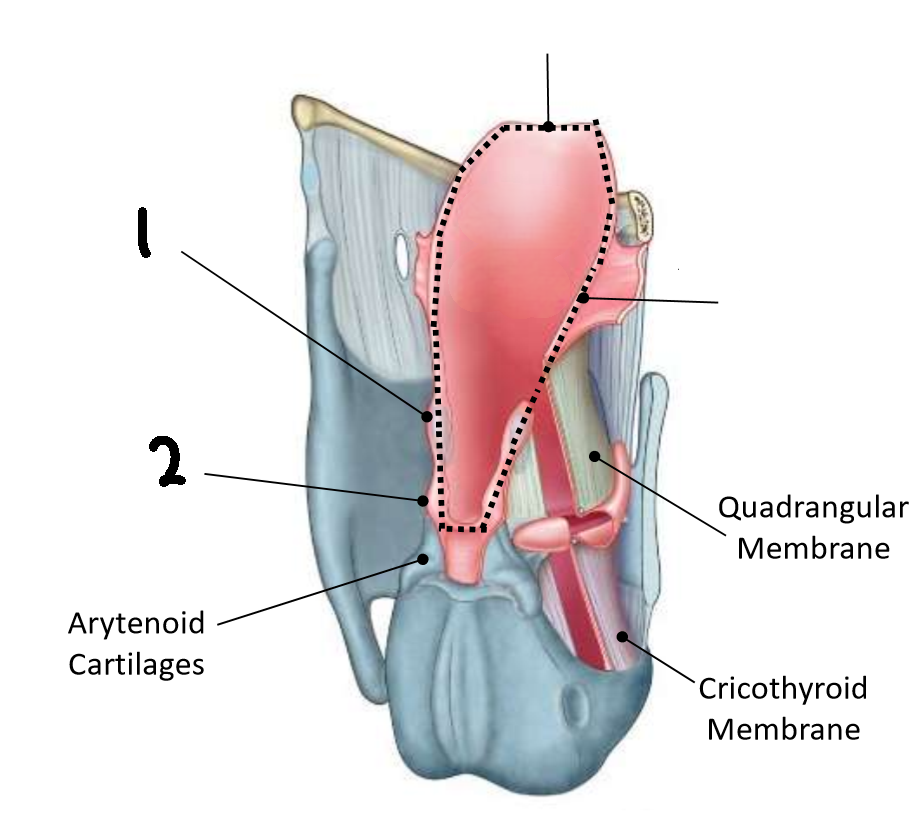
What is the posterior border?
mucous membrane between arytenoid cratilages
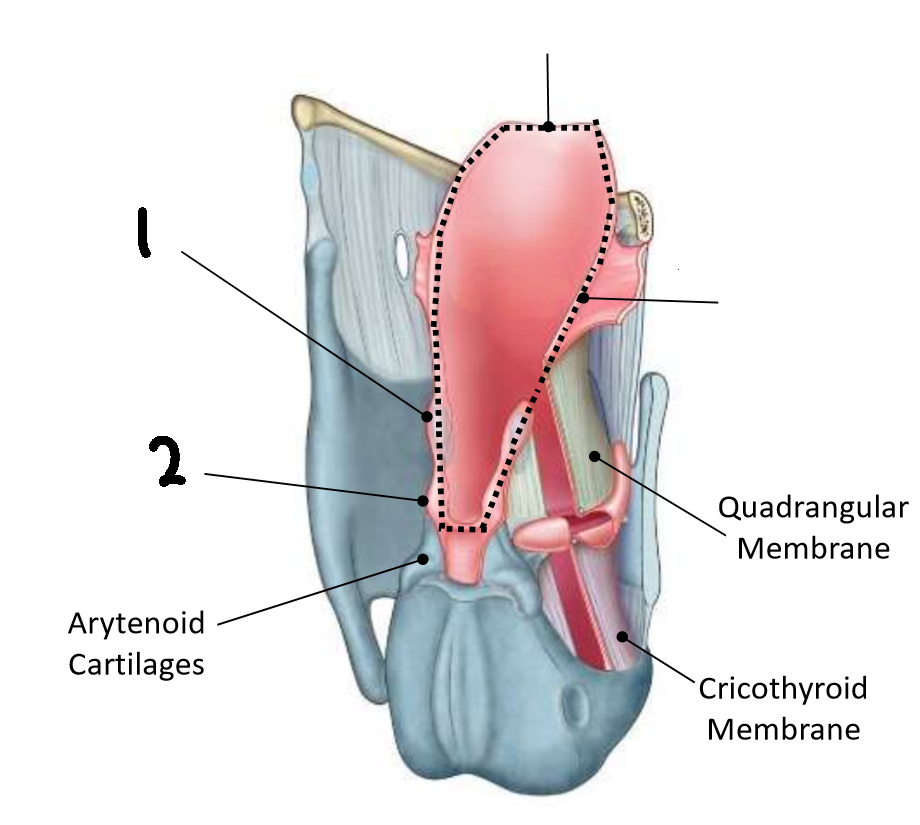
What is 1?
cuneiform tubercle

What is 2?
corniculate tubercle
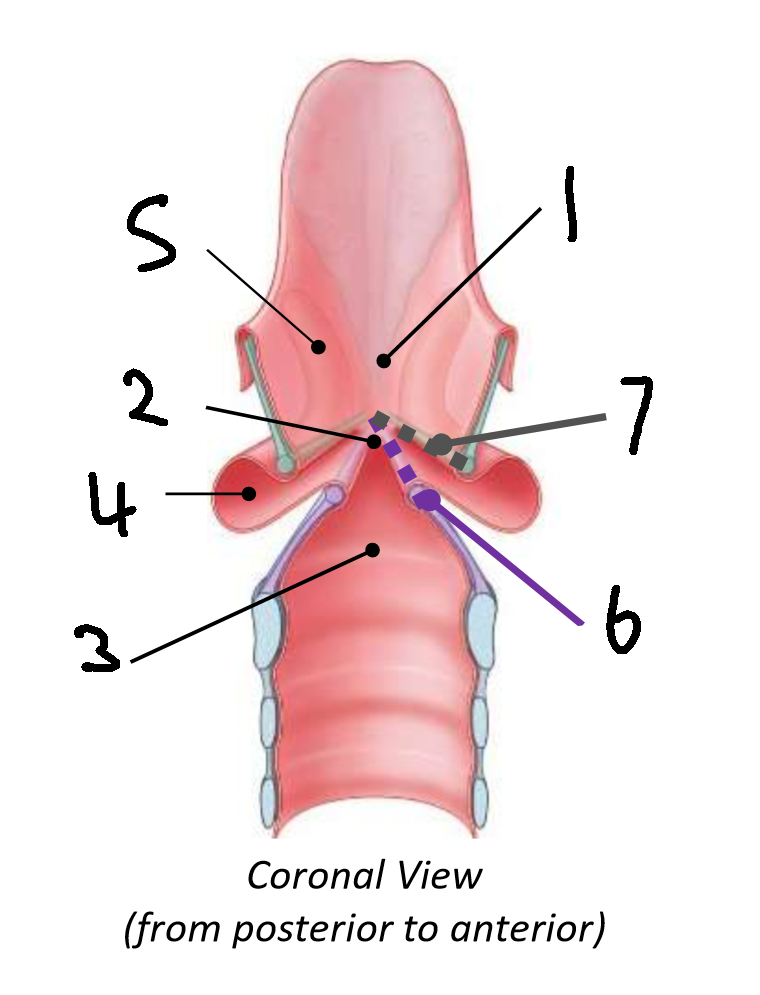
Which cavity of the larynx is 1?
vestibule
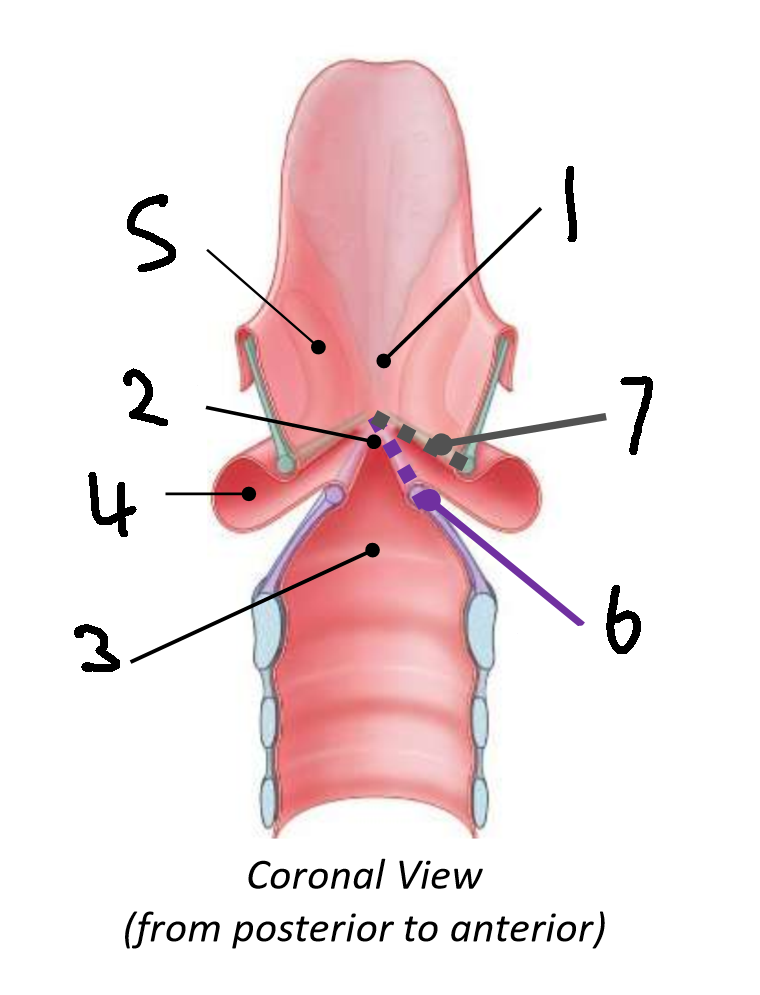
Which cavity of the larynx if 2?
middle chamber
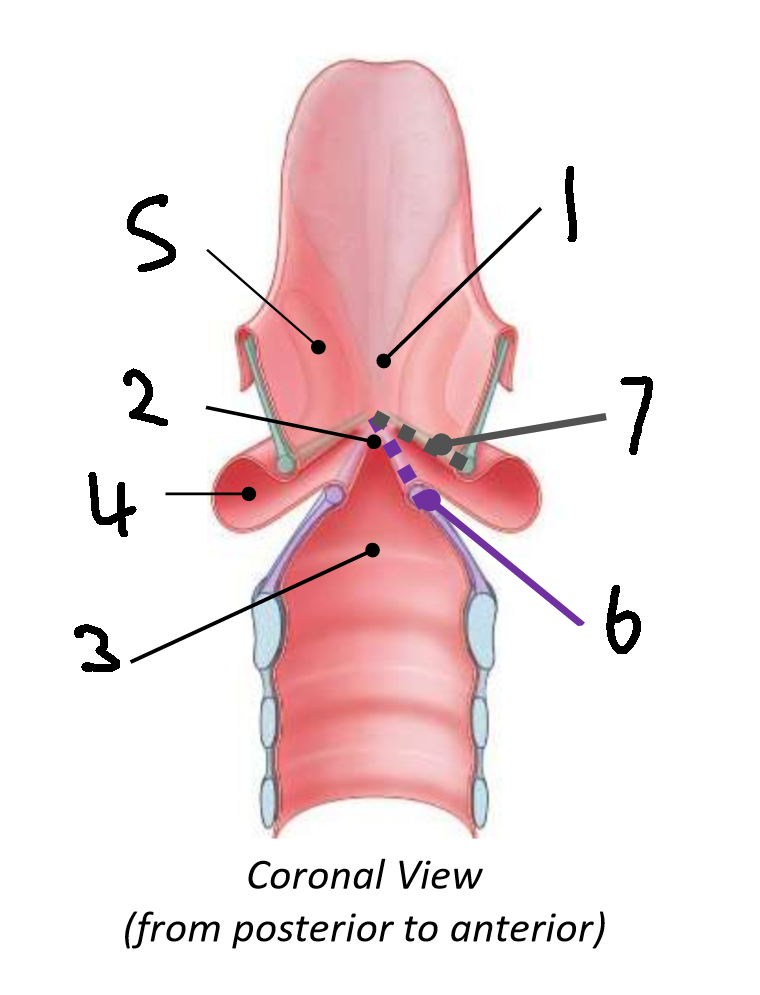
Which cavity of the larynx in 3?
infraglottic space
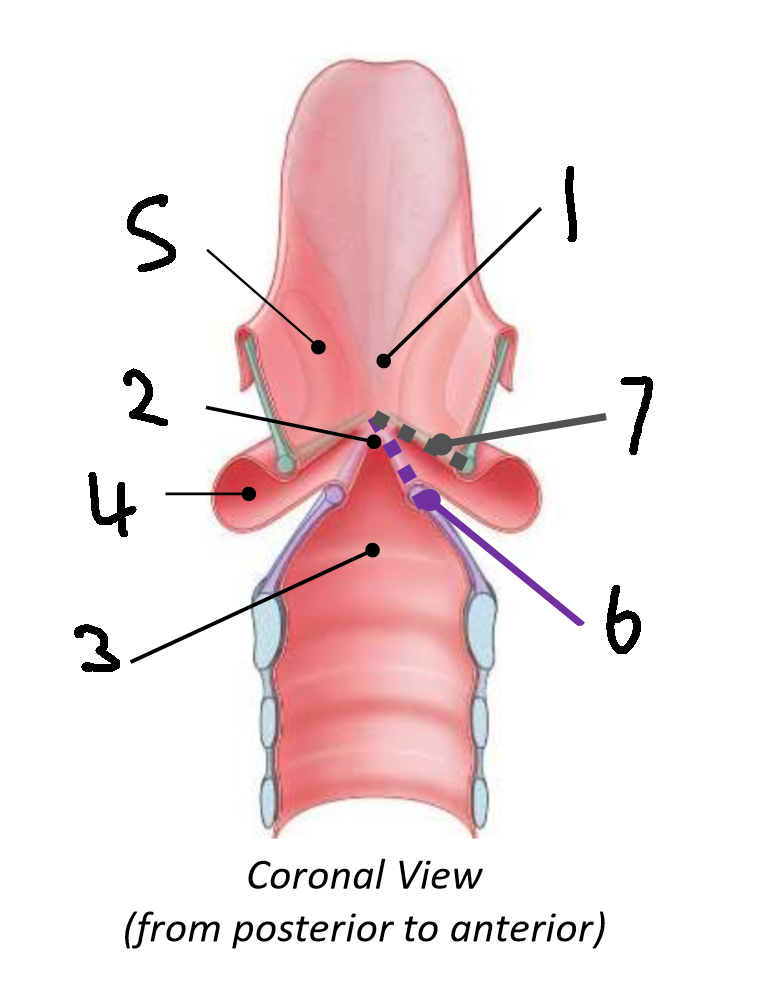
What is 4?
ventricle

What is 5?
laryngeal saccule

What is 6?
vocal fold
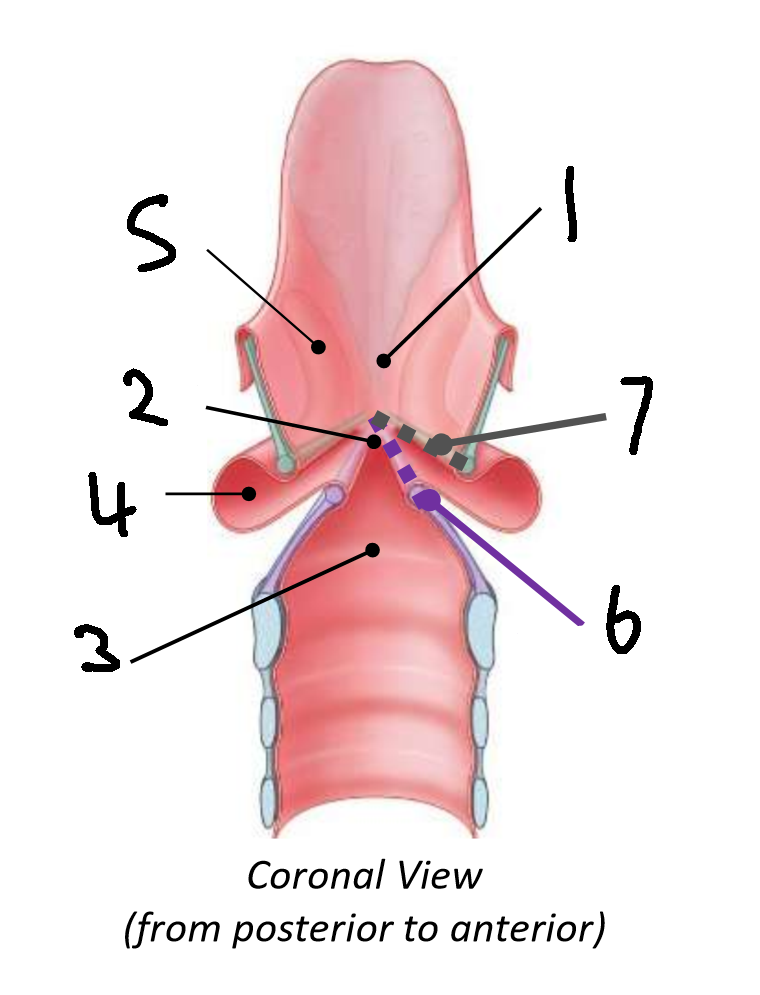
What is 7?
vestibular fold
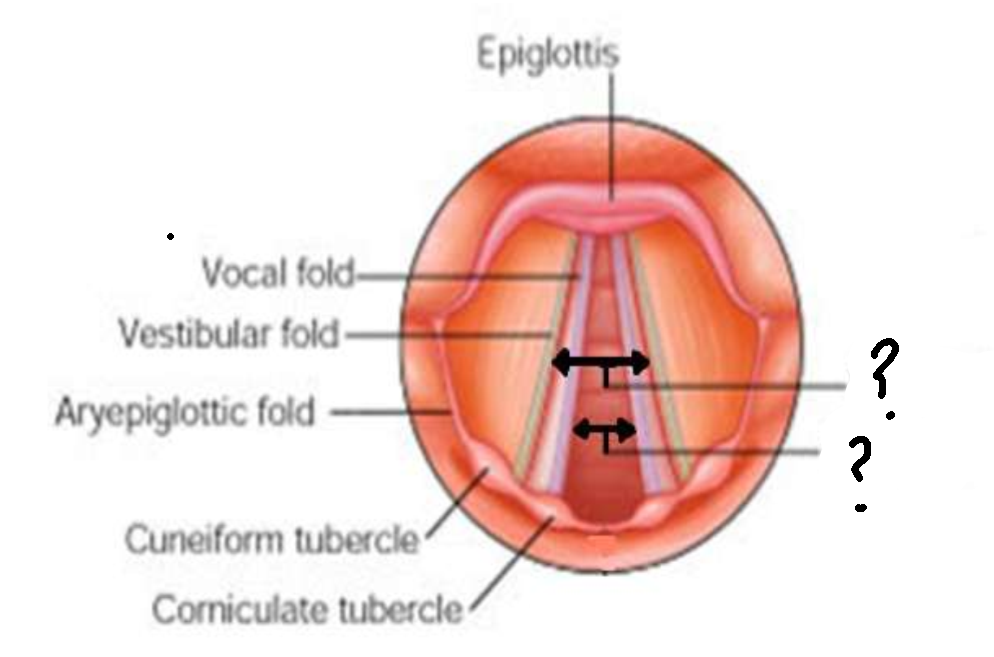
What is the superior gap?
rima vestibuli
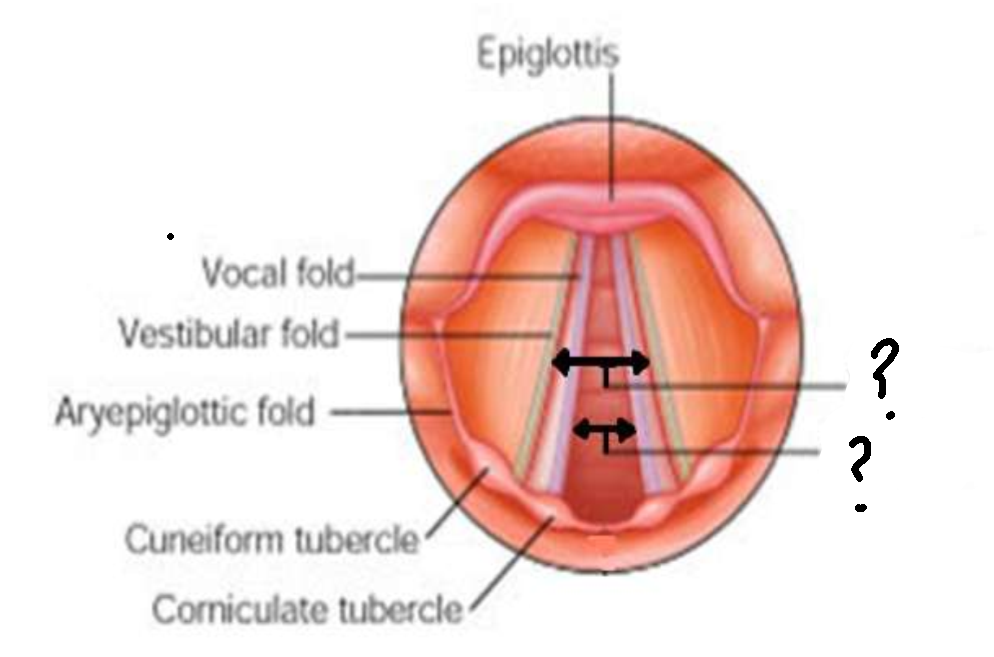
What is the inferior gap?
rima glottidis
What type of joint are the cricoarytenoid joints?
synovial
What are the two movements of the arytenoid cartilages?
gliding and rotation
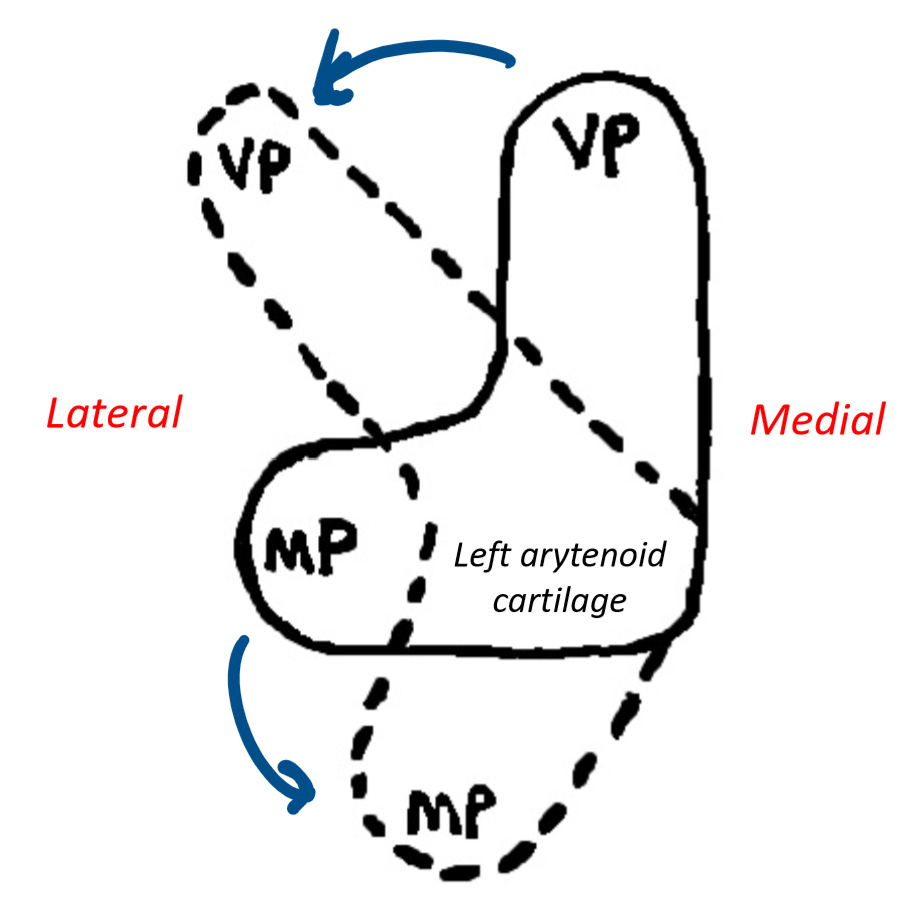
What movement does this action cause?
abduction of the vocal folds
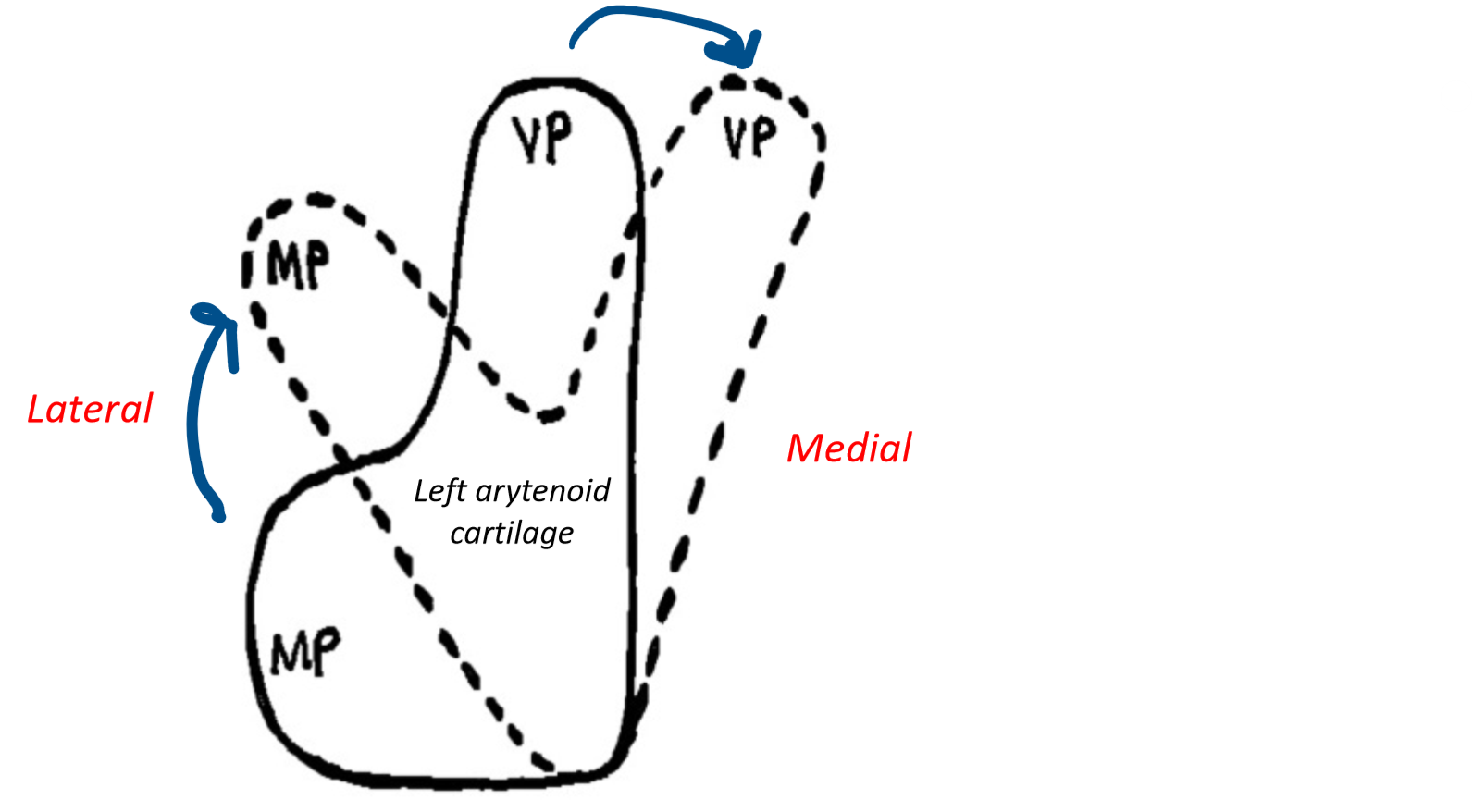
What movement does this action cause?
adduction of the vocal folds
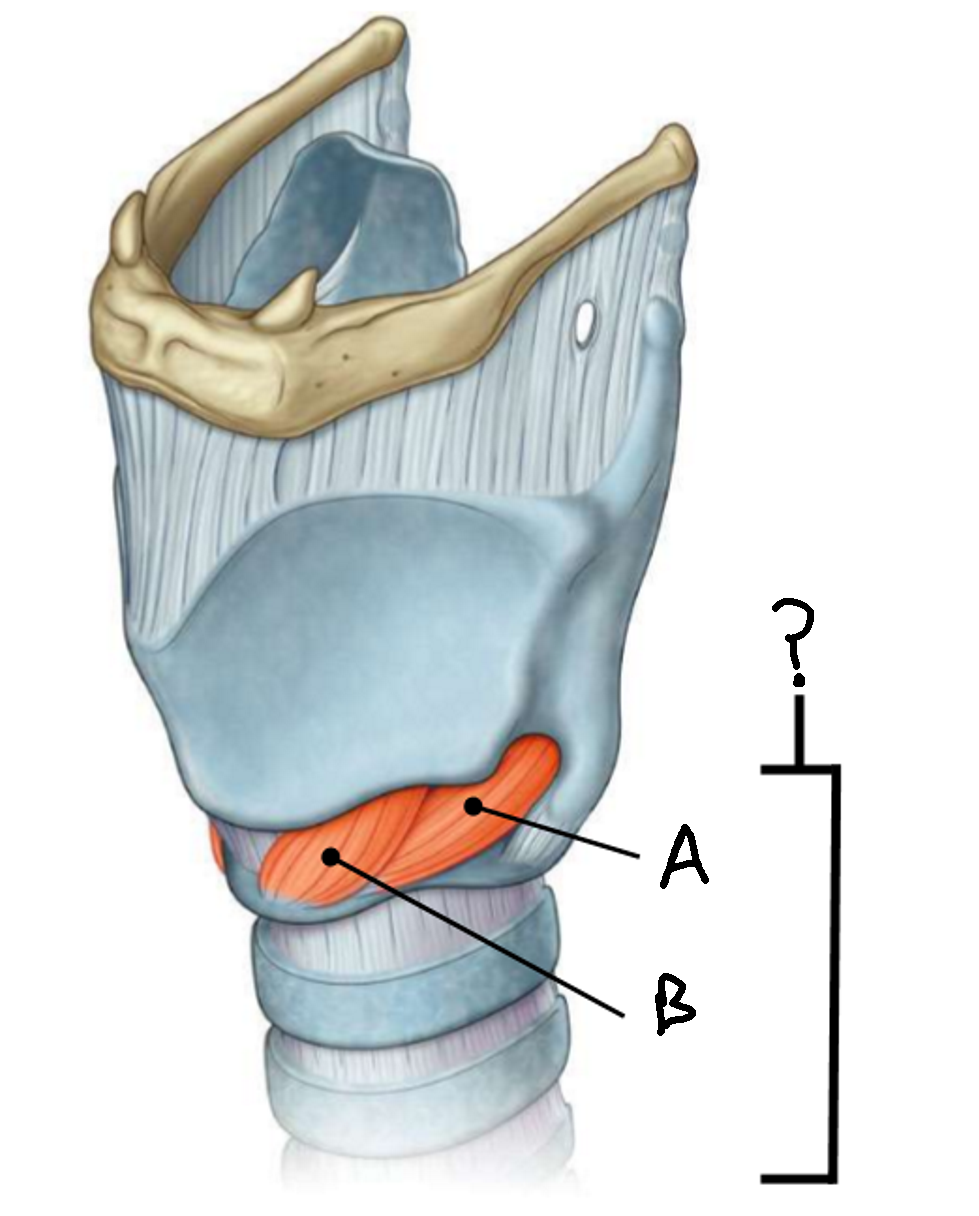
What muscle is this?
cricothyroid
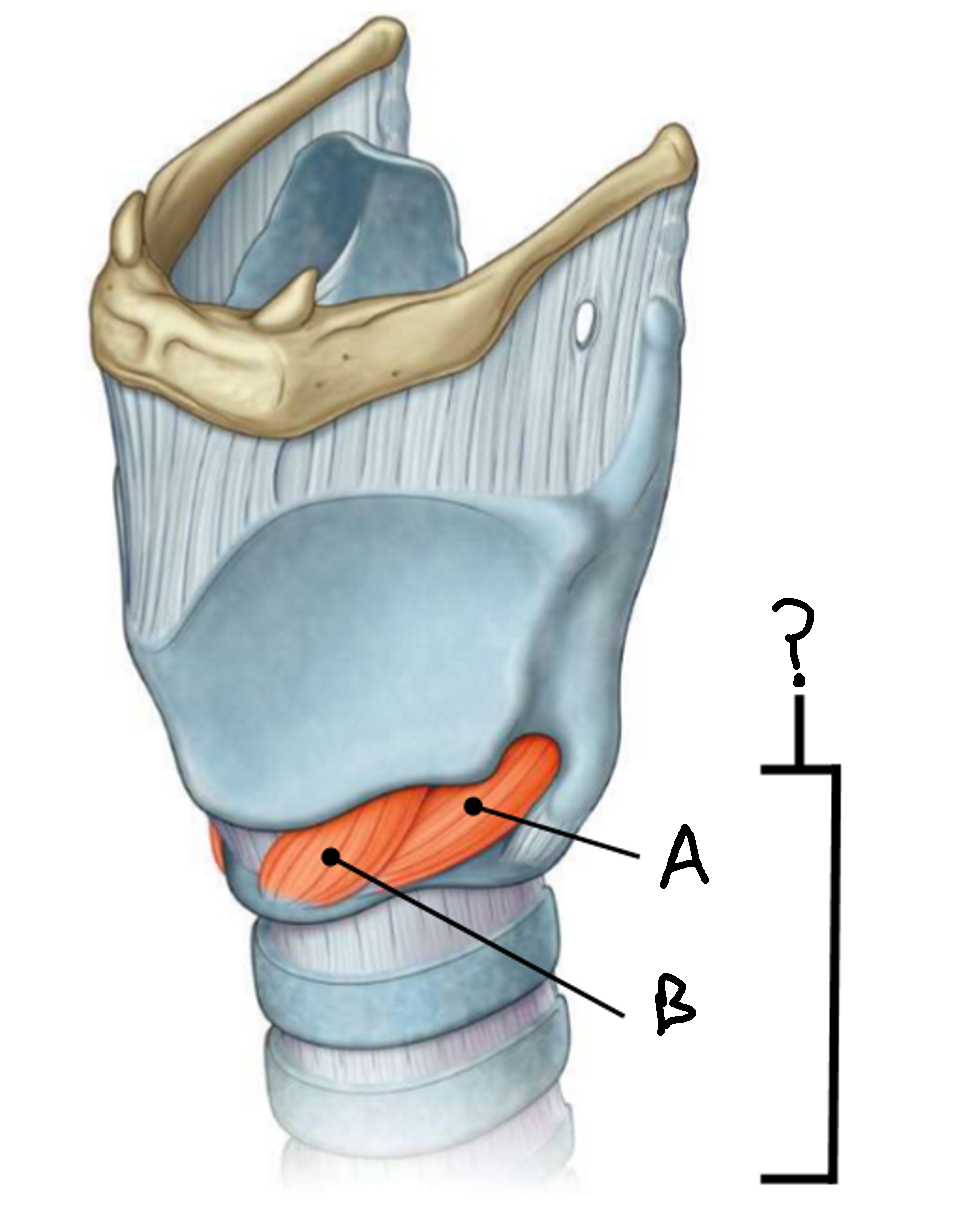
What is part A of this muscle?
oblique part
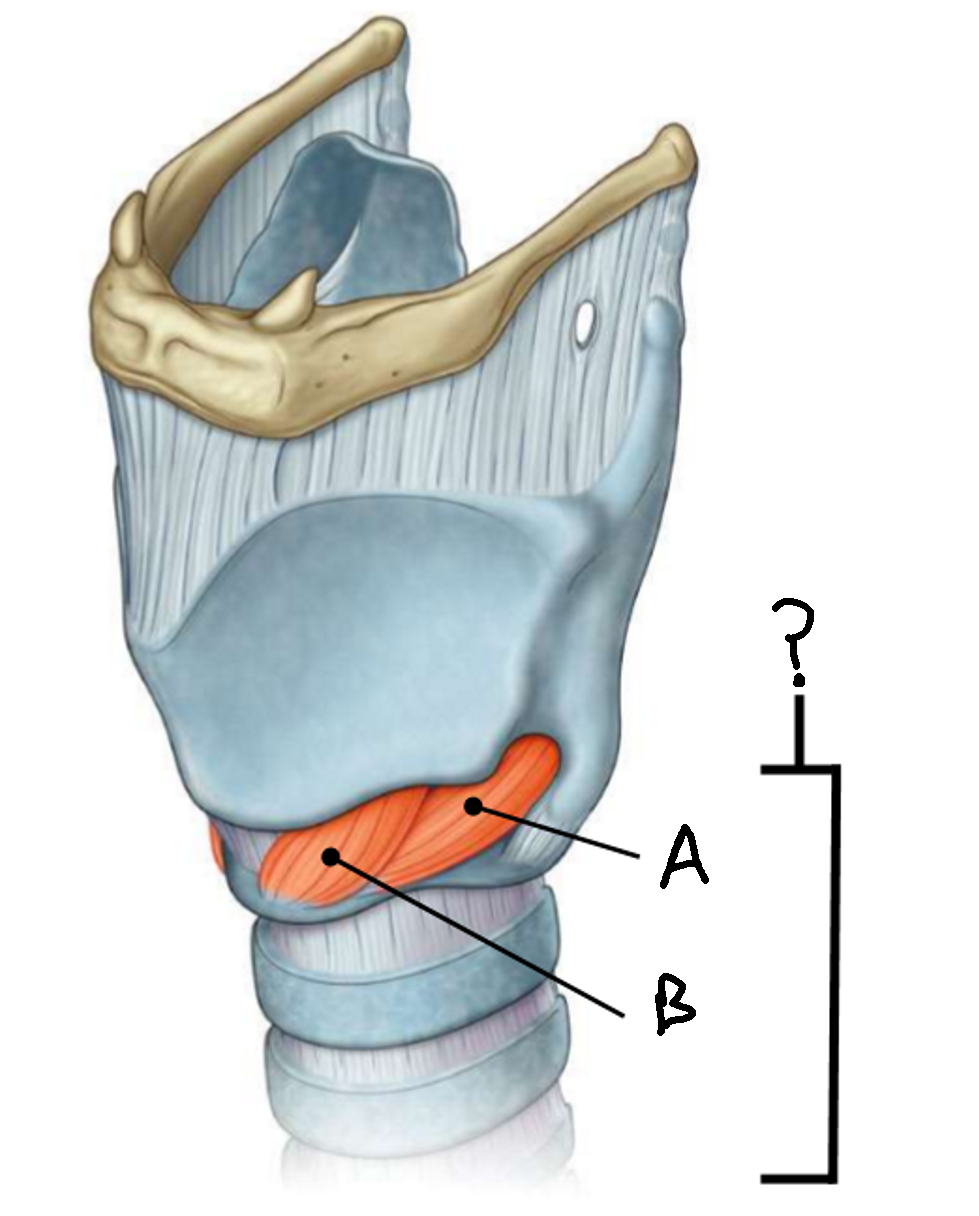
What is part B of this muscle?
straight part
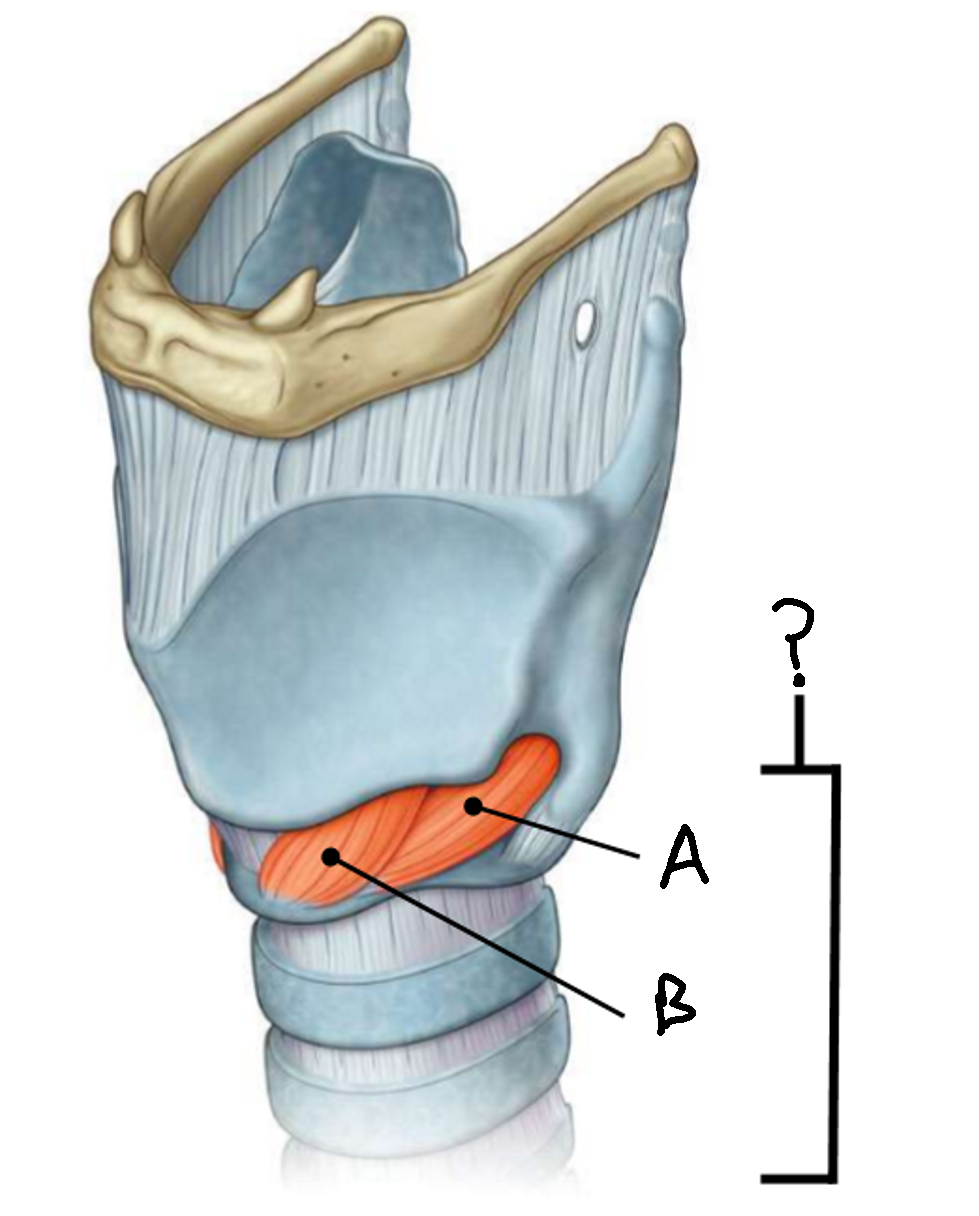
What are the attachments of this muscle?
anterolateral surface of cricoid cartilage → inferior border of thyroid cartilage
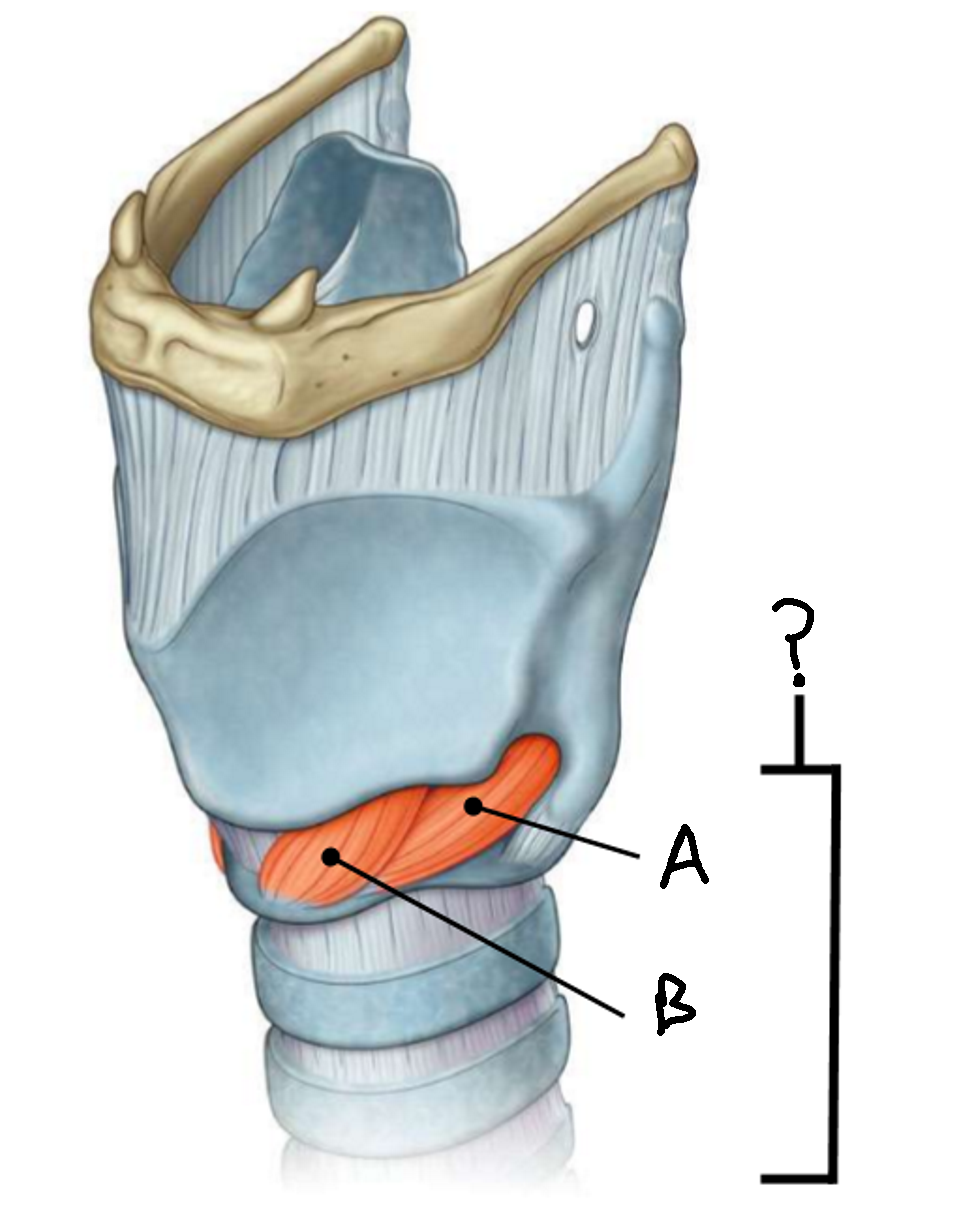
What is the function of this muscle?
moves the thyroid cartilage forward and down, moves the cricoid cartilage, tenses the vocal liagments
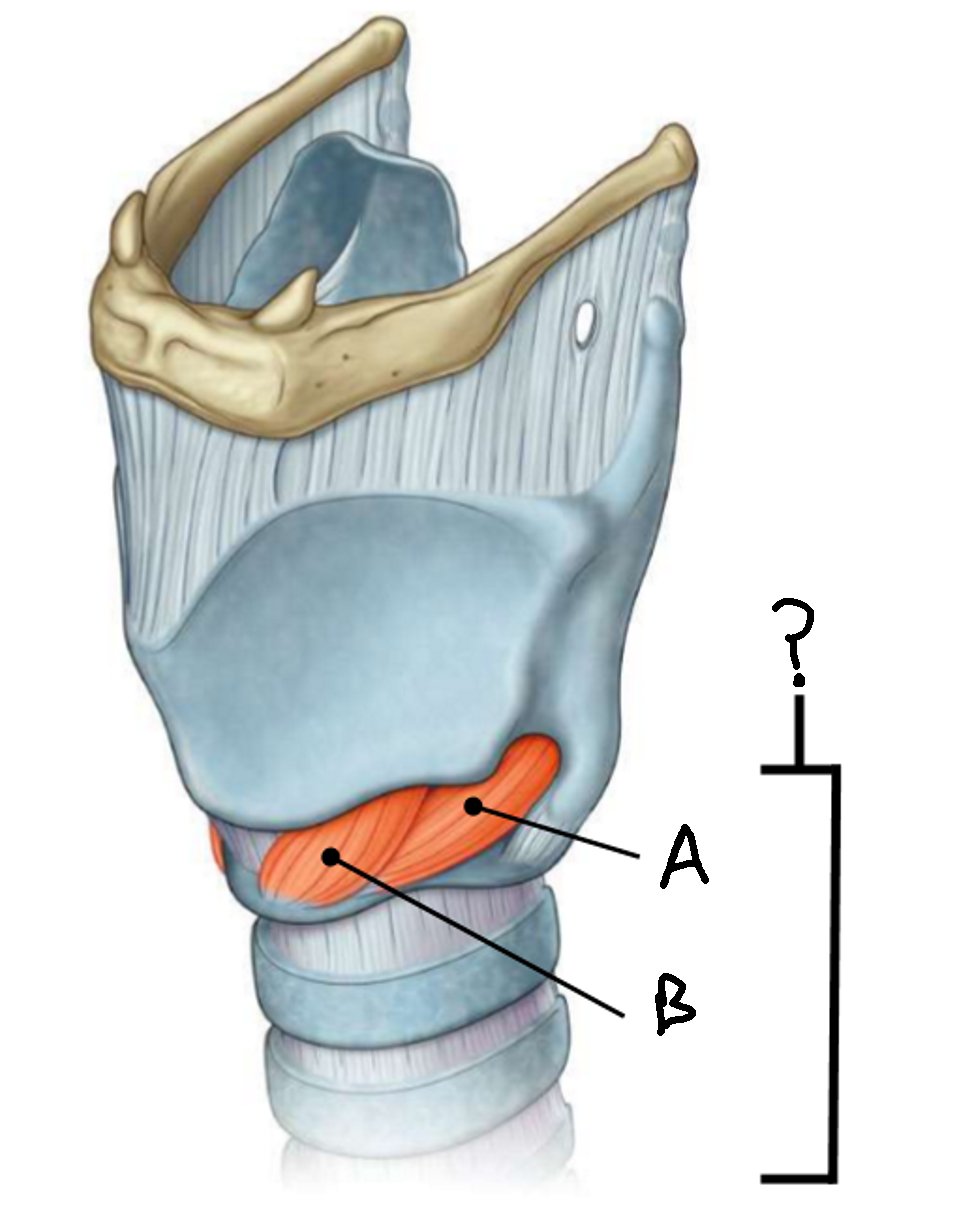
What innervates this muscle?
superior laryngeal nerve
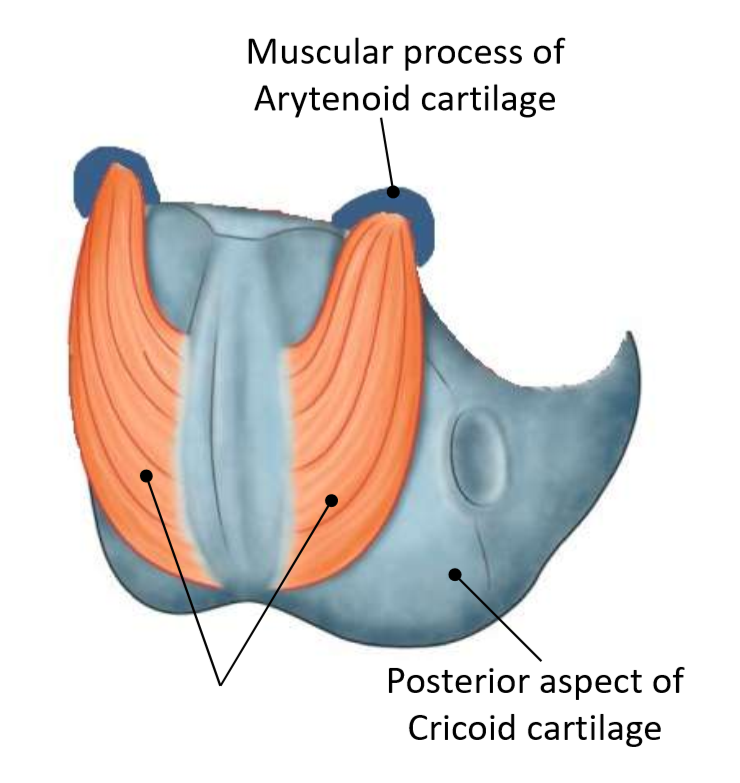
Which muscle is this?
posterior cricoarytenoid
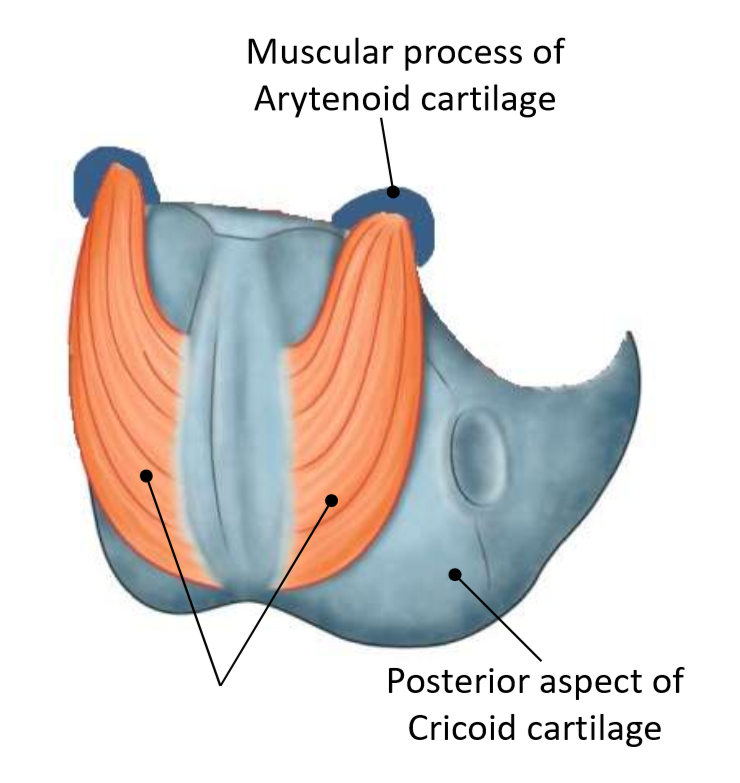
What is the function of this muscle?
abducts and laterally rotates the arytenoid cartilages to open the rima glottidis
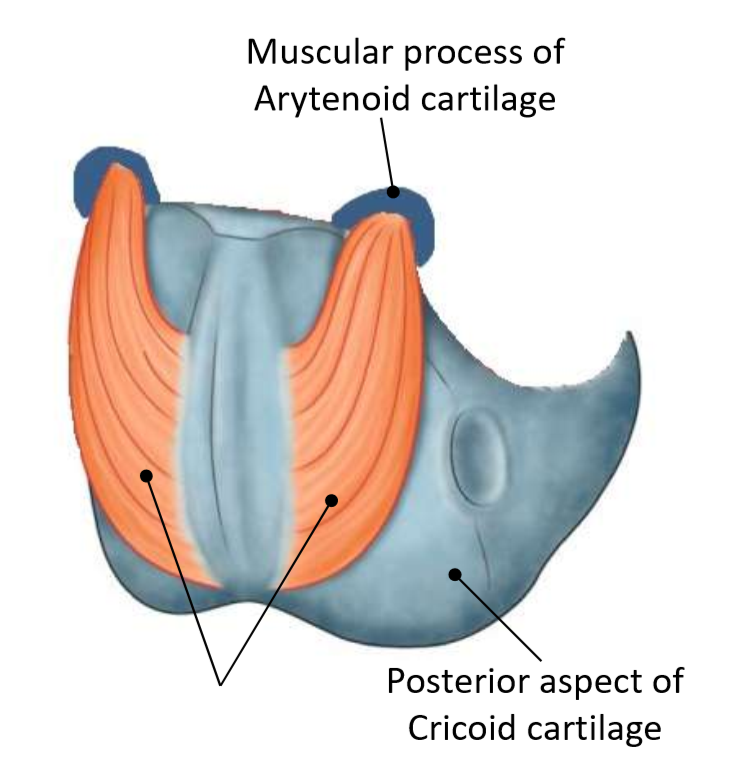
What innervates this muscle?
recurrent laryngeal nerve of vagus
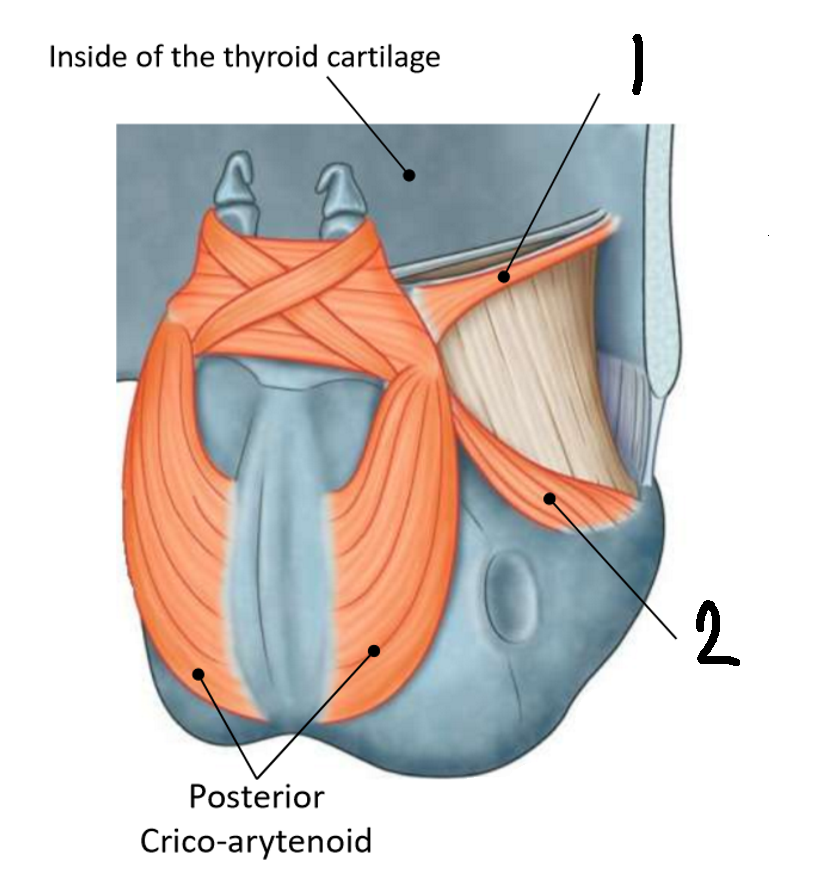
Which muscle is 1?
vocalis
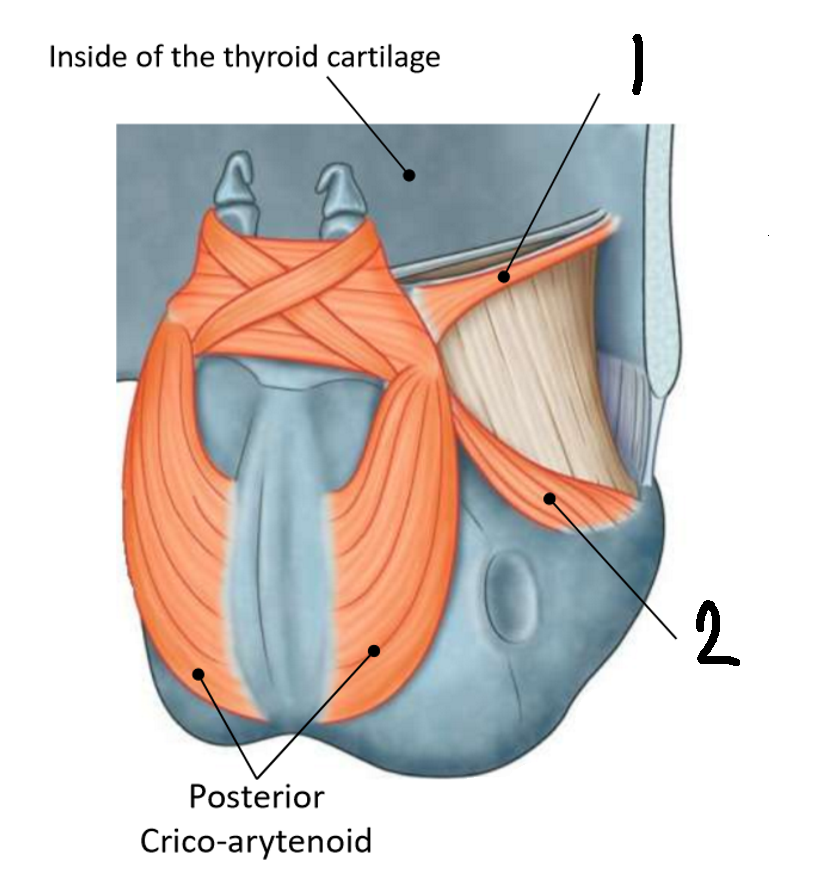
What is the function of 1?
adjusts tension of vocal folds
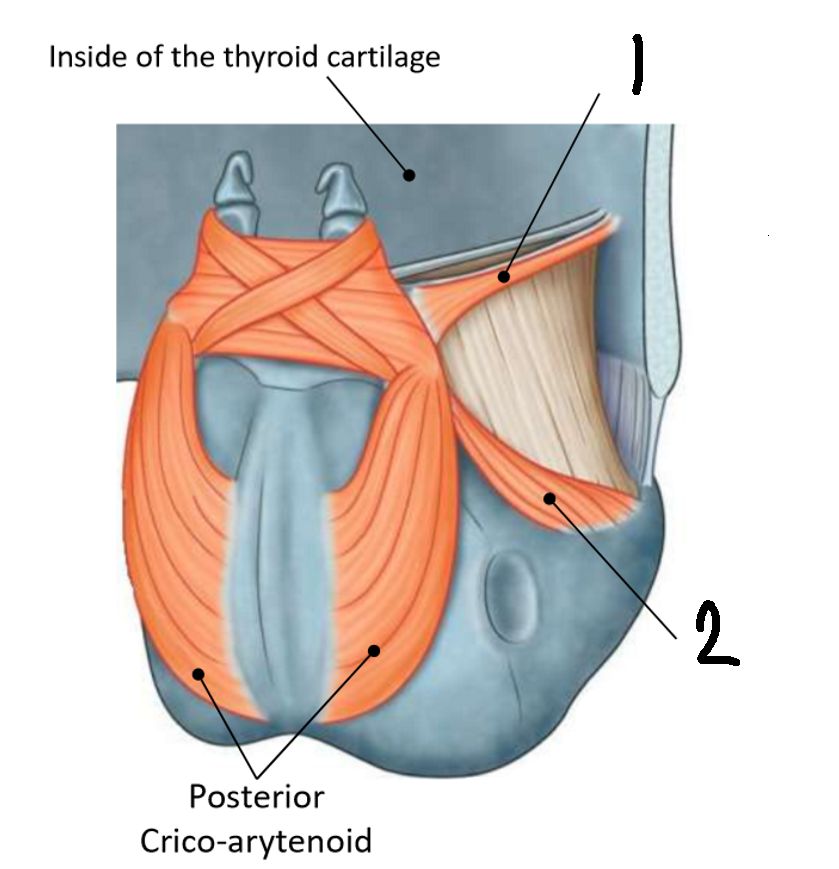
Which muscle is 2?
lateral cricoarytenoid
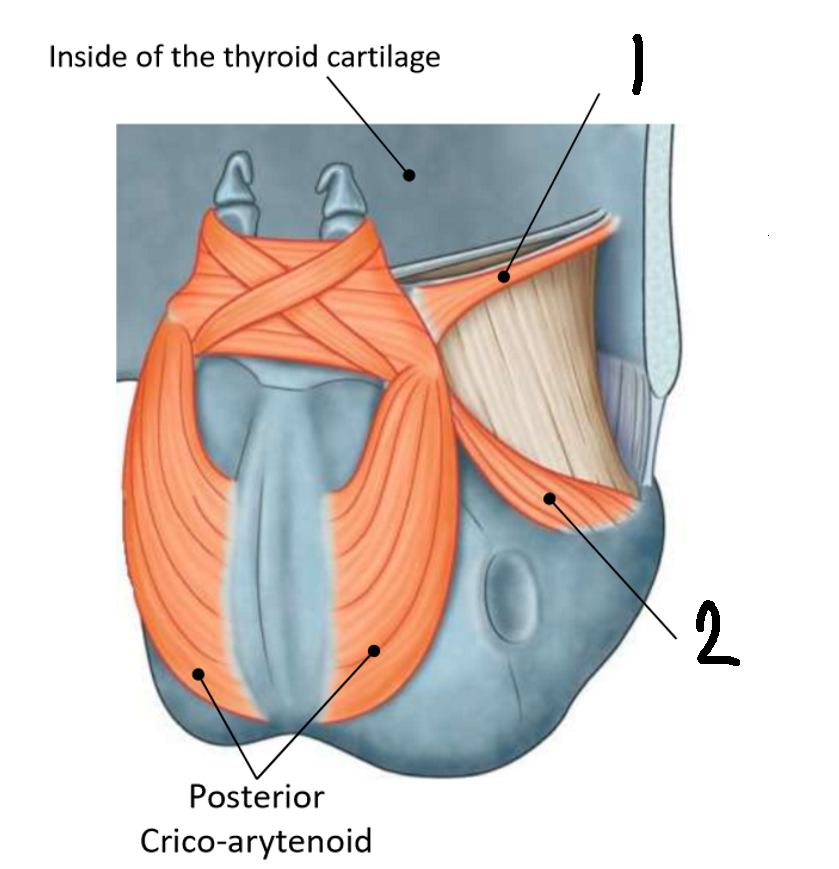
What is the function of 2?
internally rotates the arytenoid cartilage to adduct the vocal folds
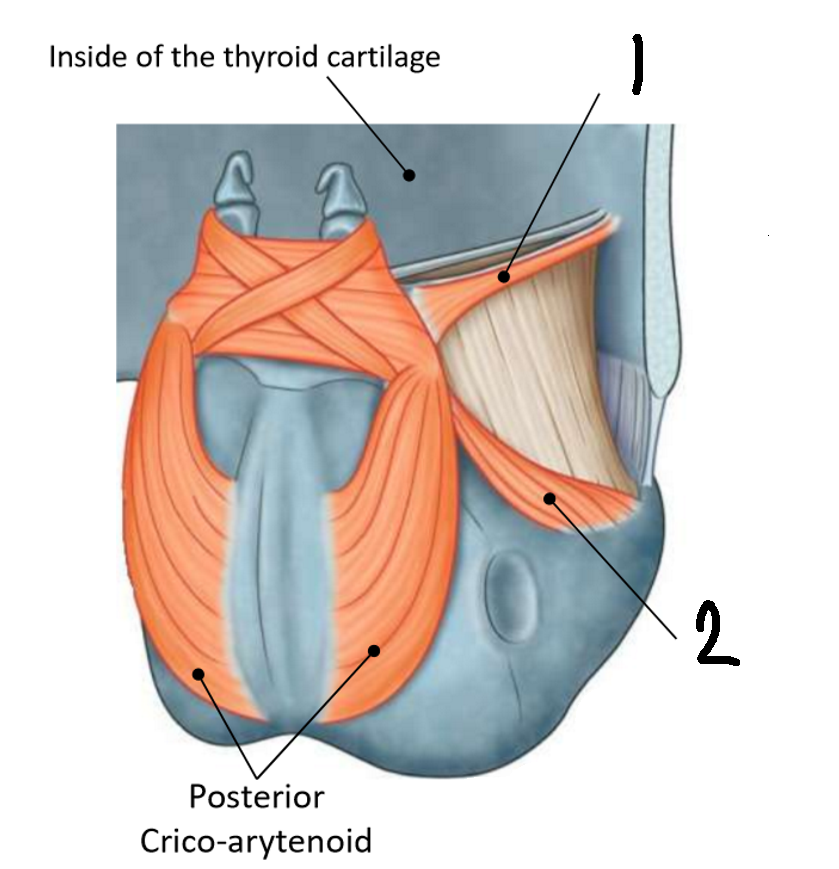
What innervates these muscles?
recurrent laryngeal nerve of vagus
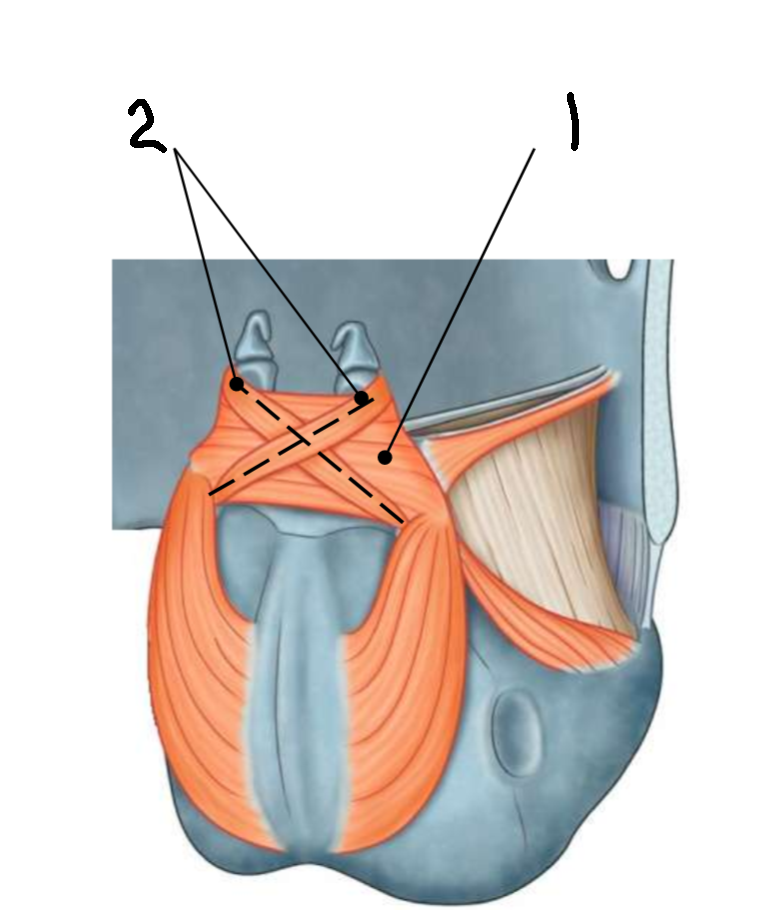
Which muscle is 1?
transverse artenoid
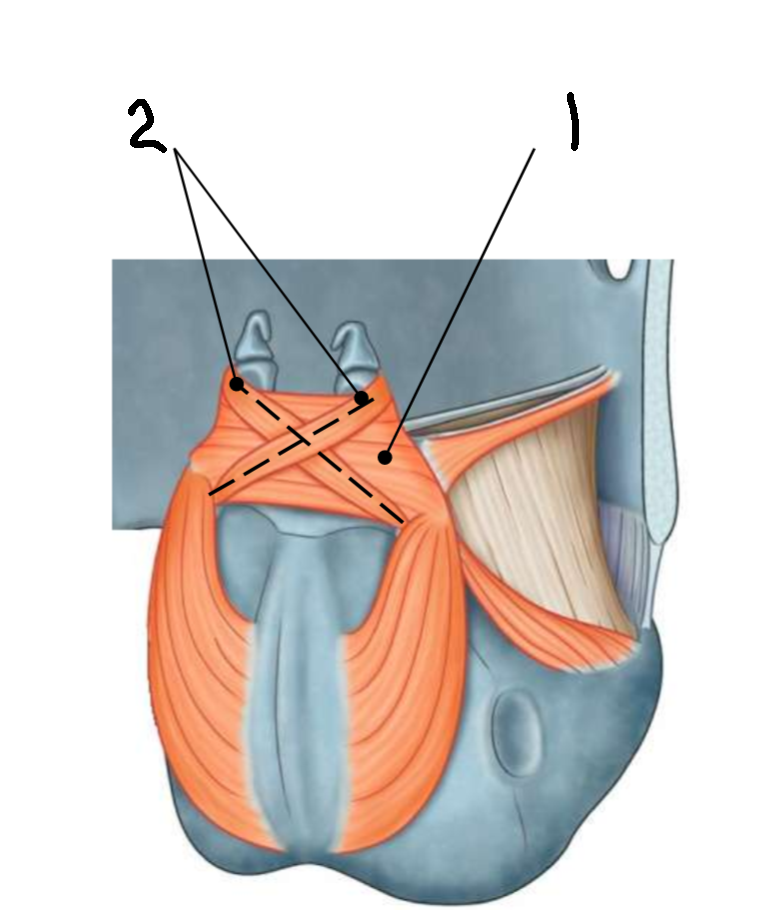
What is the function of 1?
adducts the arytenoid cartilages
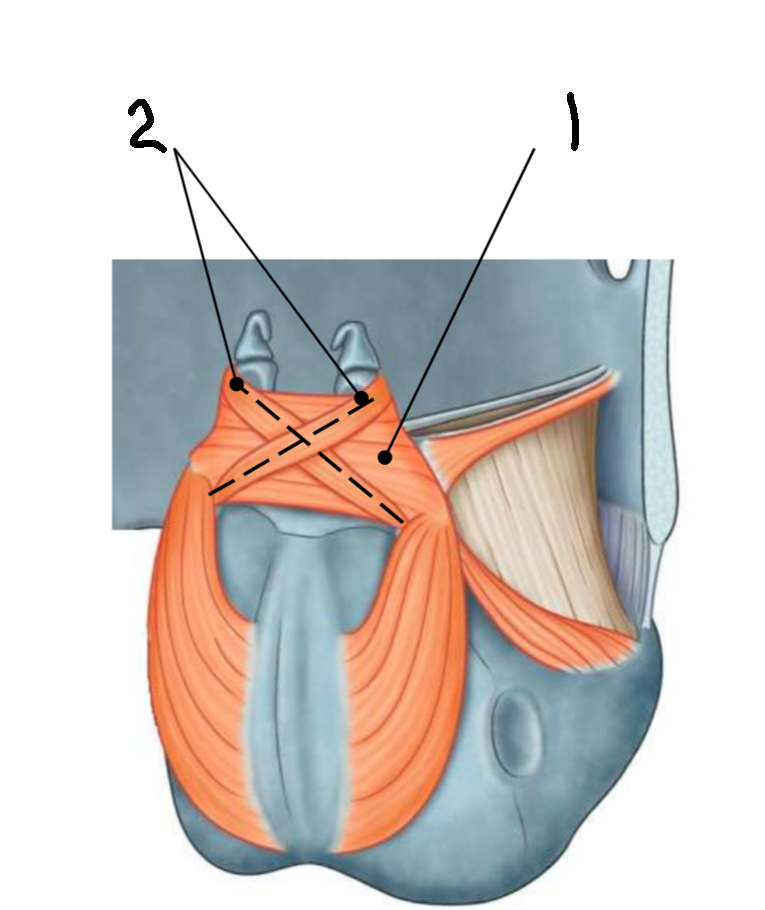
Which muscle is 2?
oblique arytenoids
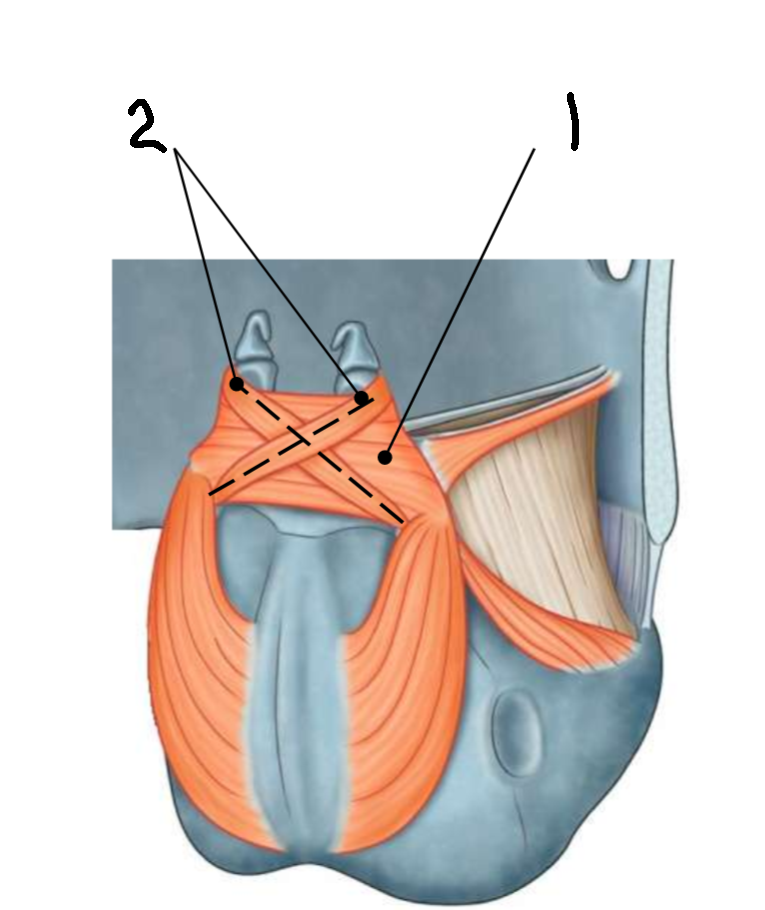
What is the function of muscle 2?
shortens the distance between the arytenoids and the epiglottis

What innervates these muscles?
recurrent laryngeal nerve of vagus
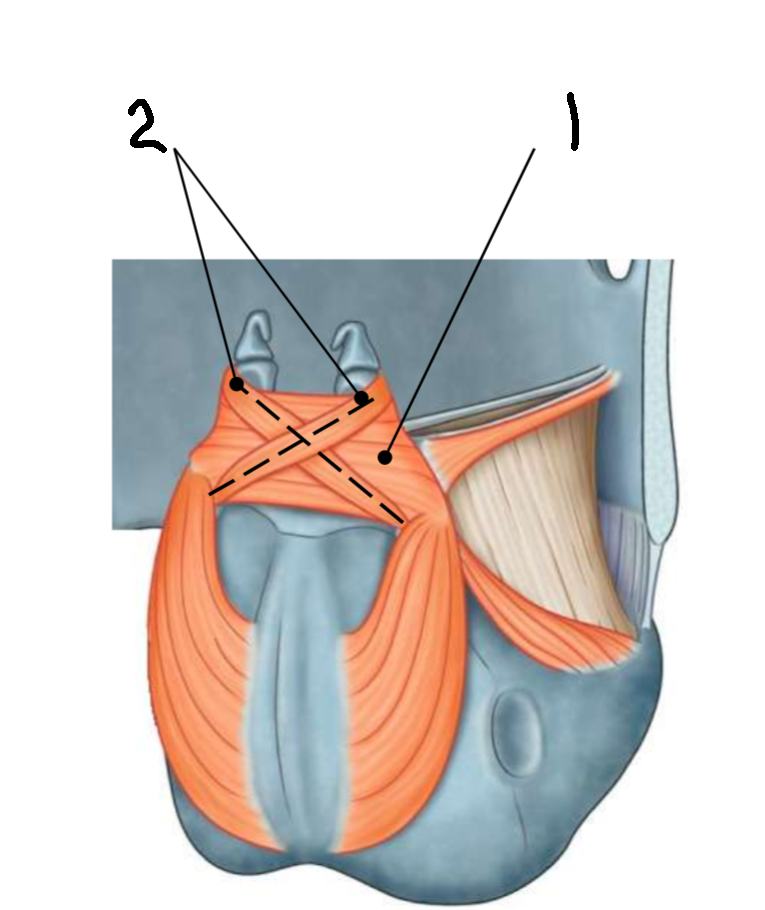
What happens when muscle 1 works with the aryepiglottic and the thyroarytenoid?
they work as a sphincter to close the larynx while swallowing or coughing
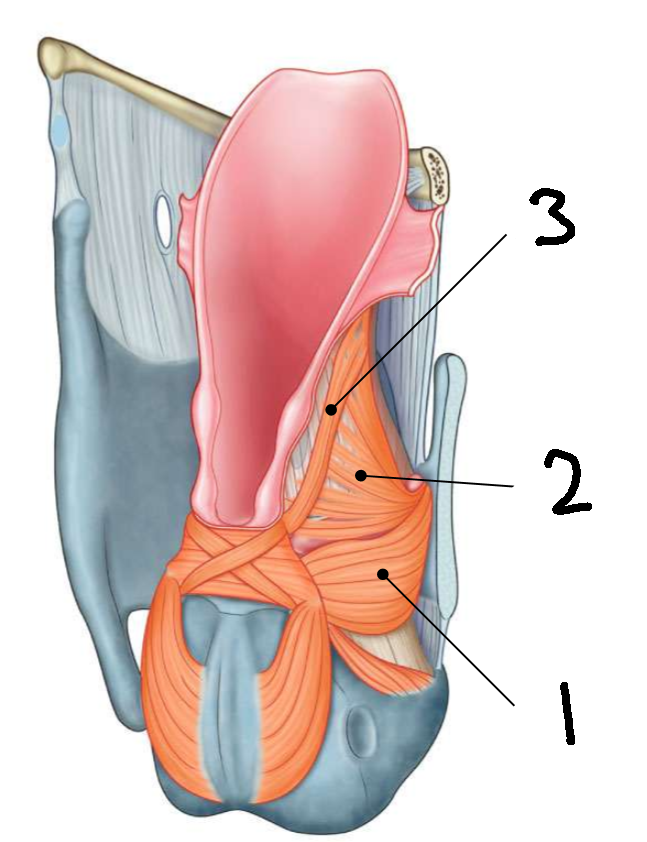
Which muscle is 1?
thyroarytenoid proper
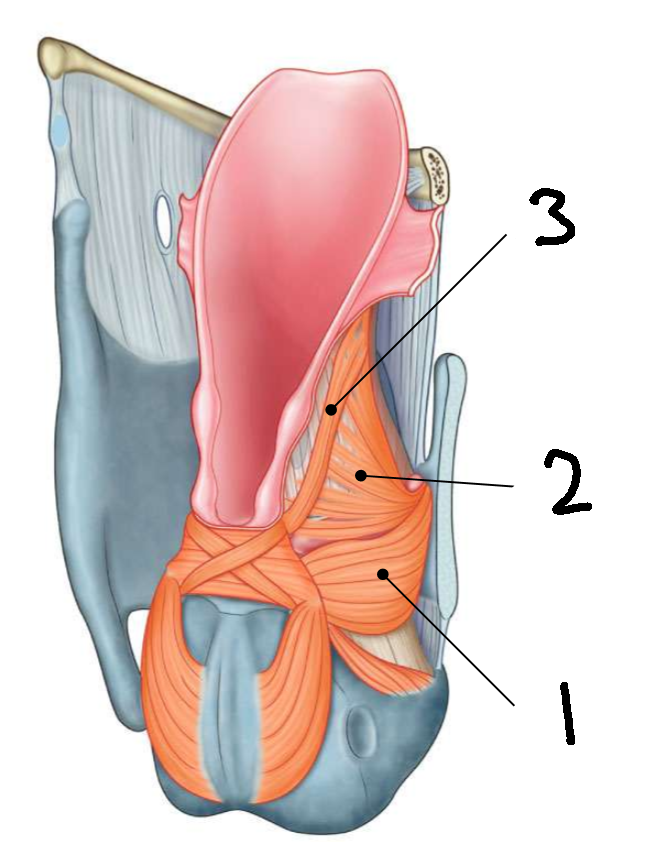
Which muscle is 2?
thyroepiglottic part of thyroarytenoid
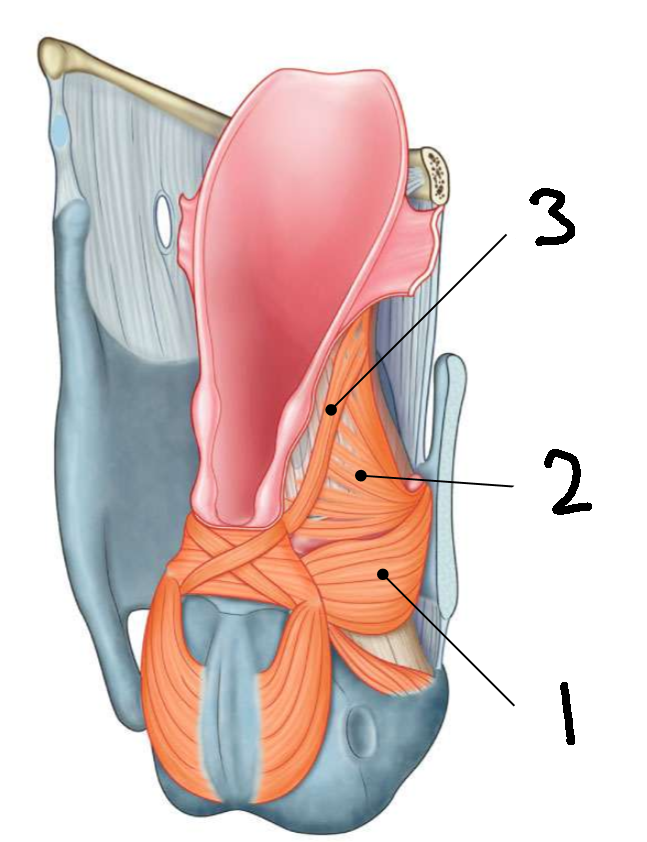
Which muscle is 3?
aryepiglottic part of oblique arytenoid
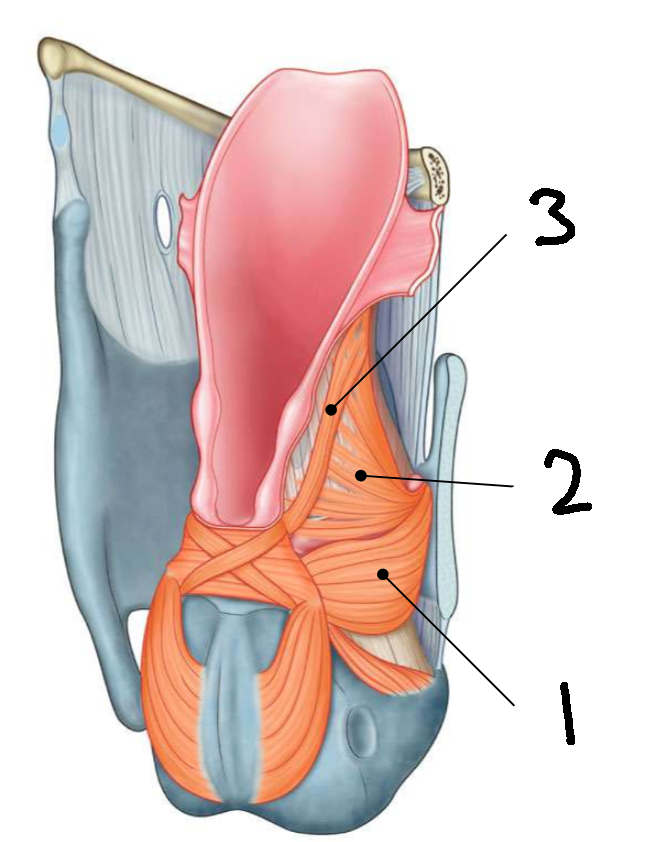
What is the function of these muscles?
sphincter of the vestibule, narrows the laryngeal inlet, relaxes the vocal folds
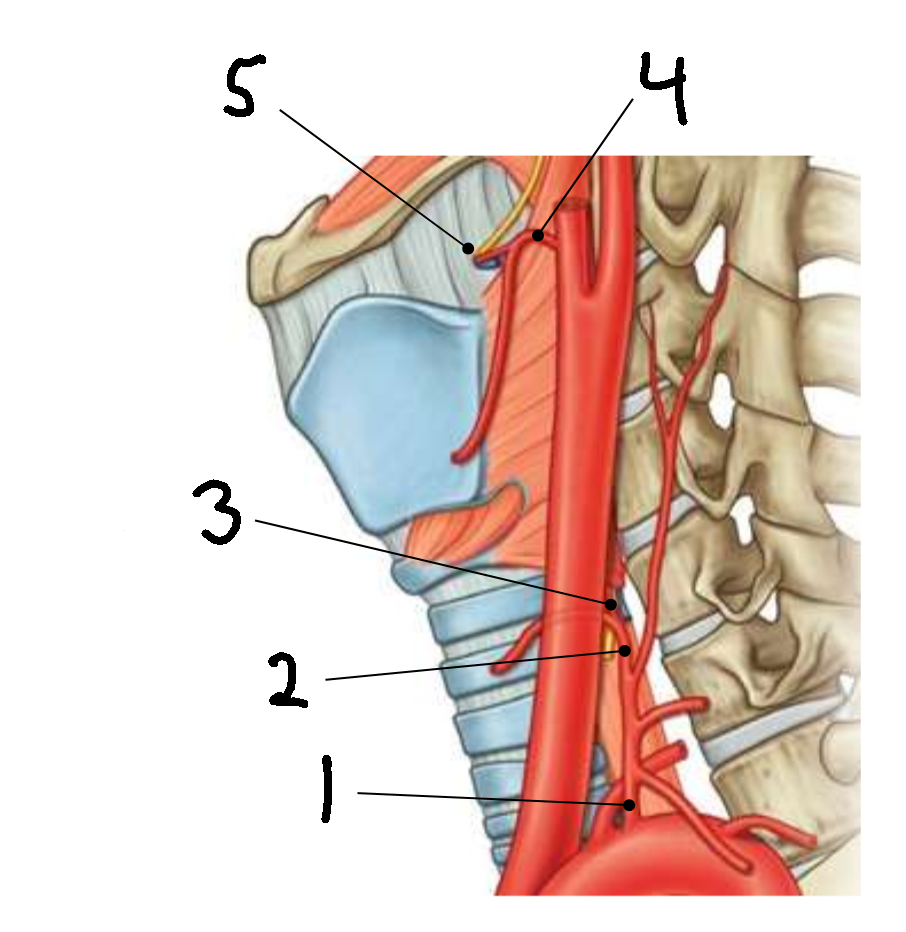
What is 1?
thyrocervical trunk
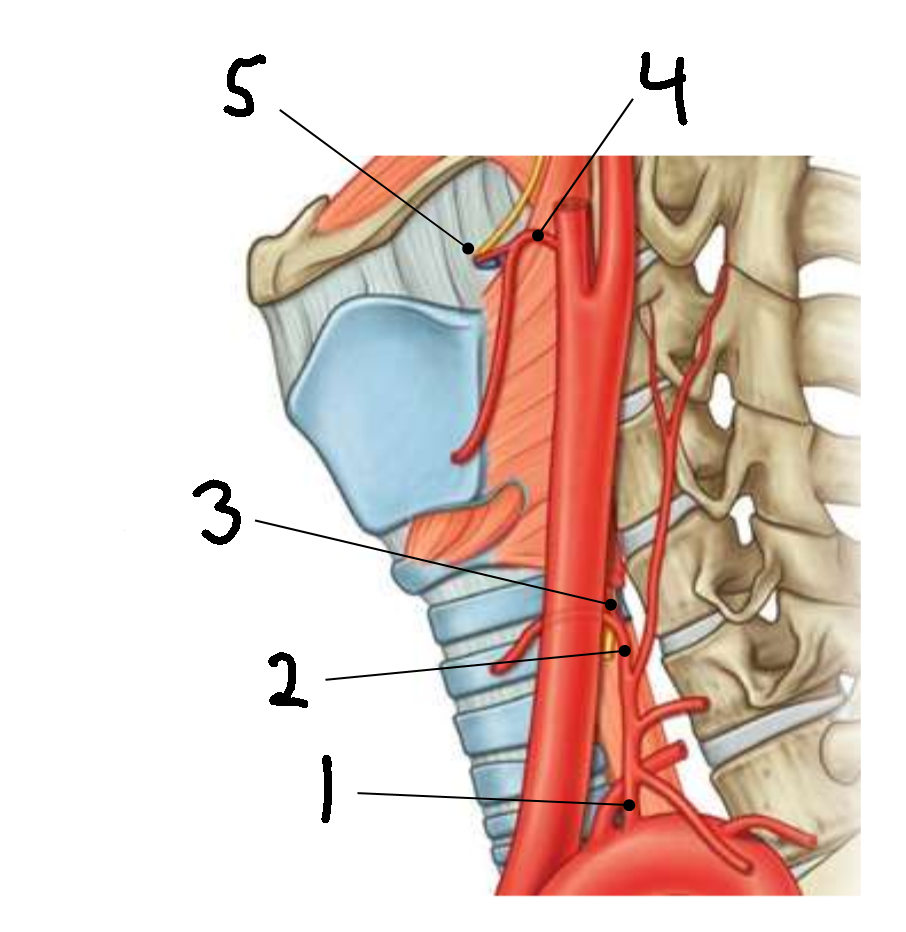
What is 2?
inferior thyroid artery